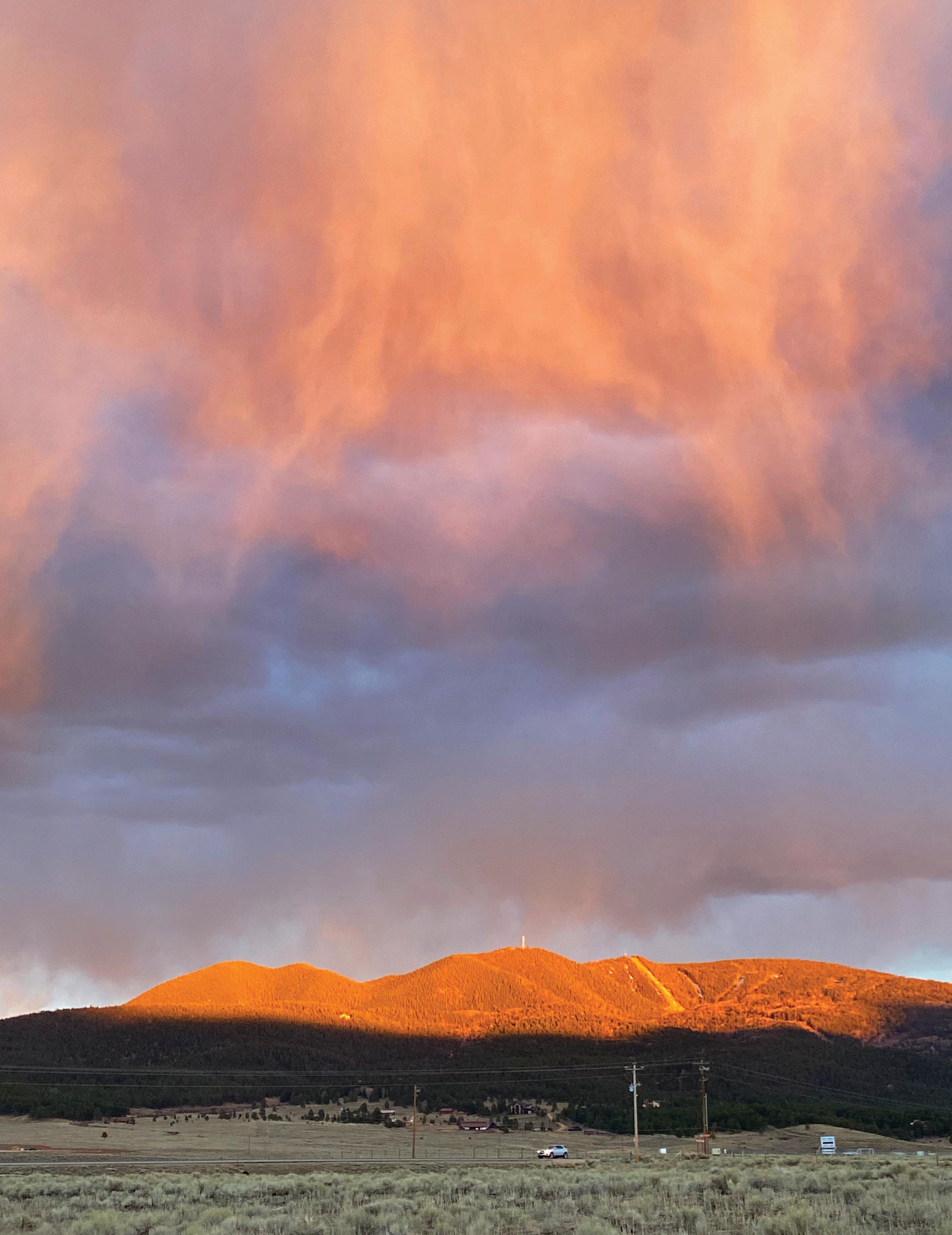
FLOATING WITH THE RIVER RUNNERS
OUR AFFINITY WITH OLD TRUCKS
INVESTIGATING STOLEN GUITARS
THE LEGACY OF ALDO LEOPOLD
a journal of life in the southern
A publication of Outpost Alliance
rockies
SUMMER | FALL 2024
+
PREMIER ISSUE
THE LAST UNTAPPED MOUNTAIN SKI TOWN ANGEL FIRE



 Gabriel Traister Robbie Puskarich
Gabriel Traister Robbie Puskarich
Our spirits are kindred to Mother Nature.
Each is made with pure Red River water, and distilled in the mountains at 8,570’. This produces flavors as sweet as the fresh air, mountain views, and skies around you. When your day closes, open up your night.




619 E MAIN ST, RED RIVER, NM 87558 | REDRIVERDISTILLERY.COM
MAY YOUR TRAIL END IN A BOTTLENECK.
IN THIS ISSUE
SUMMER/FALL 2024
FEATURES
14
UNDISCOVERED ANGEL FIRE
As ski towns throughout the Rockies experience a surge in popularity, it is the wise who find themselves farther south in New Mexico where the air is pure, the land is affordable, and the lifestyle is New Mexico True. In this article we explore Angel Fire, a stunning high-elevation jewel of the Southern Rockies.
24 WHITEWATER SYMPHONY
The Rio Grande River offers spectacular whitewater sports activities. The region has long attracted visitors who are looking for the adrenaline rush of fast water careening through stunning Rio Grande Gorge scenery. Come along to explore what makes this wild river hum.
30
FIFTY SHADES OF RUST
Mountain towns and old pick-up trucks with weathered patina go together like peanut butter and jelly between the heels of the loaf. That’s a darn good sandwich right there. Let’s take a bite and see what the fuss is all about. P100
Rio Costilla Park & Campground, which is owned and operated by the Rio Costilla Cooperative Livestock Association, offers stunning campsites along both the Costilla and Latir Creeks. The area is a popular destination for angling and camping. Read more about this northern New Mexico region in our Adventure article about Valle Vidal.

4 ENCHANTED OUTPOST | SUMMER/FALL 2024
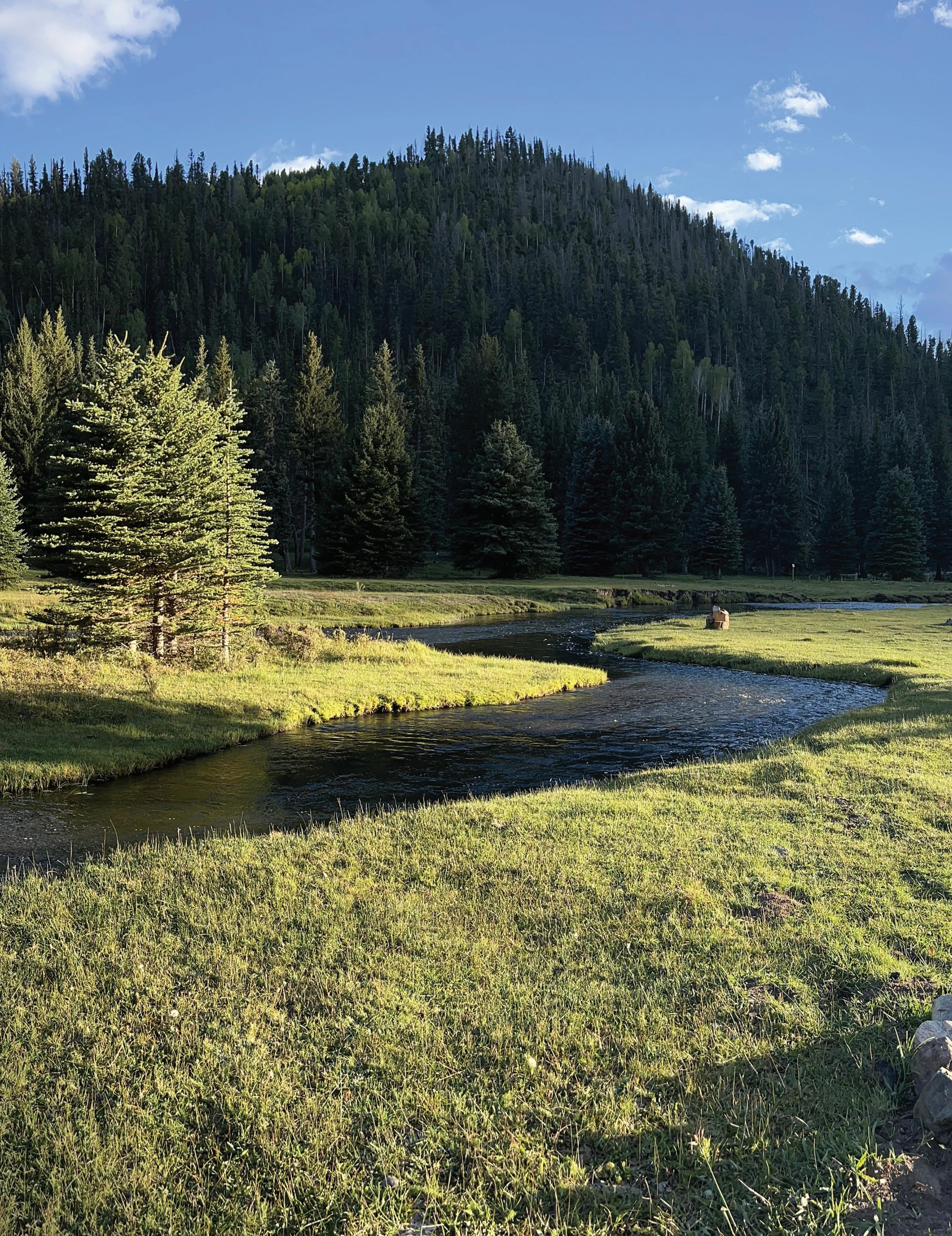
MATTRESSES,
FURNITURE,
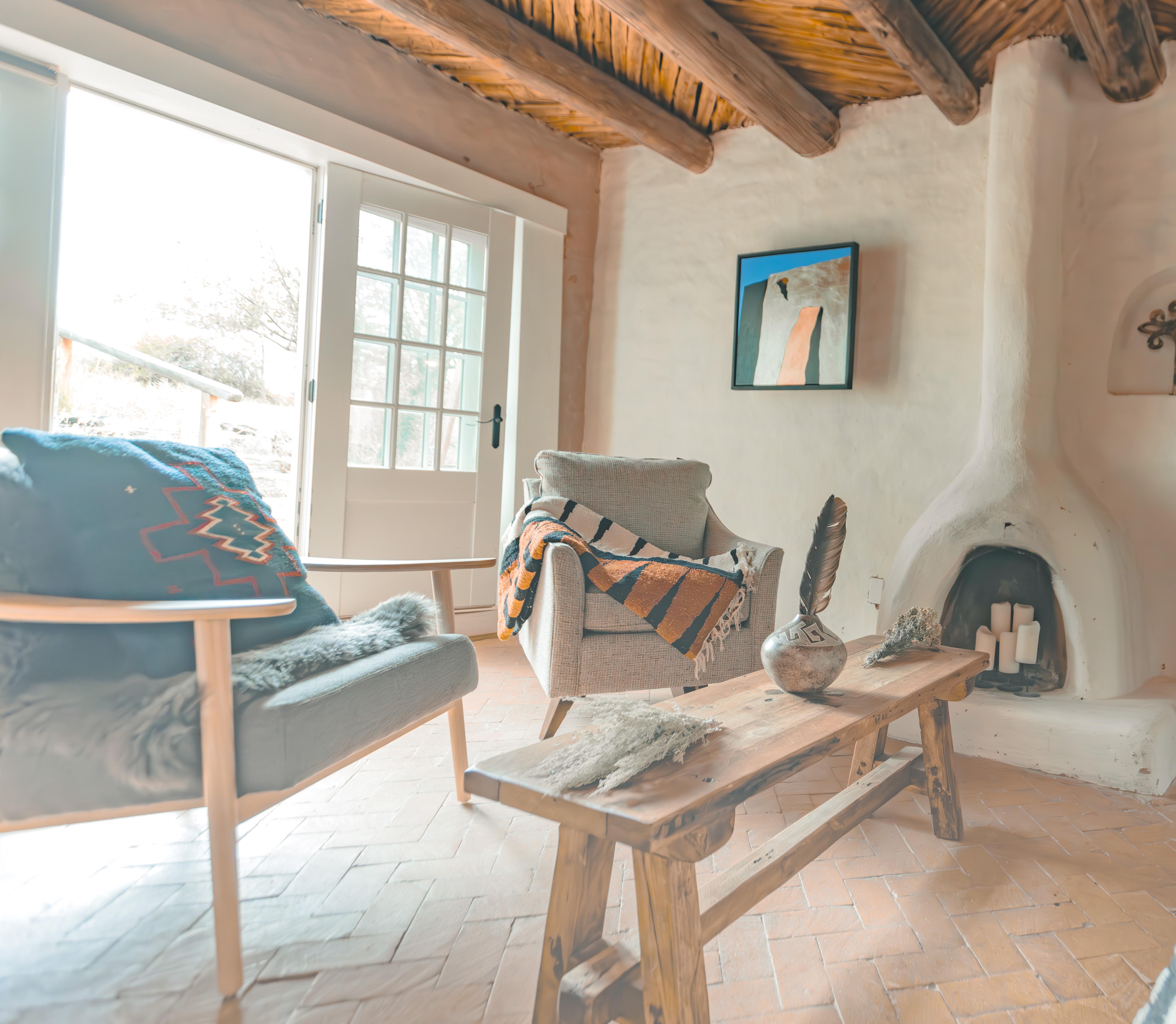
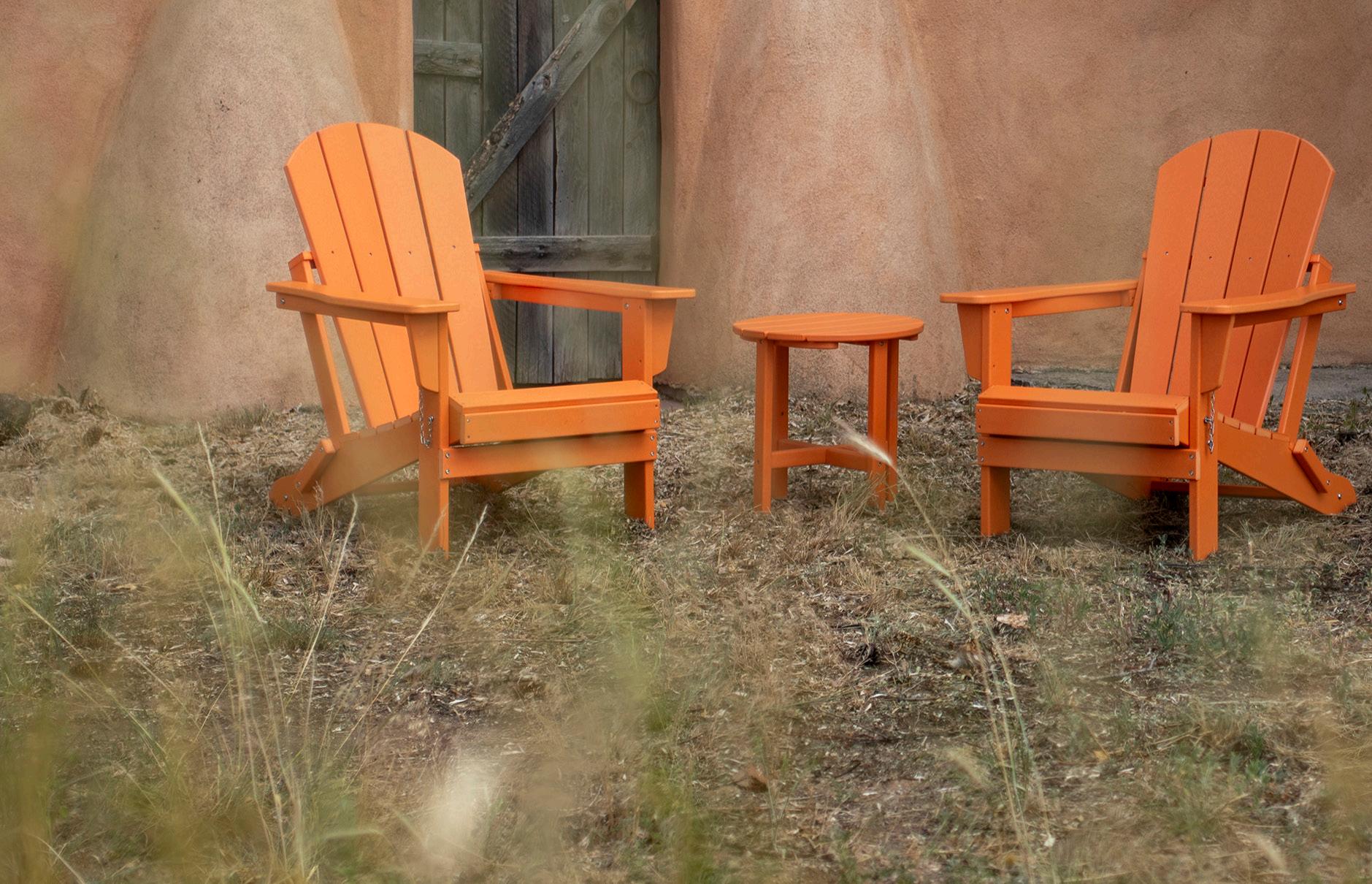

BEDDING,
GIFTS, and PROVISIONS. Take the Taos Lifestyle home.



LET IT MOVE YO U. TAOSLIFESTYLE.COM 815 PASEO DEL PUEBLO SUR TAOS, NEW MEXICO 575 758 5885
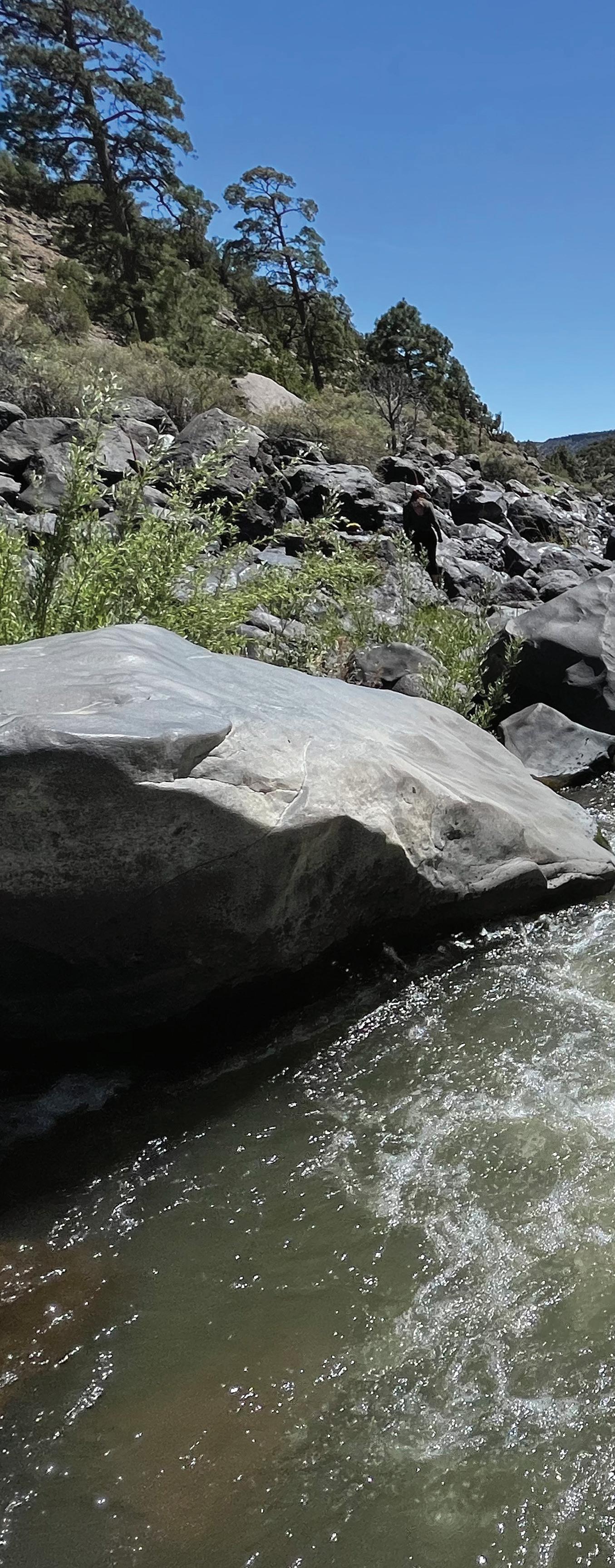
8 ENCHANTED OUTPOST | SUMMER/FALL 2024 The confluence of the Red River with the Rio Grande River can be visited by hiking into the gorge within Rio Grande Del Norte National Monument. The monument is accessed via the main entrance located north of the village of Questa on Highway 522. Read more about the monument in our article, La Junta, Where The Red River Meets The Rio Grande. IN THIS ISSUE SUMMER/FALL 2024 OUTLOOK 34 Capturing the View From Here WAYPOINTS 38 READ: Fire Season by Philip Connors 38 LISTEN: Encounter Culture Podcast 39 WATCH: Overland Valle Vidal Episode 39 TASTE: Taos Cow’s Exotic Flavors 40 CALENDAR: Featured Regional Events LIFESTYLE 44 Style Trends in Dwelling Architecture 50 The Wearable Art of Six Hand Hat Co. 55 Summertime Mountain Traditions COMMUNITY 60 Investigating Stolen Guitars 64 A Salty Little Sweet Shop’s Holli Everson 68 Treasure Hunting in Cimarron CULTURE 74 The Legacy of Aldo Leopold 80 Idlewild’s Klondike Mine 82 New Mexico’s Grape Growing Legacy ADVENTURE 86 La Junta: Where The Red Meets the Rio Grande 90 High Elevation Hike To Middle Fork Lake 100 Auto Tour Through Valle Vidal ENVIRONMENT 112 Rio Fernando de Taos Revitalization 115 After the Wildfires 118 Photo Journal: Geraint Smith ENDCAP 129 A Last Look for the Season P86

A word from the publisher.

The release of our premier issue of Enchanted Outpost is, for me, the realization of a long-held dream.
For more than 30 years I have honed my skills at graphic design, branding, photography, corporate and creative writing, and every aspect of what it takes to publish a full-scale regional lifestyle magazine.
Many of you may know me through my popular outdoor adventure YouTube Channel, 4XPEDITION. Filming and editing over 150 quality videos—frequently watched by as many as 100,000 monthly viewers from over 50 countries—has given me tremendous insight into creating quality content. It’s allowed me to perfect my skills in the art of emotionally enriching, informative, and entertaining storytelling.
So, when I finally shared with my wife Heather that I wanted to publish a magazine about northern New Mexico, including the area encompassing and surrounding the Enchanted Circle, she looked at me wide-eyed. Though she had a lot of questions, she was immediately supportive of my vision. I was, and continue to be, driven to utilize my expertise to influence positive and responsible economic growth and community connection where I live.
Heather and I spent the past several years renovating our own home on five acres within the area. In the spring of 2022, we were evacuated for over two weeks due to the Hermits Peak and Calf Canyon Fire. I wrote an essay about that experience that was published in the Sunday edition of the Santa Fe New Mexican
In June of that same year, we were allowed back home, where we stood on our front deck to be wed before one hundred of our friends and family.
We’re committed to investing in our community. Because of this, we have considered many different options for starting a business. But, at the end of the day, what I’m most passionate about is inspiring viewers and readers through storytelling.
Enchanted Outpost is the culmination of everything I love doing—and the things we love to do are the things we tend to do best.
I hope that what you find within the pages of this magazine inspires you to be here. I hope the stories we share spark your curiosity, give you satisfaction, bring you joy, and ultimately paint a picture of this region as a community of unique and interesting people; a place with stunning landscapes and a land rich in culture, history, and tradition.
If you would like to participate in what we are doing at Outpost Alliance, feel free to reach out. We invite your collaboration. If you would like to support our publication, I invite you to advertise, submit a unique story idea, share your stunning photography for publication, or even just give the magazine to a friend to help expand our reach. All of this is not only welcome—it’s necessary for our survival and growth.
If you see me (or Heather) around the community, at a local trailhead, or enjoying a brew at a local brewery, please make an introduction. After all, home is a place where we’re surrounded by friends.
Scott Leuthold PRESIDENT & CO-FOUNDER

10 ENCHANTED OUTPOST | SUMMER/FALL 2024
to our Premier Issue of Enchanted Outpost
Welcome
signpost
A JOURNAL OF LIFE IN THE SOUTHERN ROCKIES
Publisher, Creative Director, and Designer
Scott Leuthold
Copy Editor
Lauren Wait
Contributing Writers
Heather Leuthold, Victoria Swanson, Lorry McQuatters
Contributing Photographers & Artists
Geraint Smith, Mark Stebnick, Damon Leblanc, Angel Fire Resort, Francesco Ungaro, F. Hektor, Alfo Medeiros, Dave Hensley, Taos Jazz Bebop Society, Bill W. Curry, Heather Leuthold, Scott Leuthold
Advertising Sales
Scott Leuthold
advertise@enchantedoutpost.com
To contribute articles or photography for consideration in Enchanted Outpost or to suggest ideas, please complete the contact form on our website.
Visit us on-line at: enchantedoutpost.com
Enchanted Outpost is distributed through a variety of outlets throughout northern New Mexico and southern Colorado and by mail through subscription service.
OUTPOST ALLIANCE, LLC and Enchanted Outpost
PO Box 1650
Angel Fire, New Mexico 87710
©2024 Outpost Alliance, LLC. All rights reserved.
No part of this publication may be reproduced, distributed, or transmitted in any form or by any means, including photocopying, recording, digital scanning, or other electronic or mechanical methods, without the prior written permission of the publisher, except in the case of brief quotations embodied in critical reviews and certain other noncommercial uses permitted by copyright law. For permission requests, please complete the contact form on our website.
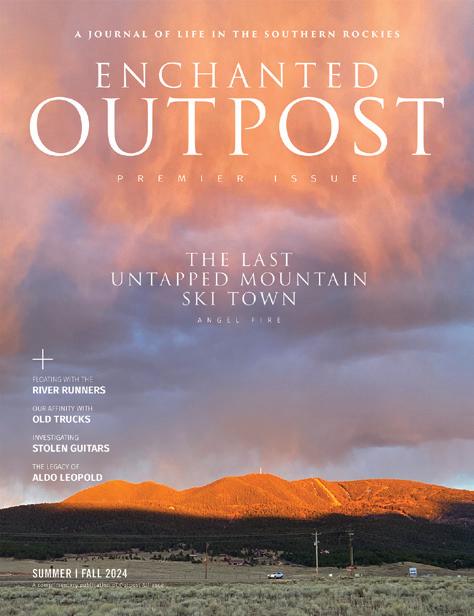
On The Cover
Ethereal clouds of a summer afternoon thunderstorm hang over Agua Fria Peak and Angel Fire Resort, creating a stunning scene illuminated by the setting sun.
PHOTO: Scott Leuthold
Featured Contributors

Heather Leuthold
Heather is an Angel Fire-based avid outdoor adventure traveler, trail runner, writer and nature photographer. She loves storytelling through her photo essays, inspiring people with her captured images in the details of objects and curiosities.

Victoria Swanson
Victoria loves to write inspiring and philosophical poetry, enjoys shooting photography, walking her longhaired Chihuahua, Ava, coffee, sunflowers, her Jeep, and exploring on her E-bike from her home in Cave Creek, Arizona.

Geraint Smith
Geraint is a landscape, nature, and wildlife photographer living in San Cristobal, New Mexico. He spent thirty-five years traveling and photographing the land, architecture, and people of the region and is respected as a fine art photographer and leading expert photo guide in Taos, New Mexico.

Lorry McQuatters
Lorry has a passion for beauty, fashion, and music. She is a full-time mother, mentor, and successful business owner. Away from work you’ll find her with the doors off of her Jeep, hair down, music rocking, embracing time with her son, and enjoying the great outdoors.
11 ENCHANTED OUTPOST SUMMER/FALL 2024 |

Outpost Alliance is the culmination of more than 30 years of award-winning experience in the realm of branding, marketing, and design. We’re storytellers to our core. We inspire through the use of graphic design, photography, video, animation, and writing. Our presentations shape perception, inspire action, and set the market standard.
FIRST IMPRESSION IS EVERYTHING.
We believe first impression is critical–with our clients, and with yours. How viewers perceive a brand determines the likelihood of conversion, retention, and repetition. We help our clients project and instill value. We build trust using strategic brand solutions that create meaningful connections with potential and existing customers. Meaningful connections create lasting impressions. We’re your new digital creative agency in Northern New Mexico and beyond.
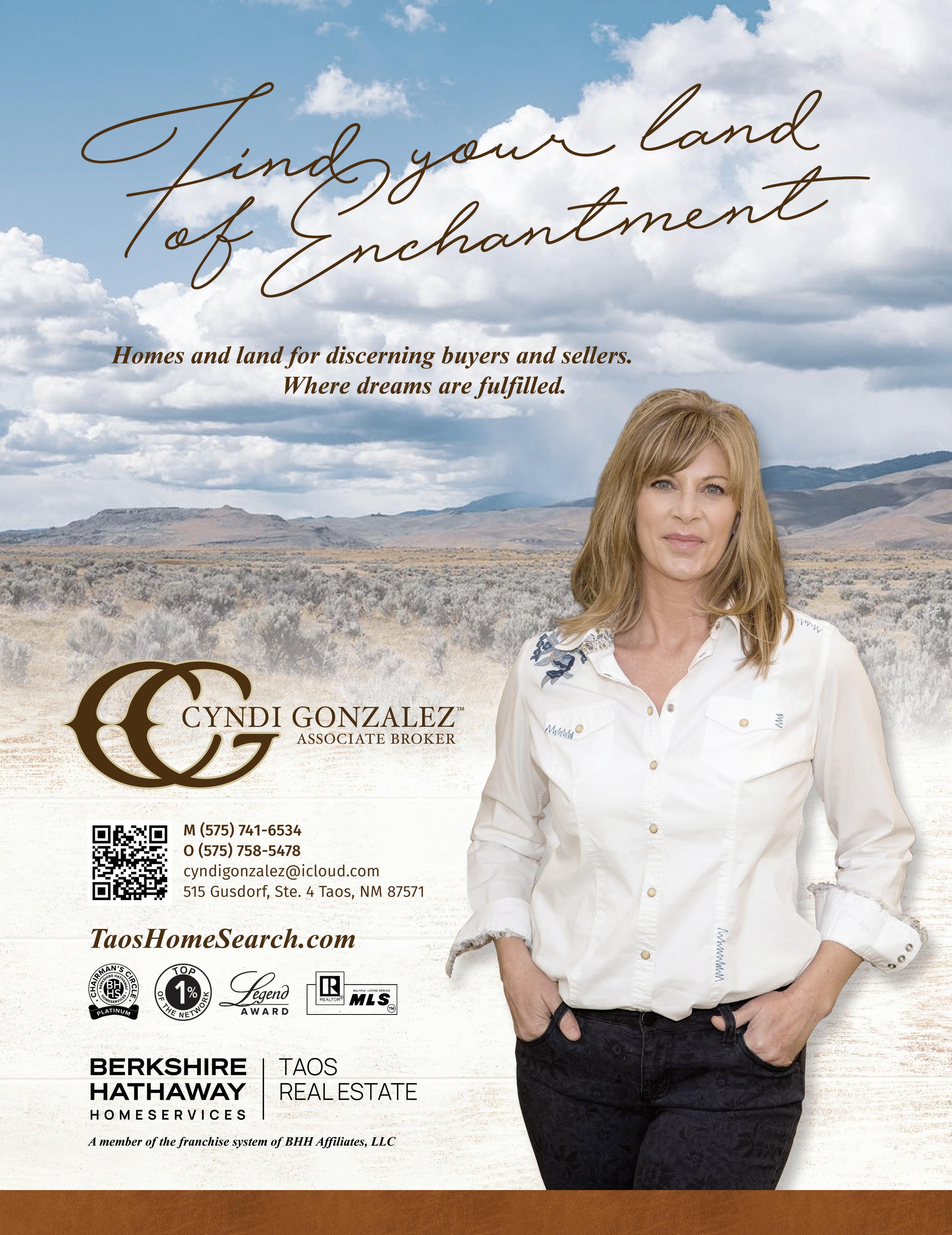
UNDISCOVERED
ANGEL FIRE
BY SCOTT LEUTHOLD
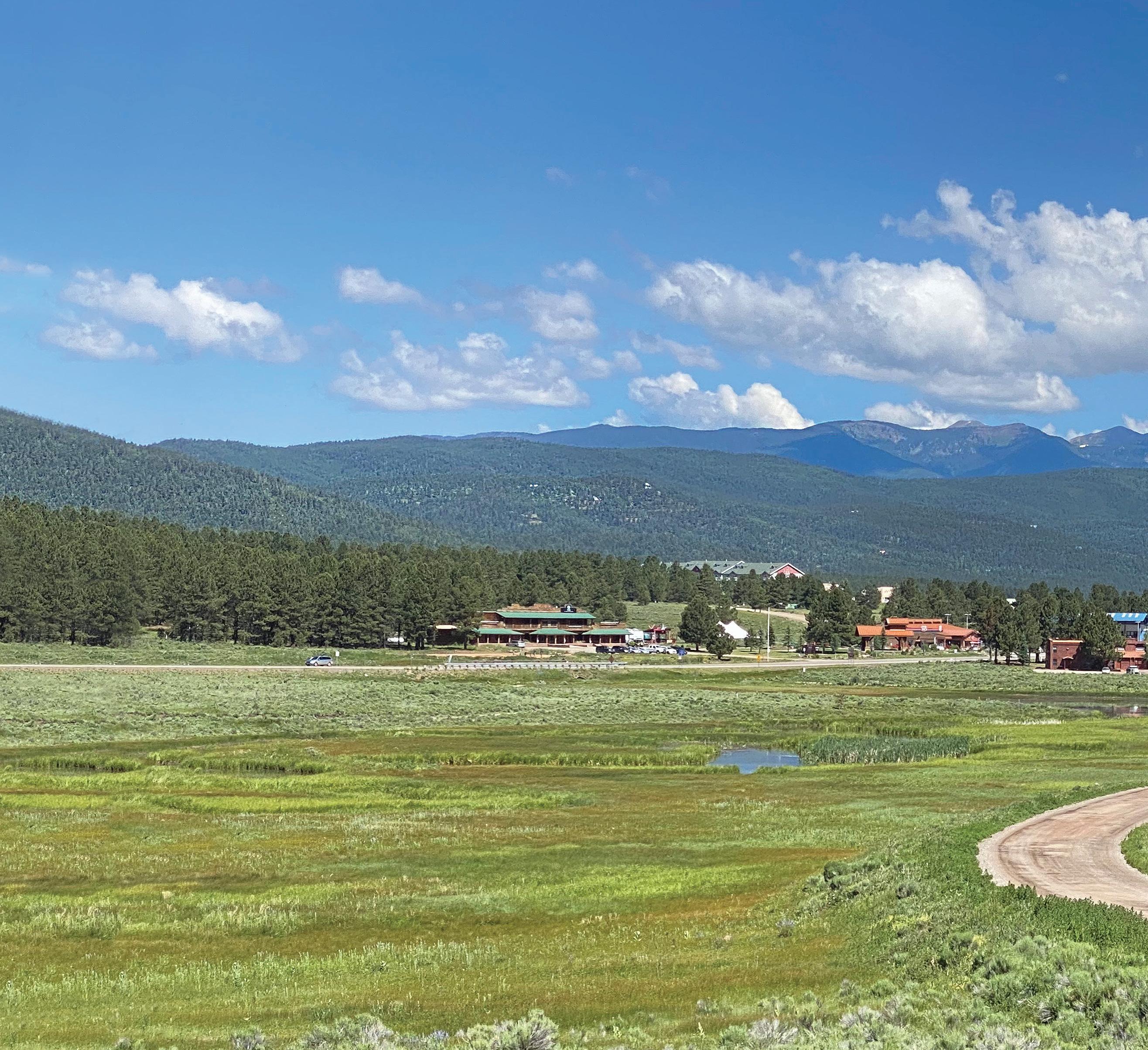
In northern New Mexico’s Sangre de Cristo Mountains, Moreno Valley unfolds like a vibrant canvas, threaded with natural beauty, rich culture, vibrant community, and outdoor adventures. And tucked away among the peaks exists a largely unknown mountain ski village, waiting to enchant those who venture off the beaten path: Angel Fire. Far from bustling crowds, Angel Fire is a wellkept secret of charm, authenticity, and a slower pace of life. The village beckons with its kaleidoscope of colors, from the azure skies above to the golden meadows below.
14 ENCHANTED OUTPOST | SUMMER/FALL 2024
FEATURE
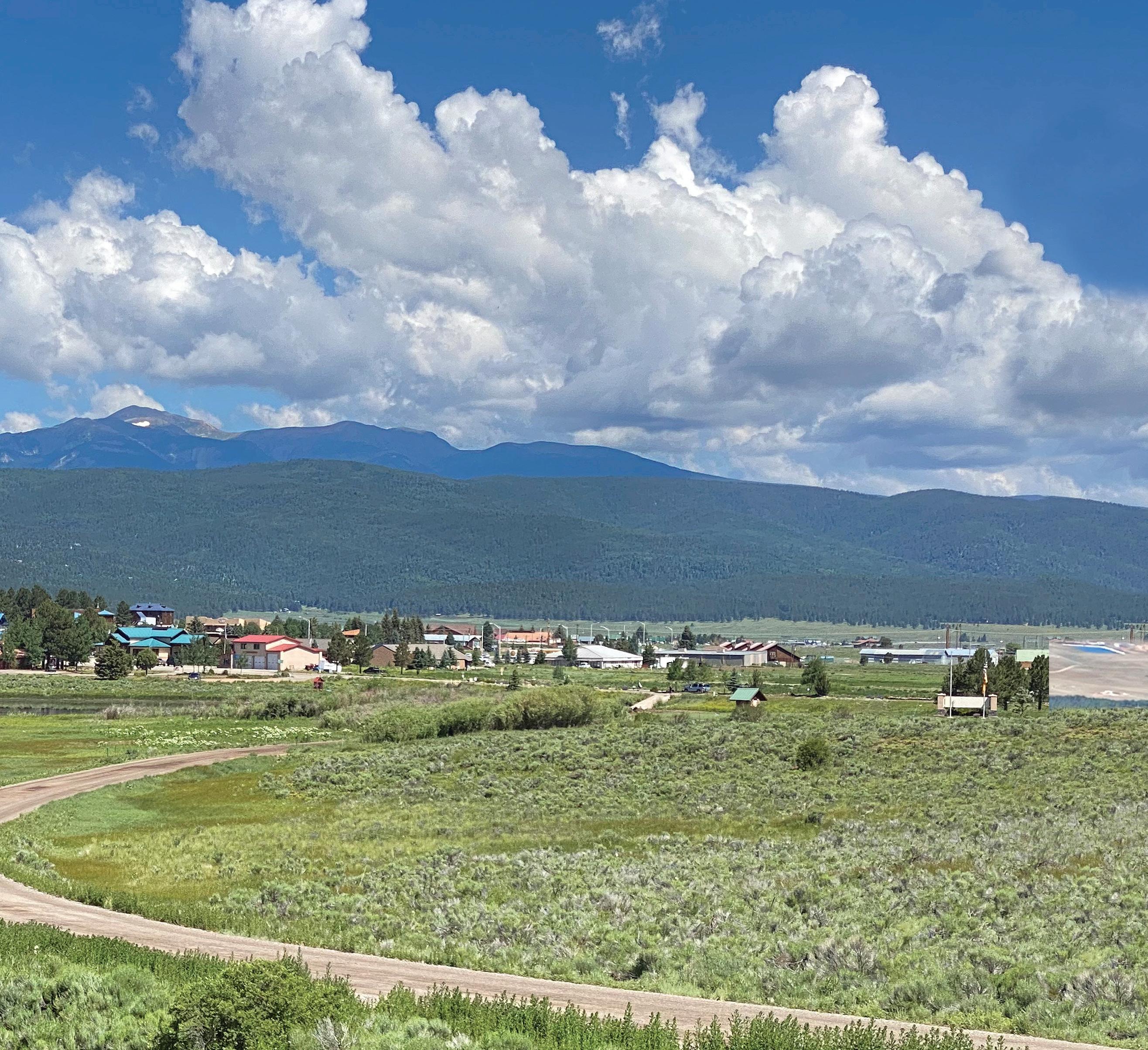
I first discovered Angel Fire in April of 2021. I had sold my home in Carefree, Arizona with the intention of actually living carefree in a small mountain town nestled among high alpine forests and meadows. But I had been planning my journey long before I embarked on it. In 2020, I used Google Maps to pinpoint more than 25 small
towns in the west that I would visit and
get to know over my entire summer.
Early on I visited Bigfork, Montana, and was so impressed that I joined the local Chamber of Commerce. My mind was made up—I was moving to Montana. Yet, in an effort to give each town on my map a fair shake, I decided to visit each one on my way back north
in early 2021. And the first community on my list was Angel Fire.
I had never visited the community before. In fact, I had never visited the Enchanted Circle region, even though I was a well-traveled adventurer with a popular YouTube channel specifically focused on outdoor travel around the southwestern United States.
15 ENCHANTED OUTPOST SUMMER/FALL 2024 |
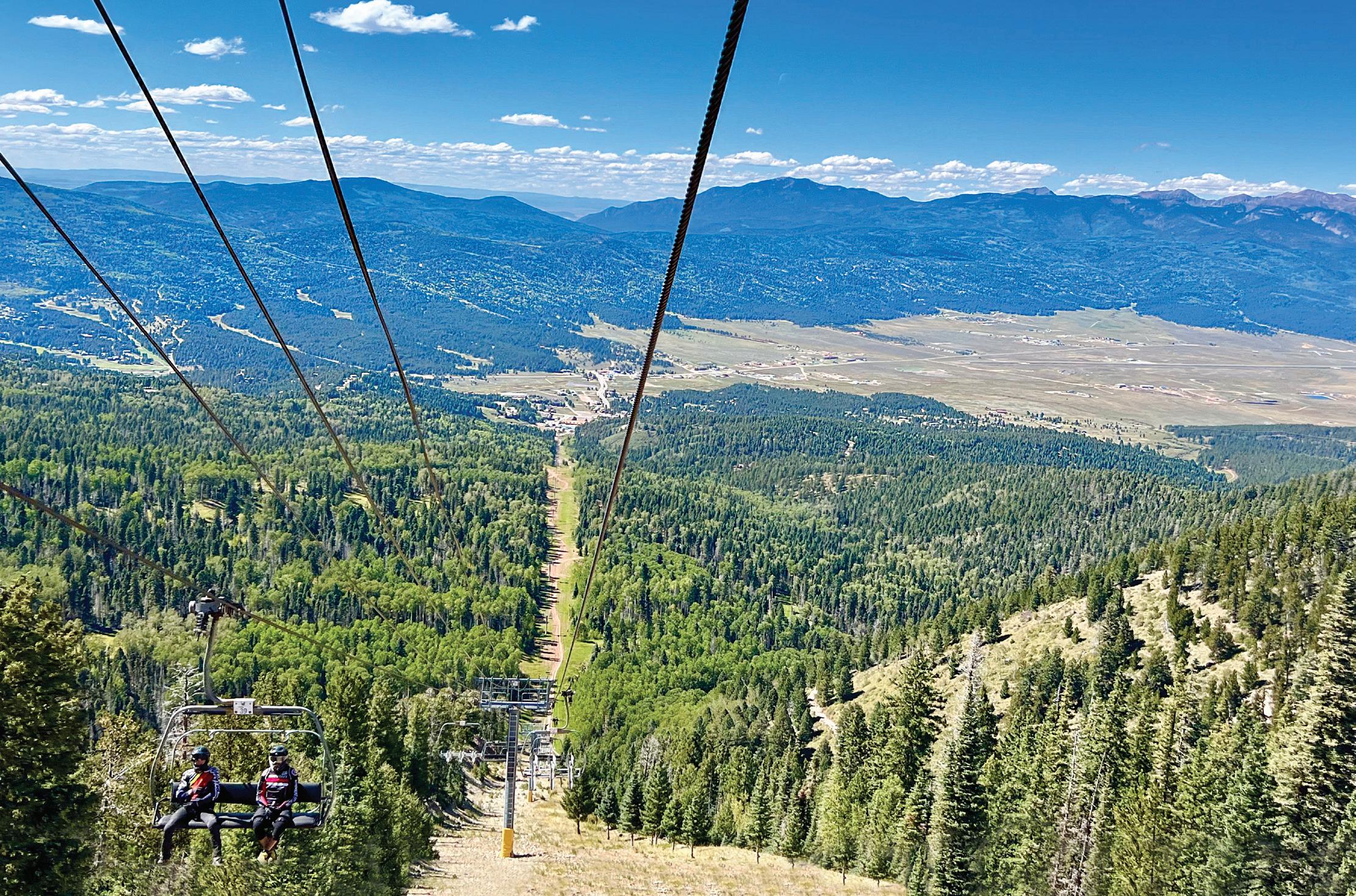
On April 15th, 2021, I departed from Arizona and made my way to Taos, where I parked my RV at a local RV park and scheduled a meeting with a local Realtor. The next day, he drove me straight up Taos Canyon to the Moreno Valley and the village of Angel Fire. I was truly stunned.
My love for Montana was significant; the only hesitation was the driving distance from my home state of Arizona at the time. I had no idea—and suspect I am not alone in this sentiment—that such a remarkable, undiscovered place like Angel Fire existed. I later learned that many of the Hollywood, Amazon, and Netflix films and series that are set in Montana and Wyoming are actually filmed in New Mexico, including in the Moreno Valley.
It makes sense why: New Mexico is unpopulated and scenes are largely
unobstructed by human structures, making it easier to film open landscapes. The beauty of this great state rivals any other flanking the Continental Divide. Plus, New Mexico provides filmmakers with financial benefits to bring productions to our state.
Over the last few years, I have researched articles written about undiscovered ski towns and, to my surprise, not one article featured Angel Fire. I found a few mentions here and there— but nothing showcasing the community and all it has to offer. Yet only 150 miles north, Colorado towns are bustling with economic activity from national exposure.
Angel Fire sits near the southern end of Moreno Valley. The valley floor sits at just over 8,200 feet, while Angel Fire itself ranges from 8,400 feet to the resort’s summit elevation of 10,677 feet.
The summer temperatures rarely exceed 80 degrees, and winter weather is typically dry and mild, rarely dropping below zero degrees. The region sees, on average, 275 days a year of sunshine. This means winter days are typically blue skies and sunshine, with around 30 days of snowstorms dropping upward of 117 inches annually. These factors make Angel Fire a year-round mecca for outdoor activities. And, to add to the allure, the community is only a short thirty-minute drive to Taos or Cimarron, each with seasonal temperatures characteristic of high-desert
Preceding page: Angel Fire sits below Wheeler Peak, the highest point in New Mexico at 13,167 feet. Top: Angel Fire Resort is considered one of the top mountain bike parks in the USA. Right: Agua Fria Peak stands beyond the tall grass in Black Lake, New Mexico.
16 ENCHANTED OUTPOST | SUMMER/FALL 2024


regions sitting around 6,500 to 7,000 feet in elevation.
Angel Fire boasts a quality alpine lifestyle with a resort country club as its crown jewel. The facility offers a well-managed golf club, tennis courts, swimming pool, health club, and a ski resort worthy of consideration among avid ski lovers. I’ve been amazed by the solitude I’ve experienced while skiing at Angel Fire Resort. Often, I’ve found myself cutting the first tracks on a wellgroomed run, well into the afternoon. Lift lines were almost nonexistent in comparison to other resorts north of the border.
In summertime, Angel Fire Resort is home to one of the top alpine mountain bike parks in the United States. In fact, the resort has hosted several major national mountain bike competitions—including the UCI Mountain Bike World Cup, which is considered the most prestigious and extreme competition in the world of
professional mountain biking. Moreno Valley is also a haven for hikers, with trails that wind through forests, ascend mountain slopes, and offer panoramic views of the valley below. Whether it’s a leisurely stroll along the Angel Fire Resort trails, or a more challenging trek up a surrounding peak, the valley beckons adventurers of all levels. And don’t miss Eagle Nest Lake, nestled against the backdrop of the mountains, which provides a serene setting for anglers seeking trout, salmon, and perch. The rhythmic cast and anticipation of a tug on the line become part of the valley’s tranquil and rhythmic symphony.
When autumn arrives, the valley transitions into a riot of fall foliage. Aspen trees blaze with hues of gold, red, and orange, creating a striking contrast against the evergreen conifers. Moreno Valley becomes a leaf-peeper’s paradise, inviting travelers to witness the breathtaking spectacle of autumnal transformation.
The community of Angel Fire offers much more than meets the eye at first glance. And, truth be told, this is precisely the reason I stopped in my tracks when first visiting. As my story goes, upon discovering Angel Fire in April 2021, my trip was cut short, to just that one small town. Within a week, I put an offer on my corner of the region and settled in. I’ve never once wondered what I might have discovered elsewhere if I had kept driving. And with the friends my wife and I have made since our arrival, we wouldn’t have it any other way.
For me, having a mountain home on five acres in the forest that’s a simple one-day drive from the desert of Arizona is a huge advantage over other mountain communities in the West.
Angel Fire offers the kinds of conveniences that a guy like me looks for: Two hardware stores with lumber yards, enough restaurants to be consid-
ered a variety, a quality grocery store, two fuel stations, two dollar stores, a convenience store, a brewery, summertime concerts in the park, a farmer’s market, and several quaint shops and outdoor sports retailers. And, for anything else one might need, Taos is just a short drive away.
Though there are a range of service providers and contractors, the community would happily accommodate new businesses. Anyone with skills of a trade willing to roll up their sleeves can most certainly prosper here.
Real estate in Angel Fire and the surrounding area is reasonably priced in comparison to similar communities in other western mountain states and, there’s still significant availability, both within the resort and outside the village boundary. When I first moved here, I was amazed to discover that, for under one million dollars, a buyer could find larger tracts of acreage with an established, quality home, well, septic, and out-buildings. There are hundreds of mountain lots still available within the resort, too—some even with ski-in, ski-out access to the slopes.
Condominiums in town are even more affordable–many just steps away from the ski lift. Compared to other ski towns in the West where condos list for over a million dollars, comparable properties in Angel Fire can still be found for under $250,000. It seems like the difference in price is simply a lack of knowledge. New Mexico has
Left: Angel Fire hosts an annual balloon festival typically scheduled for Father’s Day weekend. Photo: Damon Leblanc
Right clockwise: Angel Fire Bike Park offers challenging trails. The local farmer’s market is a summertime favorite. Epic zip lines stretch from peak to peak. Photo: Angel Fire Resort. ATV trails in Carson National Forest. Wrangling the herd near Hidden Lake. Kicking back in a creek near Guadalupita, New Mexico.
18 ENCHANTED OUTPOST | SUMMER/FALL 2024





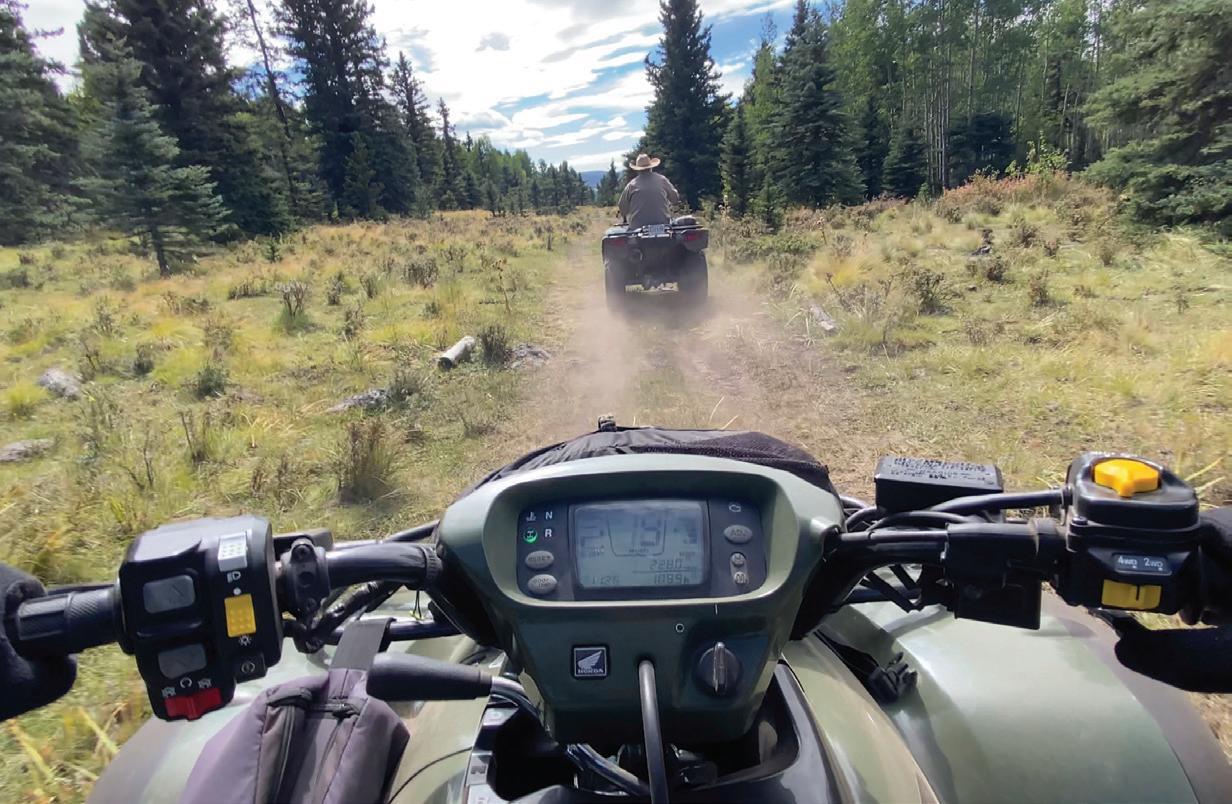

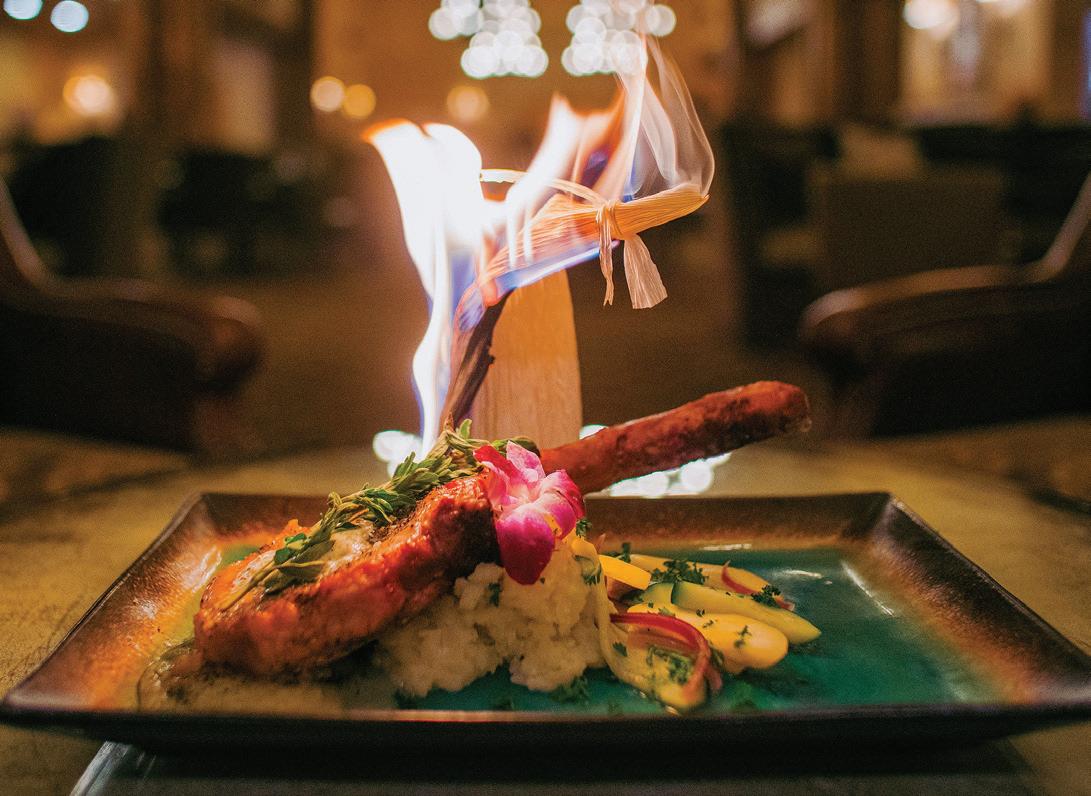


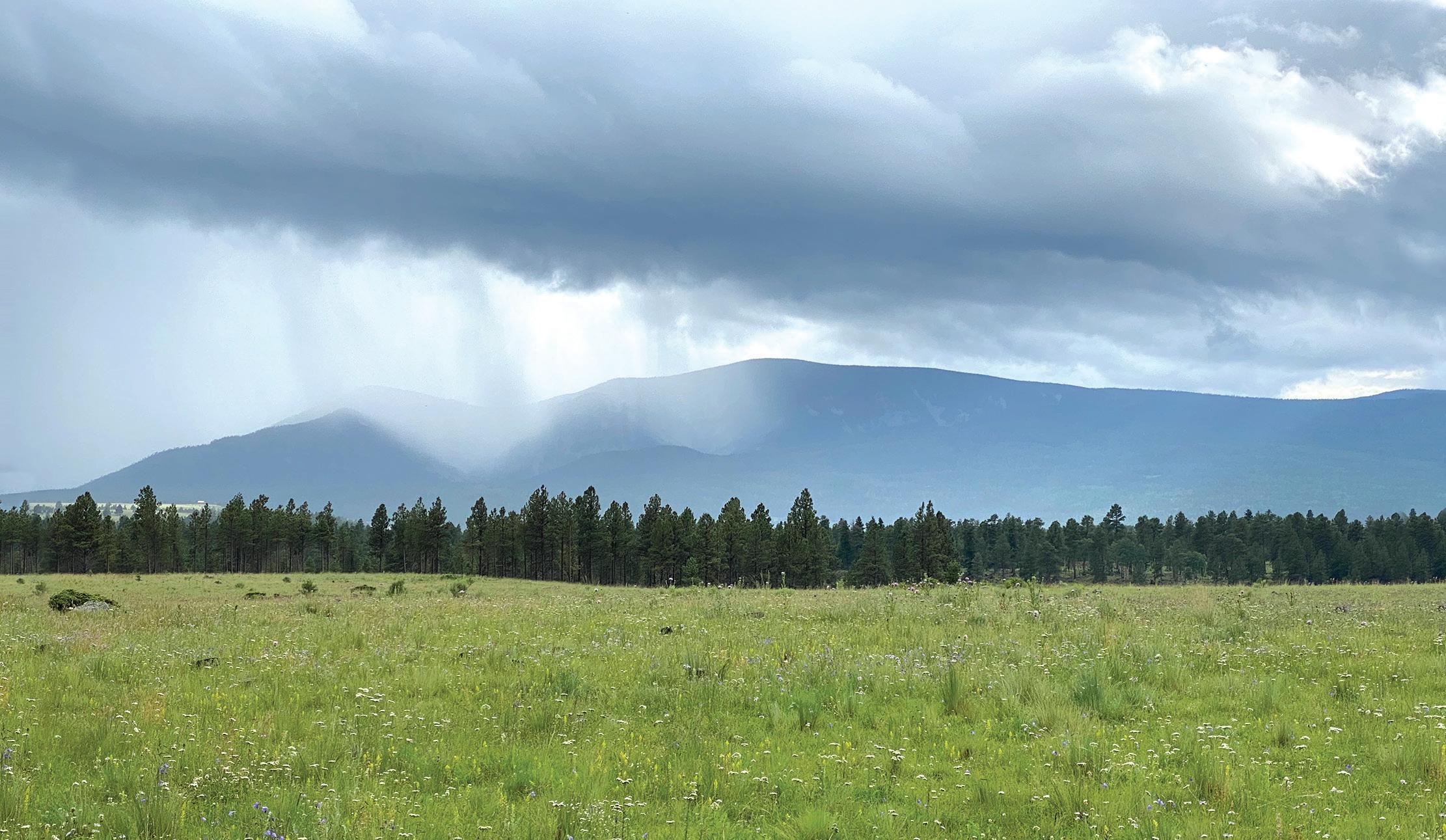
long been an unpopulated, low tourism state in comparison to our neighbors. But while we may be on the verge of change, we appear to be easing into our new identity. We have an opportunity to breathe easy and manage growth in ways other ski towns have been challenged to control and maintain.
In recent years, our state has formulated new programs to encourage tourism and economic activity. And many of those programs—particularly recreational tourism—focus national
attention squarely on our region. We can only hope the dignitaries we elect implement mechanisms to ensure sustainability and responsible developmental growth.
Angel Fire is one of those places that can truly be described as a rare find. The regional hub community of Taos is only just beginning to garner the popularity it deserves. Often when asked where my home is located, I refer to Taos as my geographic starting point of reference. Many people can’t even place Santa Fe on a map, let alone Taos or Angel Fire—and I presume many within our region would just as soon keep it that way. I get it. However, the community is not mine to own and lock the gates.
Moreno Valley of northern New Mexico, and the villages of Angel Fire, Eagle Nest, and Black Lake, are together a masterpiece painted with the bold strokes of nature’s brush.
As visitors explore the Moreno Valley, they become part of a narrative
that celebrates the beauty of the land, the richness of culture, and the vibrant tapestry of life in one of New Mexico’s most captivating destinations. t
J DETAILS
Angel Fire is located along the Enchanted Circle in northern New Mexico. The village can be reached from Taos on Highway 64, from Questa on Highway 38 through Red River and Eagle Nest, from Cimarron on Highway 64, and from Las Vegas, New Mexico on Highway 518 through Mora.
To learn more about the community of Angel Fire, visit the Angel Fire Chamber of Commerce website.
www.angelfirechamber.org
21 ENCHANTED OUTPOST SUMMER/FALL 2024 |
Left: Angel Fire Resort Golf Club offers challenging fairways and fast greens against a backdrop of soaring peaks; quality dining at Elements Restaurant; the Angel Fire RV Resort has been rated one of the top RV destinations in the United States. Photos: Angel Fire Resort. Cross country mountain biking offers a range of scenery and terrain in the area. Riders should ensure they’ve obtained the proper permits for land access.
Above: A summer rainstorm in Black Lake, New Mexico.




Life is good in this ski in/ski out mountain home. 181 El Camino Real, Angel Fire, NM 5 Bed | 5 Bath | 3,575 SqFt | MLS 111365 $1,945,000 LISA SUTTON Managing Broker & Owner 505.603.0525 | lisa.sutton@cbmp.com 3375 Mountain View Blvd. Angel Fire | 575.377.1192


Symphony whitewater
THE RIVER RUNNERS OF THE UPPER RIO GRANDE
FEATURE
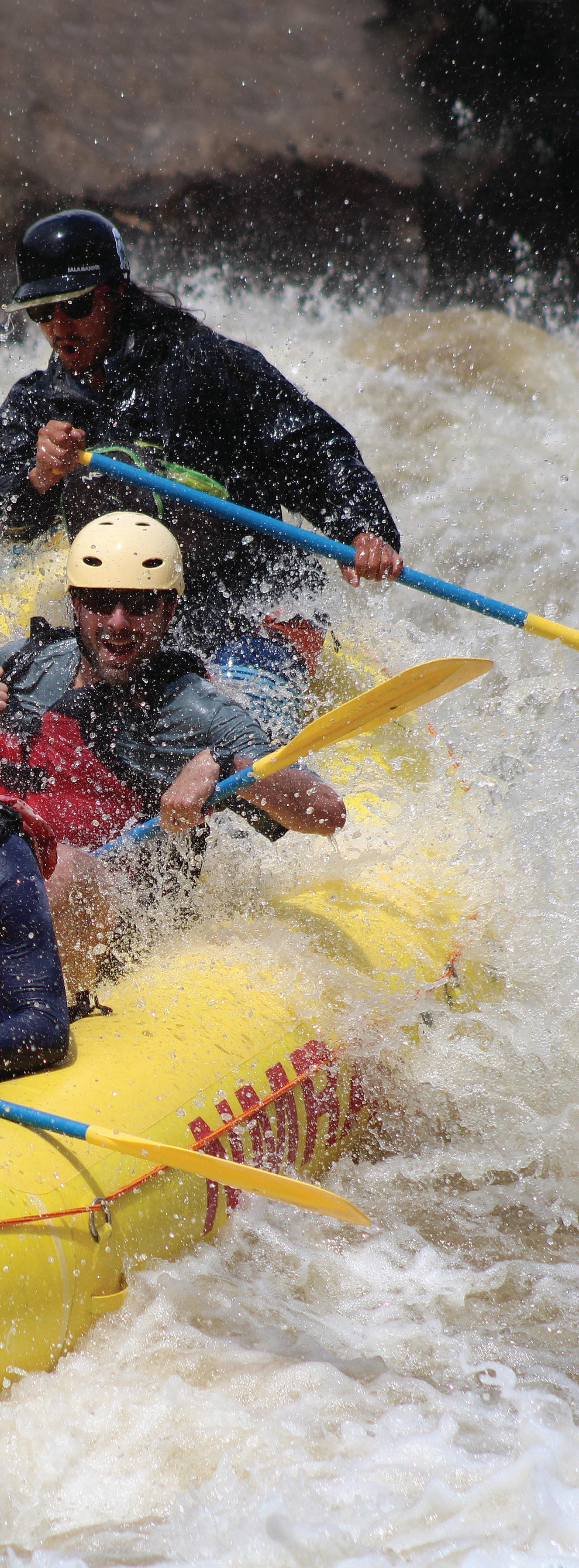
In the heart of northern New Mexico, where the rugged landscapes of the Sangre de Cristo Mountains descend to the shores of the mighty Rio Grande, an exhilarating playground awaits within the Rio Grande Gorge.
Carved by the river’s timeless flow, this dramatic gorge offers rushing rapids and breathtaking scenery for rafting enthusiasts of all experience levels.
Upon arrival at the water’s edge, you’ll find a community of adventurers whose hearts beat in sync with the rhythmic pulse of the Upper Rio Grande River. These are the river runners: a spirited and colorful group of individuals who have forged a deep connection with the untamed waters that meander through the canyons and gorges. As dawn’s first light paints the sky in hues of pink and gold, the river runners gather with their rafts and kayaks, eagerly waiting to embrace the churning rapids. The river runners are a diverse collective, united by their love for the dance with the swift currents.
The Upper Rio Grande, with its playful riffles and tempestuous cataracts, is both a friend and a foe. Each bend in the river holds promise of adventure; the key is accepting each challenge and navigating the tumultuous waters in their symbiotic dance. The rapids roar with an intensity that matches the fiery passion of the high desert sun. The river runners, undeterred by the swirling chaos, ride the waves with a combination of skill and pure exhilaration.
As the rafts bounce and the kayaks slice through the froth, an unspoken camaraderie unites. Their grins speak of shared triumphs, challenges conquered, and a love for the untamed spirit of the Rio Grande. The river itself seems to acknowledge their presence, whispering secrets of the canyon walls, caressing the hulls of their vessels like an old friend. High above, the Rio Grande Gorge with its sheer cliffs and rocky spires provides a stunning backdrop for such fluid adventures. Towering walls of basalt rise from the riverbanks, dramatically guarding the river as it plunges through the narrow confines of the gorge.
Framed by the peaks of the Sangre de Cristo Mountains, the gorge offers rafters panoramic views
25 ENCHANTED OUTPOST SUMMER/FALL 2024 |
of this high desert landscape. The contrast between the rugged canyon walls and the expansive skies paints a canvas that changes with the play of sunlight throughout the day.
The Rio Grande Gorge is renowned for its challenging and thrilling rapids. Rafters navigate through Class III to Class V rapids, where the river’s power is on full display. Popular rapids, such as the Razorblades and the Power Line Falls in the gorge’s Taos Box section, ensure an adrenaline-packed journey—more than 16 miles long—for those seeking an exhilarating whitewater experience.
Local outfitters, equipped with experienced guides, provide an essential key to a safe and enjoyable rafting adventure. These knowledgeable guides not only steer rafts along the course, but also share insights into the geology, history, and ecology of the Rio Grande Gorge, adding an educational dimension to the expedition.
While the Rio Grande Gorge boasts challenging sections for experienced rafters, it also offers more accessible stretches suitable for beginners and families. This inclusivity allows a broad range of adventurers to experience the thrill of rafting in the heart of northern New Mexico.
“The Rio Grande is an awesome teacher. I just love being a river guide,” says Billy Miller of Big River Raft Trips. “The river has taught me that all things are fluid. Everything is constantly in motion. I am [rafting the river] basically learning how the universe works.”
The Rio Grande Gorge is also home to natural hot springs where rafters can unwind in warm mineral waters after conquering the rapids. These geothermal features add an extra layer of relaxation and natural wonder to those who spend time here.
“The Upper Rio Grande is unique for western whitewater rivers, as the water levels never drop below the level of runnability,” says Matt Gontram, veteran river runner and owner of New Mexico River Adventures. “This allows those of us that live on the banks of the river to connect with and paddle on the Rio all year long. We truly have four river seasons here—which is amazing!” Gontram has been guiding guests down rivers for the past thirty-three years and finds his inspiration and tempo in the schedule of river time. “The constant unknown factors that are ever-present with spending your days in such a wild and uncontrolled environment helps to ground someone in a very special way. There is truly nothing I would rather be doing with my life, than exposing people to


Preceding Page: Rapids in the Upper Rio Grande of Taos Canyon can reach as high as Class V in spring. Top: Excitement on the river. Photo: New Mexico River Adventures; Above: Billy Miller, of Big River Raft Trips, has been guiding river excursions on the Rio Grande River for over forty years. Photo: Heather Leuthold
26 ENCHANTED OUTPOST | SUMMER/FALL 2024
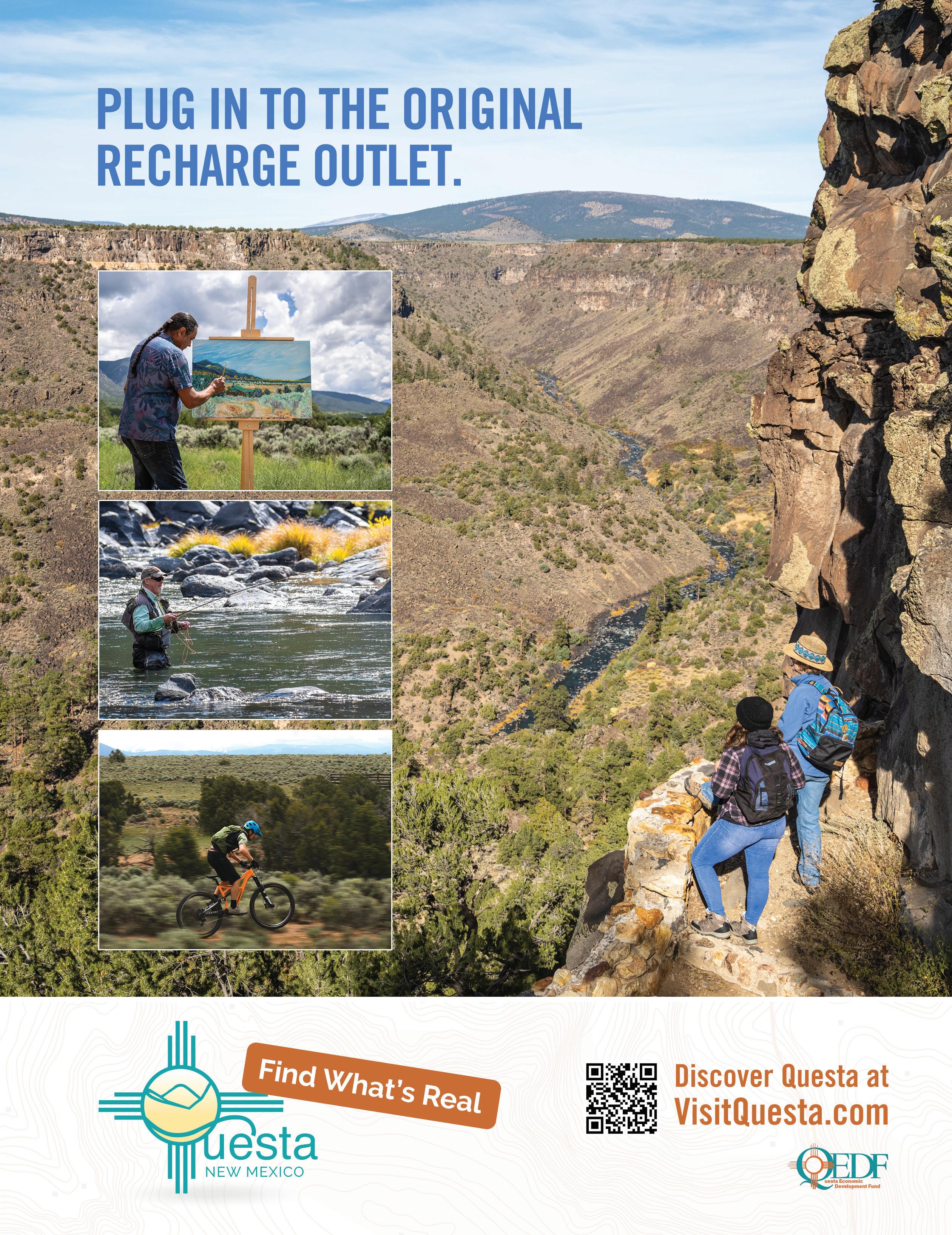
“When you do things from your soul, you feel a river moving in you.” RUMI
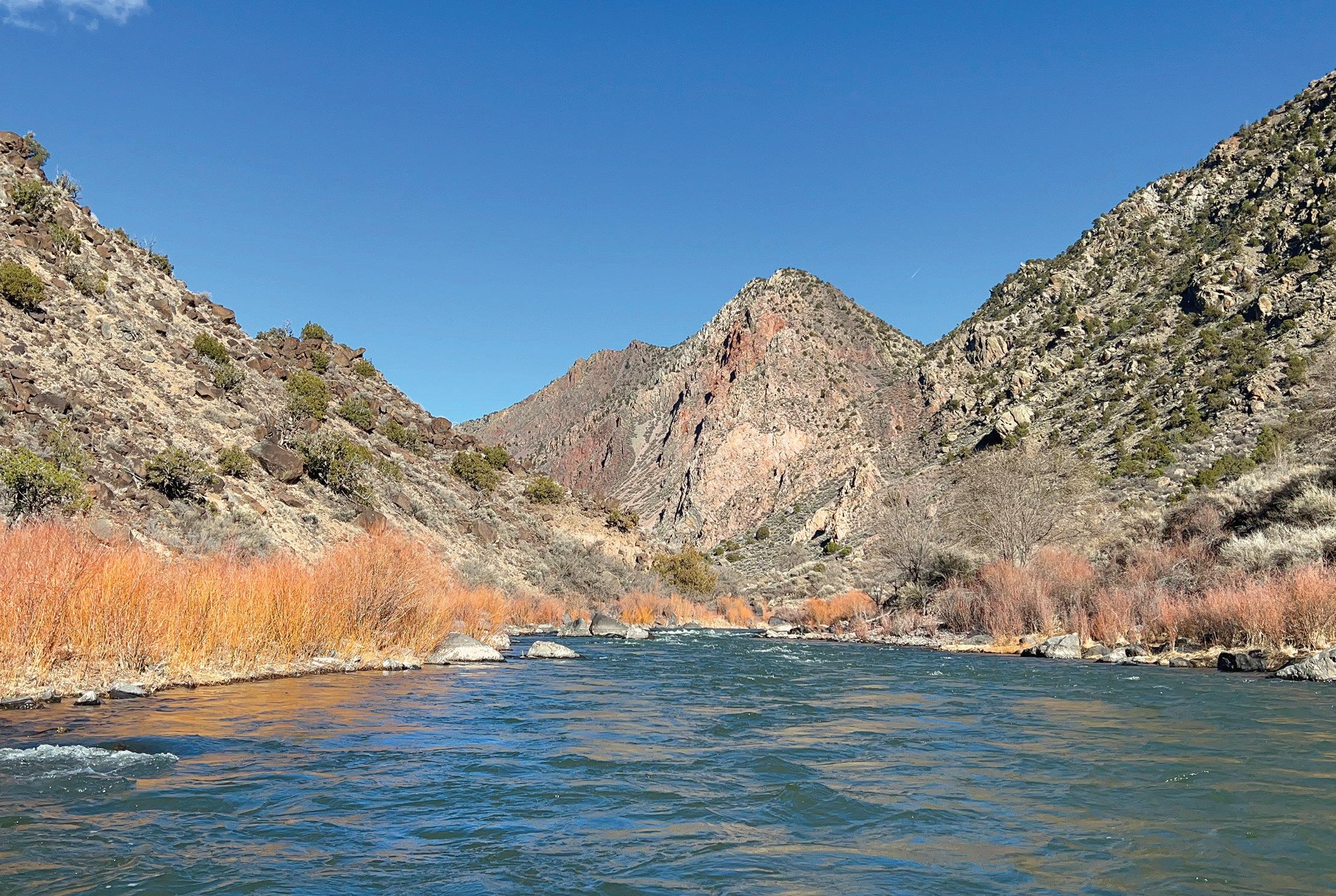
such a unique experience that illustrates the intrinsic value of living in the moment.”
River Rafting Outfitters
Big River Raft Trips (575) 758-9711
Far Flung Adventures (575) 758-2628
Kokopelli Rafting Adventures (505) 393-4982
Los Rios River Runners (575) 776-8854
New Mexico River Adventures (505) 983-7756
New Wave Rafting (505) 579-0075
Santa Fe Rafting Co. (505) 988-4914
As the river runners continue their descent, they must embrace the ever-changing character of the Rio Grande. The river morphs from a playful companion to a formidable adversary, testing the skills and mettle of the adventurers who dare step up to the challenge. And as the setting sun casts a golden glow upon the water, the river runners complete their journey, their boats pulled ashore with a sense of accomplishment etched on their faces. The Rio Grande has woven another chapter into the tapestry of their stories, and they revel in the shared triumph and satisfaction of conquering its mighty course.
Rafting the Rio Grande Gorge in northern New Mexico is not merely an adventure; it’s a symphony of nature’s grandeur, a thrilling dance with the river’s currents, and an immersion into the soul-stirring landscapes of the Sangre de Cristo Mountains. As rafters

navigate the rapids and absorb the breathtaking surroundings, the Rio Grande Gorge becomes a sanctuary for those seeking both excitement and serenity in the heart of the Southwest. We raise our glass to the river runners and their passion for life. t
Top: Along the Rio Grande within the gorge. Photo Heather Leuthold; Above: Wrapping up a rafting adventure on the Upper Rio Grande River. Photo: Big River Raft Trips
28 ENCHANTED OUTPOST | SUMMER/FALL 2024





✓ HALF-DAY TRIPS ✓ FULL-DAY TRIPS ✓ PRIVATE TRIPS ✓ GROUP RATES SINCE 1983 BOOK ONLINE: BIGRIVERRAFTS.COM CALL US: 575-758-9711 CELEBRATING OV E R SRAEY04 TEFASTCEFREP Y RECORD!40 Big River is a full service rafting outfitter. We supply everything you need for a great day on the river! WAHOO!

fifty shades of OUR AFFINITY WITH OLD TRUCKS FEATURE & How They Help Define Southwestern Style

To own an old pickup truck—drivable or not— is to embrace the embodiment of our western ranch culture and celebrate the rich, colorful lifestyle of North America’s mountain states.
In the tattered diary of Western culture, old pickup trucks weave a narrative that spans beyond considerable utility—they become, in a sense, time-traveling vessels, embodying the spirit of bygone eras while shaping the contemporary perception of a region. These vintage workhorses, with rusted grills and weathered paint, carry their legacy etched in every dent and creaking hinge. Across rural ranchlands, they’re not just tools for the job; they’re curators of tradition, hauling the epic tale of hardworking folks cultivating sun-soaked grasslands.
These revered classics, adorned with fading bumper stickers of businesses long past, are more than modes of transportation; they’re artifacts symbolic of a region’s identity. Their cracked vinyl seats bear witness to countless tales along dusty roads, connecting neighbors in a shared journey. In the mountains, these trucks navigate winding highways, laden with outdoor gear, relics of countless adventures beneath endless skies.
Old pickups, with their inherent charisma, shape our perception of a region. They are storytellers, painting vivid images of a community’s character, work
Left: Two classic Chevy trucks sit ready to roll in Tesuque, New Mexico. The secret to the classic look is all in the weathered patina. Right: Collecting dust near El Prado; Rusting away near Tres Piedras; Dressed in a shade of turquoise, a Ford pickup rolls by in the Eagle Nest Fourth of July Parade.
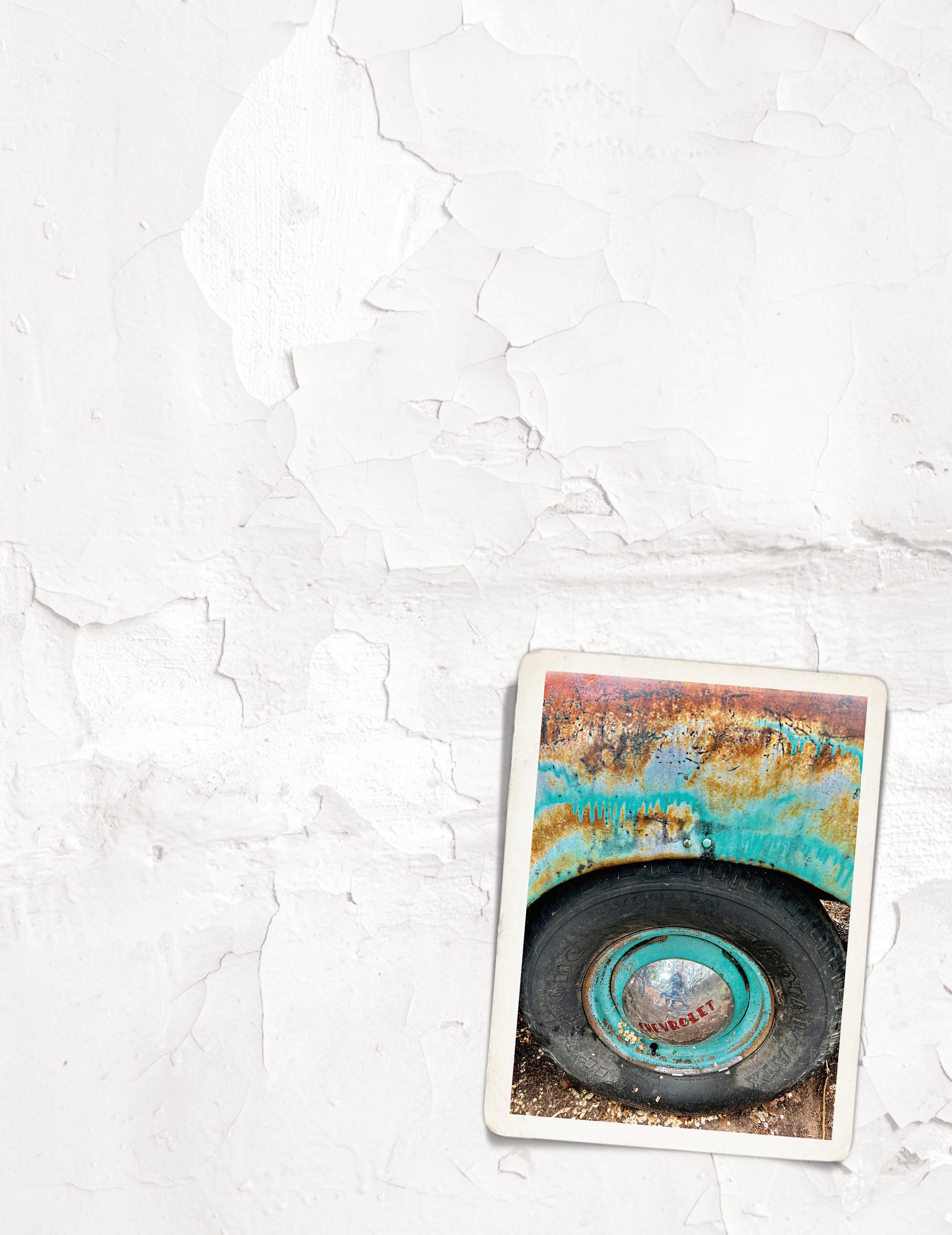

ethic, and enduring spirit. In their well-worn frames, we glimpse the soul of a place, where the echoes of yesteryear ride shotgun with the aspirations of tomorrow.
To take a ride in one is transformative, often bringing passengers back to their childhood. The musty scent permeates every crack and seam. The crank and triangular vent windows tell of a time when our world was free from the shackles of technology. Gripping the oversized, wooden steering wheel and pressing down on the rubber gas pedal initiates a shiver in refurbished motors, leading to the purr only a wrencher could translate into an unspoken and poetic language.
Old pickup trucks are woven into the tapestry of our communities, and those who possess and nurture these machines embrace the lifestyle of New Mexico and the southern Rockies. All it takes is a ride through towns and backcountry byways to spot these aging gems. t
Top: A Ford Flatbed welcomes guests to Trails End Ranch in Black Lake, New Mexico. Right: Nature’s paint on an old Chevy truck.

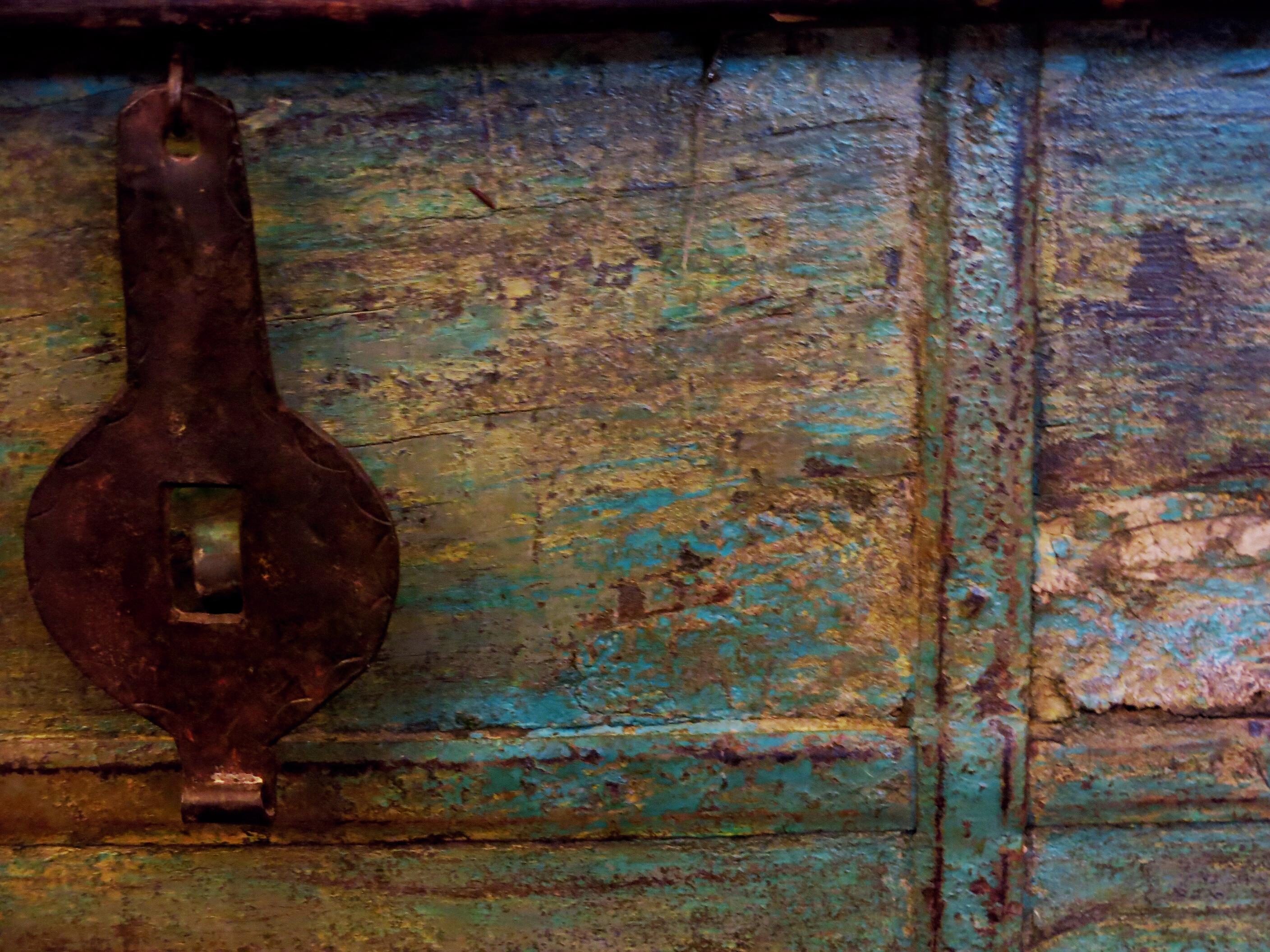


Buy and Sell Antique Furnishings Buy-Out Partial & Full Estates Hold On-Line & In-Person Estate Sales Appraise Antiques & Art Visit our shop at 705 Paseo Del Pueblo Sur • 575-613-2069 • taosblackdog.com Your unrivaled choice for authentic Taos furnishings LOVE IT HERE? Everyone comes to Angel Fire for different reasons — friendly ski hills, magnificent mountains, cool summers. Whatever you’re searching for, we’ll help you find the perfect home so you can be here more often. WE DO TOO. 575-255-1628 | ANGELFIREMOUNTAINREALTY.COM
OUTLOOK
Capturing
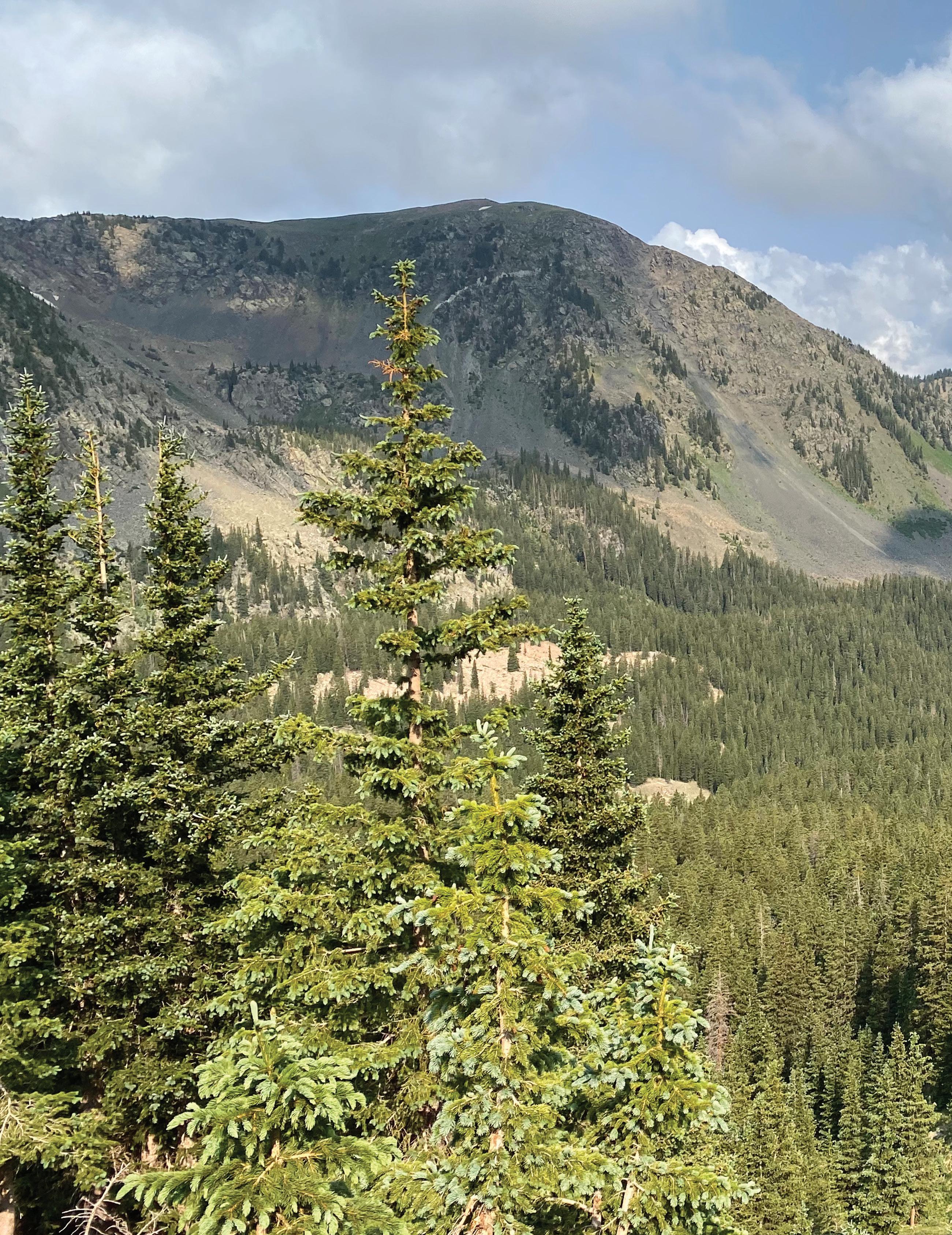 the view from here.
the view from here.

Hikers ascend Wheeler Peak on a midsummer morning. The trail begins at Taos Ski Valley passing by Williams Lake, then traverses to an elevation of more than 13,000 feet at the summit. It’s generally recommended hikers reach the summit and begin their descent by noon to avoid sudden afternoon thunderstorm activity. The challenging 8.7 mile out-and-back hike takes, on average, five and a half hours to complete. Photo: Scott Leuthold
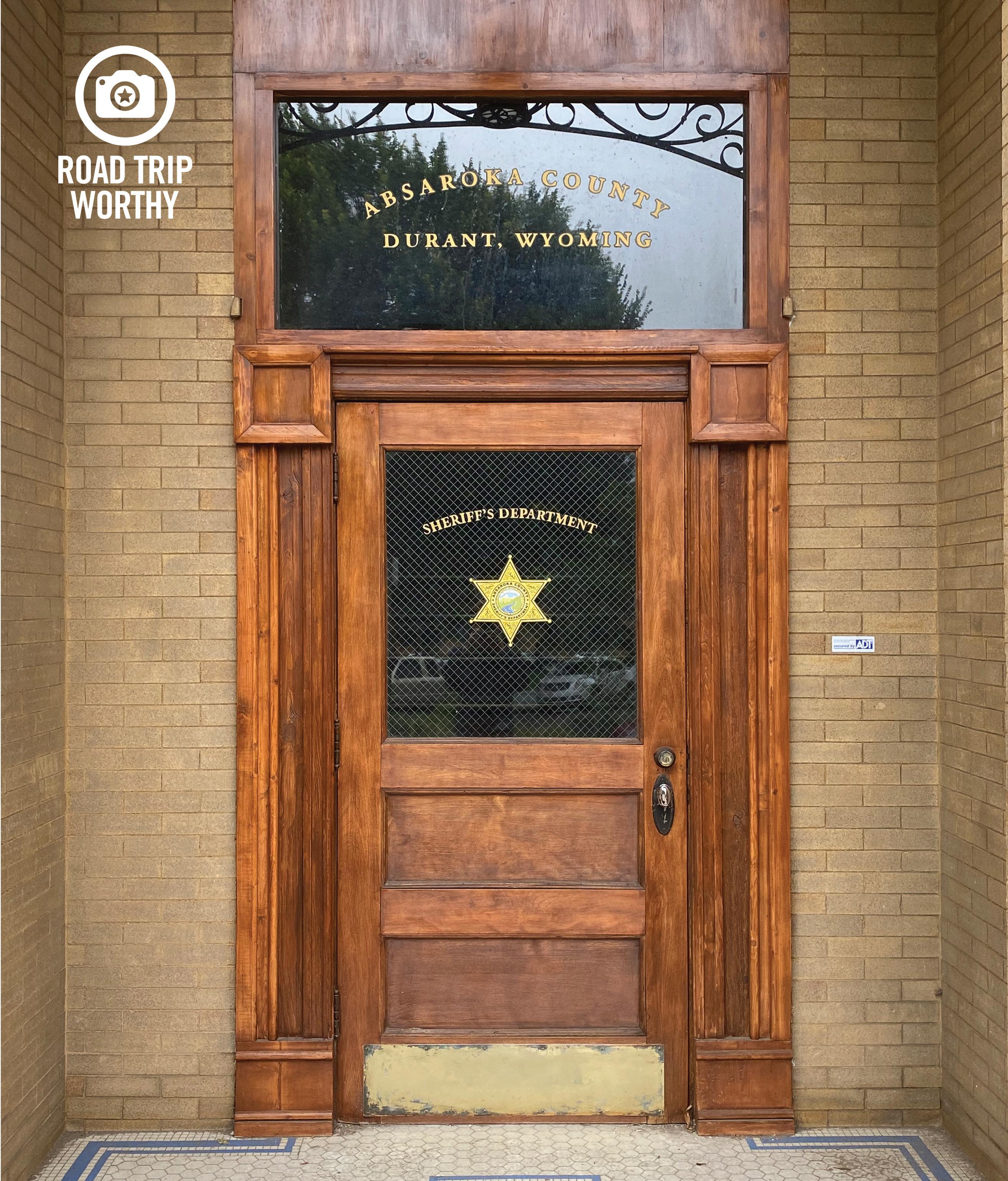
The popular Netflix television show, Longmire, is set in Durant, Wyoming, but the show was primarily filmed in northern New Mexico. Fans of the show can visit set locations including Sheriff Longmire’s home filmed in Valles Caldera National Preserve. The Sheriff’s office was filmed in the Veeder Building (1895) located in the historic Plaza in Las Vegas, New Mexico. The front door of the Sheriff’s Department, shown above, as well as other notable set locations can still be viewed in the Plaza and along Bridge Street.
36 ENCHANTED OUTPOST | SUMMER/FALL 2024

WAYPOINTS
Something for the senses.
FIRE SEASON Field Notes from a Wilderness Lookout - Philip Connors
In his reflective prose, Philip Connors captures the solitude, beauty, and perils of the Gila National Forest from his vantage point of a wilderness lookout in southwestern New Mexico. The author’s insightful observations of his natural surroundings, coupled with his thoughtful introspection, create a vivid expression of life as a fire lookout. This memoir not only serves as an inspiring account of wildfire surveillance, but also delves into the profound connection between man and the untamed wilderness. The tale leaves readers with a lasting sense of awe and admiration.

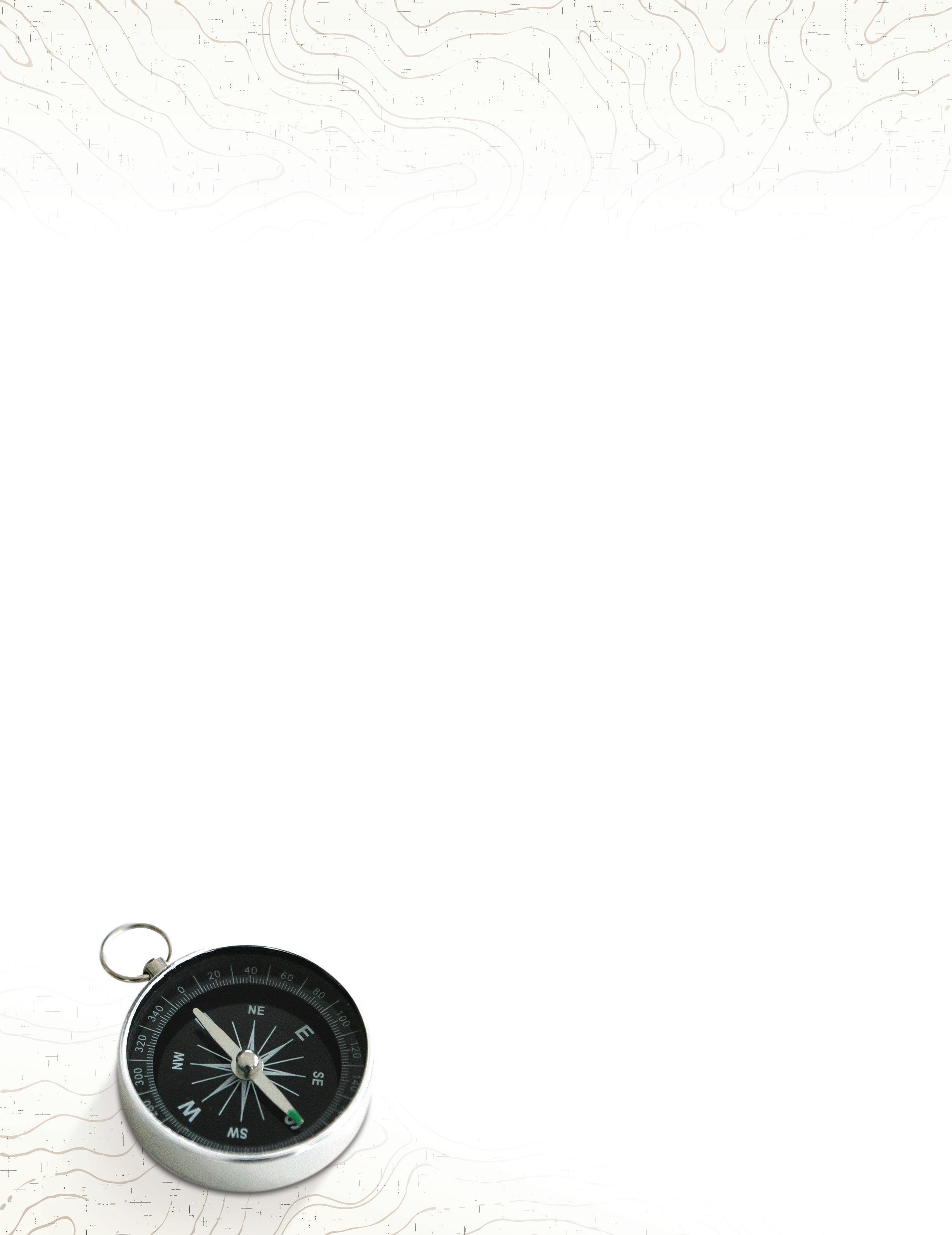
GET A COPY:
https://amzn.to/3NTugv8
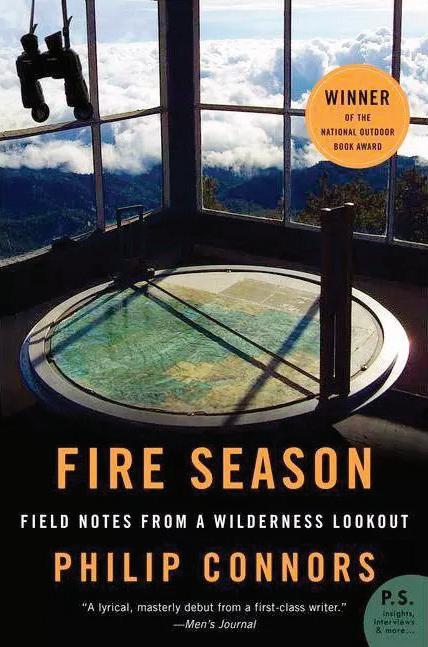
ENCOUNTER CULTURE PODCAST with host, Emily Withnall
Emily Withnall is the editor of El Palacio Magazine, a New Mexico Department of Cultural Affairs publication dedicated to the art, history, and culture of the Southwest. On her unique and entertaining podcast, Encounter Culture, she shares conversations with a diverse array of insightful and entertaining guests. Her interviews dive deeply into the rich stories that illuminate New Mexico’s multifaceted cultural life. Emily was born in Taos and raised in Las Vegas, New Mexico. Today, she lives in Santa Fe.

LISTEN IN:
https://podcast.nmculture.org/

t READ
o LISTEN
X WATCH
OVERLAND NEW MEXICO’S VALLE VIDAL, 4XPEDITION Adventurer
Join outdoor adventurer Scott Leuthold and his wife Heather on a three-day overland journey through northern New Mexico’s Valle Vidal section of Carson National Forest. This 45-minute episode is part of an adventure series exploring the Southwest, with several episodes showcasing lesser-known areas of New Mexico, Arizona, Colorado, and Utah. In the Valle Vidal episode, the host takes viewers through the region by vehicle, on foot, and by mountain bike to uncover much of what this stunning landscape has to offer those who find themselves adventuring here.


STREAM IT:
https://bit.ly/vallevidal
x TASTE
TAOS COW - Northern New Mexico’s Exotic Ice Cream Flavors
A stop at Taos Cow (now with a location in Arroyo Seco and a second in Taos) is a must for tantalizing summertime tastes. The vendor offers premium, all natural, RBGH-free ice cream treats. Favorite flavors among locals include Luscious Cherry Ristra (chunks of dark chocolate and piñion nuts, giving it a Southwest twist), Piñion Caramel (vanilla ice cream with piñion and vanilla caramel chunks), Mexican Chocolate (chocolate ice cream with cinnamon and dark chocolate chunks), and Lavender (flavored with organic New Mexican culinary lavender seed). Taos Cow also serves breakfast and lunch items, as well as uniquely flavored gourmet coffee and tea. And, for bacon lovers, their BLT is arguably the best sandwich of its kind in the region.

GET YOUR LICKS:
https://mcoc6262.wixsite.com/taoscow
Did You Know?
We will soon offer a collection of Waypoints on our website. Find these and other books, podcasts, music selections, videos, films, eats, and events by visiting https://enchantedoutpost.com/waypoints.
Have suggestions?
Share your ideas at enchantedoutpost.com/suggest
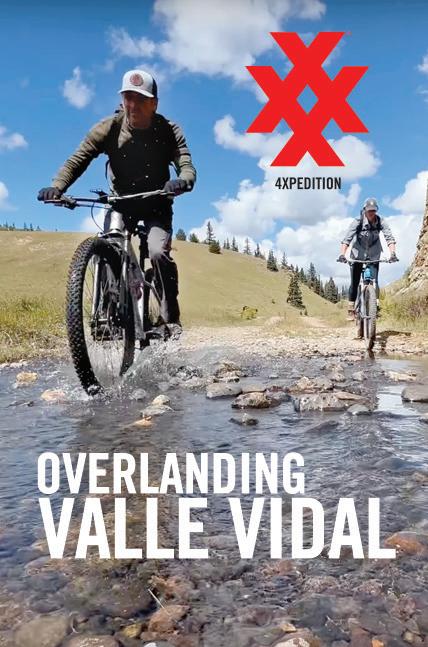

Get Waypoints

Point your smartphone camera at the QR Code. Your camera will recognize the code. Tap to visit the website.
39 ENCHANTED OUTPOST SUMMER/FALL 2024 |
CALENDAR
Reasons to celebrate the seasons.
JUNE
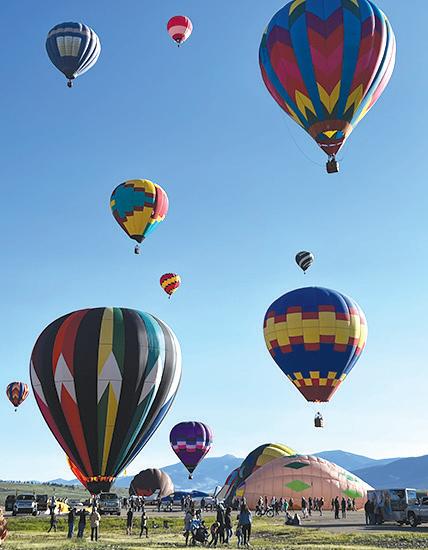
Balloons Over Angel Fire
Spend Father’s Day weekend enjoying the laid-back pace of Angel Fire. Watch a field of hot-air balloons at sunrise as they gracefully float up into the cool morning air of the Moreno Valley at one of the highest elevation balloon events in the USA.
When: June 14-16
Where: Angel Fire, NM
Visit: angelfirenm.gov/296
1 Red River Car Show
Red River, NM - redriver.org/events
1-2 Santa Fe Spring Festival
Santa Fe, NM - golondrinas.org
8-9 Chama Western Heritage Days
Chama, NM - visitchama.com/events
14-16 Vino in the Valley Art & Wine Festival
Red River, NM - redriver.org/events
15 Mimosas on Mainstreet Angel Fire, NM angelfirechamber.org
21-29 Festival Flamenco Albuquerque Albuquerque, NM - ffabq.org
29-30 Big Mountain Enduro Series
Angel Fire, NM bigmountainenduro.com

JULY AUGUST
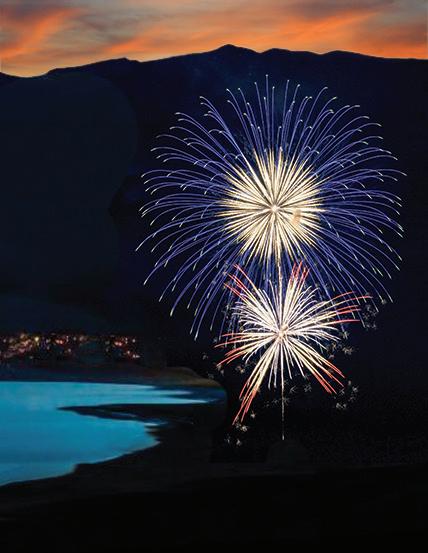
Eagle Nest July 4th Parade and Fireworks over Eagle Nest Lake
Spend Fourth of July in the beautiful Moreno Valley. Enjoy a downhome mountain town parade and a fireworks show that is bound to compliment your Independence Day holiday traditions.
When: July 4
Where: Eagle Nest, NM
Visit: eaglenestchamber.com/events
4-7 Las Vegas 4th of July Fiestas
Las Vegas, NM - lasvegasnm.com
11-14 102nd Ski Hi Stampeed Pro Rodeo
Monte Vista, CO - skihistampede.com
13-14 Trinidad Art Festival
Trinidad, CO - trinidadartfest.com
19-21 Las Fiestas de Taos
Taos, NM - fiestasdetaos.com
27 Enchanted Forest Trail Races
Red River, NM geminiadventures.com
27-28 Traditional Spanish Market
Santa Fe, NM atriscoheritagefoundation.org
27-28 High Country Arts and Crafts Festival
Eagle Nest, NM eaglenestchamber.com
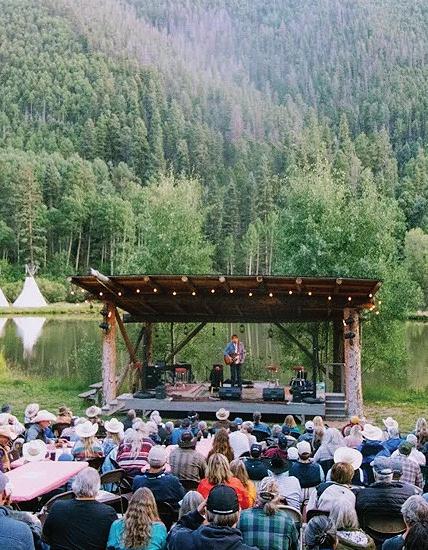
Red River 8750’ BBQ and Music Festival
Experience three days of music, fun and a BBQ cookoff competition with cooks from across the Southwest. Enjoy daily live music lakeside at Bitter Creek Ranch, at Motherload Saloon, and in Brandenburg Park.
When: August 15-17
Where: Red River, NM
Visit: redriver.org/events
4 Great American Outdoors Day
Great Sand Dunes NP Free Admission www.nps.gov/grsa/
14-17 Taos Pride Taos, NM - taospride.org
15-29 41st Annual Music From Angel Fire Angel Fire, NM musicfromangelfire.org
17-18 Santa Fe Indian Market
Santa Fe, NM - swaia.org
24 Dwight Yoakam with The Mavericks Taos, NM - taos.org/events/
30-2 Bean Day Celebration
Wagon Mound, NM - wmbeanday.com
31-1 Gate City Music Festival Raton, NM - ratonmainstreet.org
40 ENCHANTED OUTPOST | SUMMER/FALL 2024
SEPTEMBER OCTOBER

Michael Hearne’s Big Barn Dance Music Festival
Brings the best of Americana, Country, Folk, and Bluegrass music to northern New Mexico. Bring your listening ears and your dancing feet and celebrate Michael Hearne’s 22nd Annual Big Barn Dance in Taos.
When: September 5-7
Where: Taos, NM
Visit: bigbarndance.com
4-15 Taos Fall Arts Festival
Taos, NM - taosfallarts.com
5-15 New Mexico State Fair Albuquerque, NM statefair.exponm.com
19-22 Spanish Peaks Celtic Music Festival
La Veta, CO - celticmusicfest.com
25-29 Santa Fe Wine and Chilli Fiesta Santa Fe, NM santafewineandchile.org
28 The RAD Dirt Fest Gravel Bike Race Trinidad, CO - theraddirt.com
27-28 Cider and Fiber Fest Eagle Nest, NM eaglenestchamber.com
30 Annual San Geronimo Feast Day Taos Pueblo, NM - taospueblo.com

Red River Oktoberfest
Partake in a three-day celebration featuring the best craft beer, wines, spirits, artisans and food vendors, producers, live entertainment, contests, kid zone, a showdown viewing area, a judged beard and mustache competition, and more!
When: October 11-13
Where: Red River, NM
Visit: redriverchamber.org/events
5 New Mexico Brew Festival
Albuquerque, NM - nmbrewfest.com
5 La Veta Oktoberfest & Car Show
La Veta, CO - lavetaoktoberfest.org
5-13 ABQ International Balloon Fiesta
Albuquerque, NM - balloonfiesta.com
5-6 Santa Fe Harvest Festival
Santa Fe, NM - golondrinas.org
25-27 Taos Mountain Balloon Rally
Taos, NM - taosballoonrally.com
31 Taos Halloween on the Plaza
Taos, NM - taos.org
More fun for everyone!
NOVEMBER
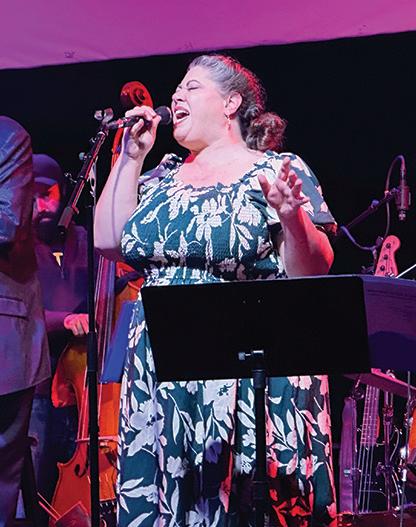
Frank Morgan Taos Jazz Festival
Get ready for a weekend of spectacular Jazz in northern New Mexico. Presented by the Taos Jazz Bebop Society in honor of Frank Morgan, the late, great alto saxophonist who considered Taos home. Enjoy four days of world-class live jazz music.
When: November 13-16
Where: Taos, NM
Visit: taosjazz.org
2-3 Dixon Studio Tour Dixon, NM - dixonarts.org
11 Veteran’s Day in the Park Great Sand Dunes NP Free Admission www.nps.gov/grsa/
18-30 Taos Folk Holiday Popup Taos, NM - taosfolkart.com
25-30 NM BioPark Society’s River of Lights Albuquerque, NM - riveroflights.org Through December 30th
29 Twirl Aglow Party Taos, NM - twirltaos.org

To promote your event complete the form at: enchantedoutpost.com/suggest
41 ENCHANTED OUTPOST SUMMER/FALL 2024 |
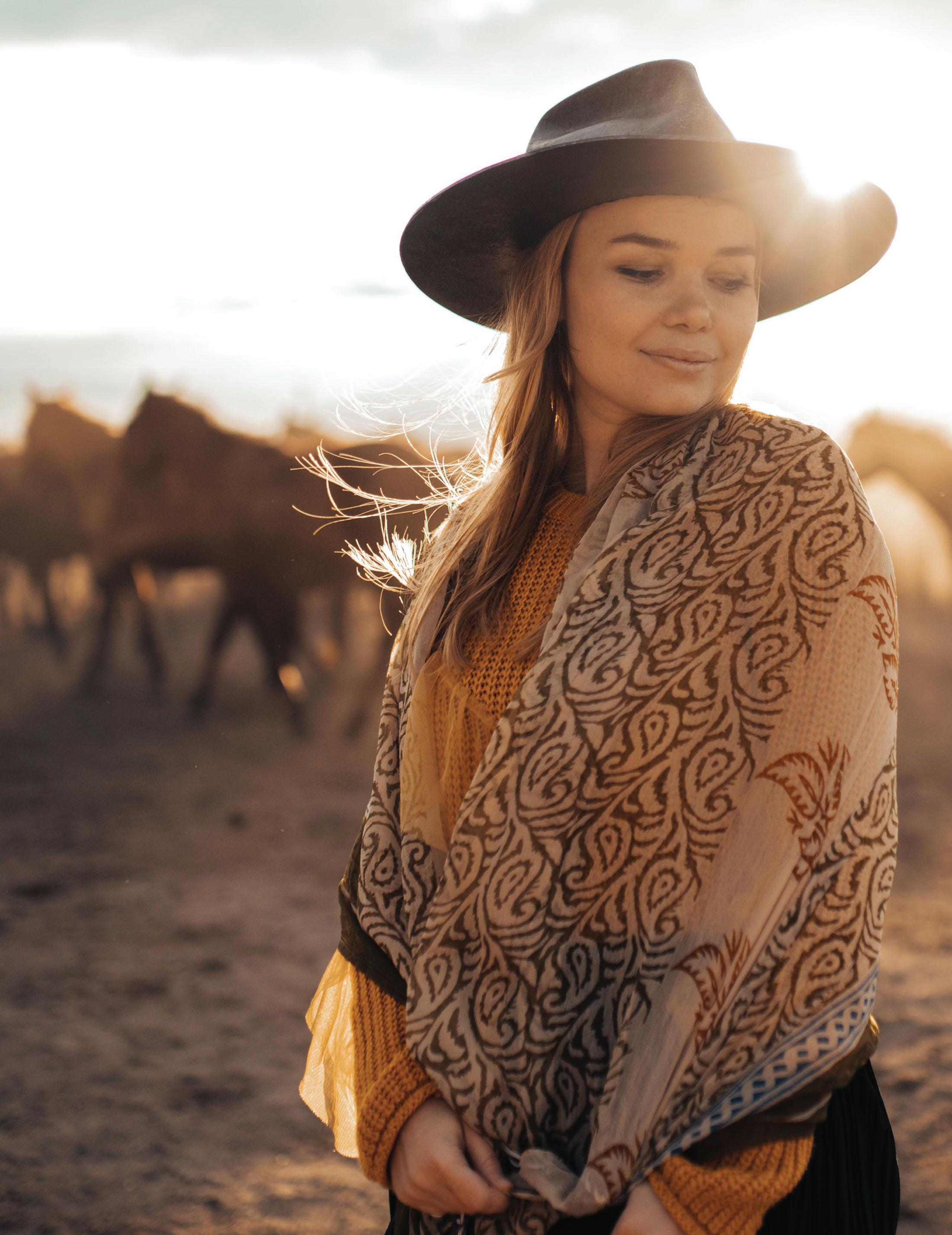
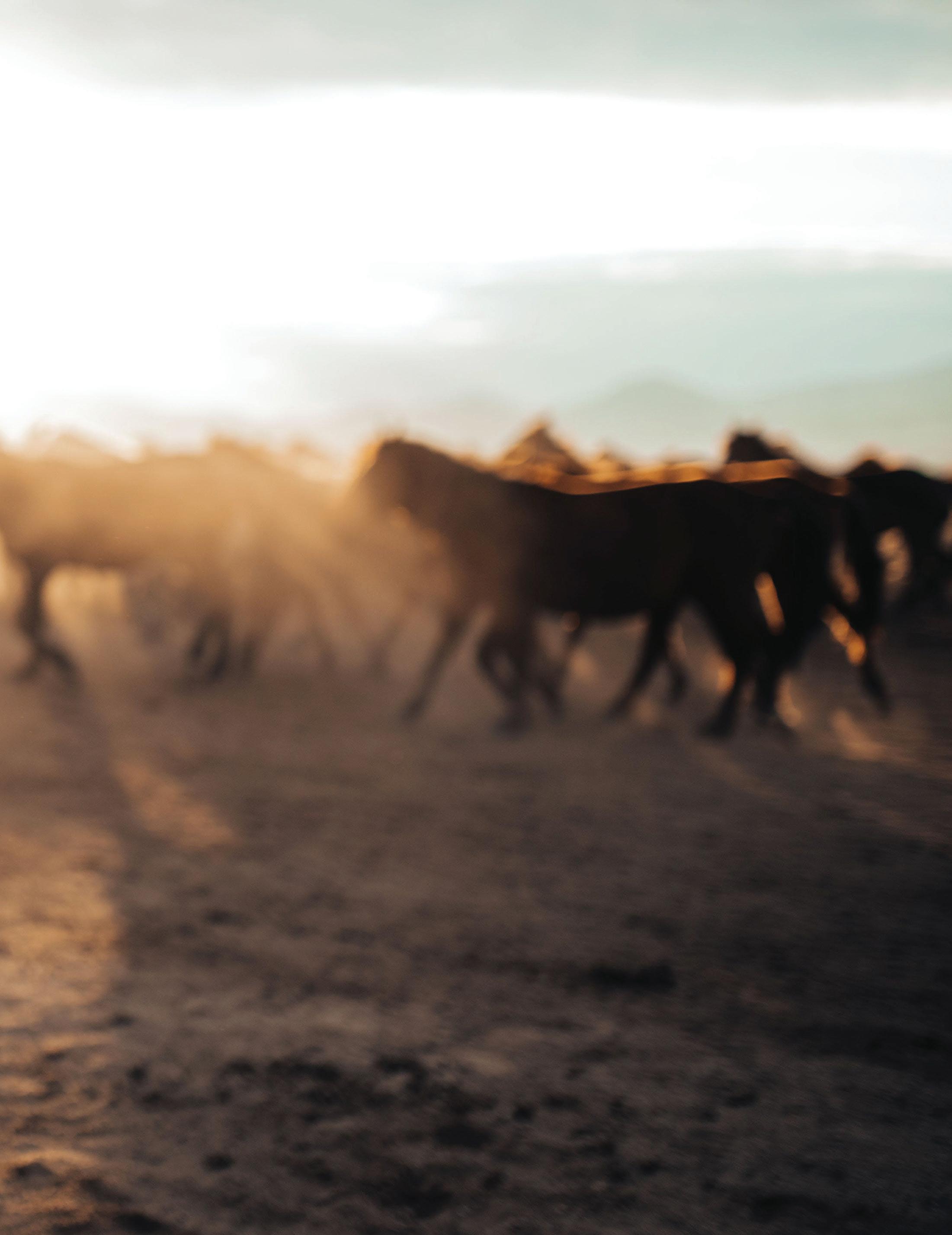
Southwestern style is as distinctive as the region itself. Rich colors and natural fabrics express the untethered spirit of the land and our people.
LIFESTYLE STYLE TRENDS IN DWELLING ARCHITECTURE | 44 THE WEARABLE ART OF SIX HAND HAT CO. | 50 CELEBRATING MOUNTAIN TRADITIONS | 55
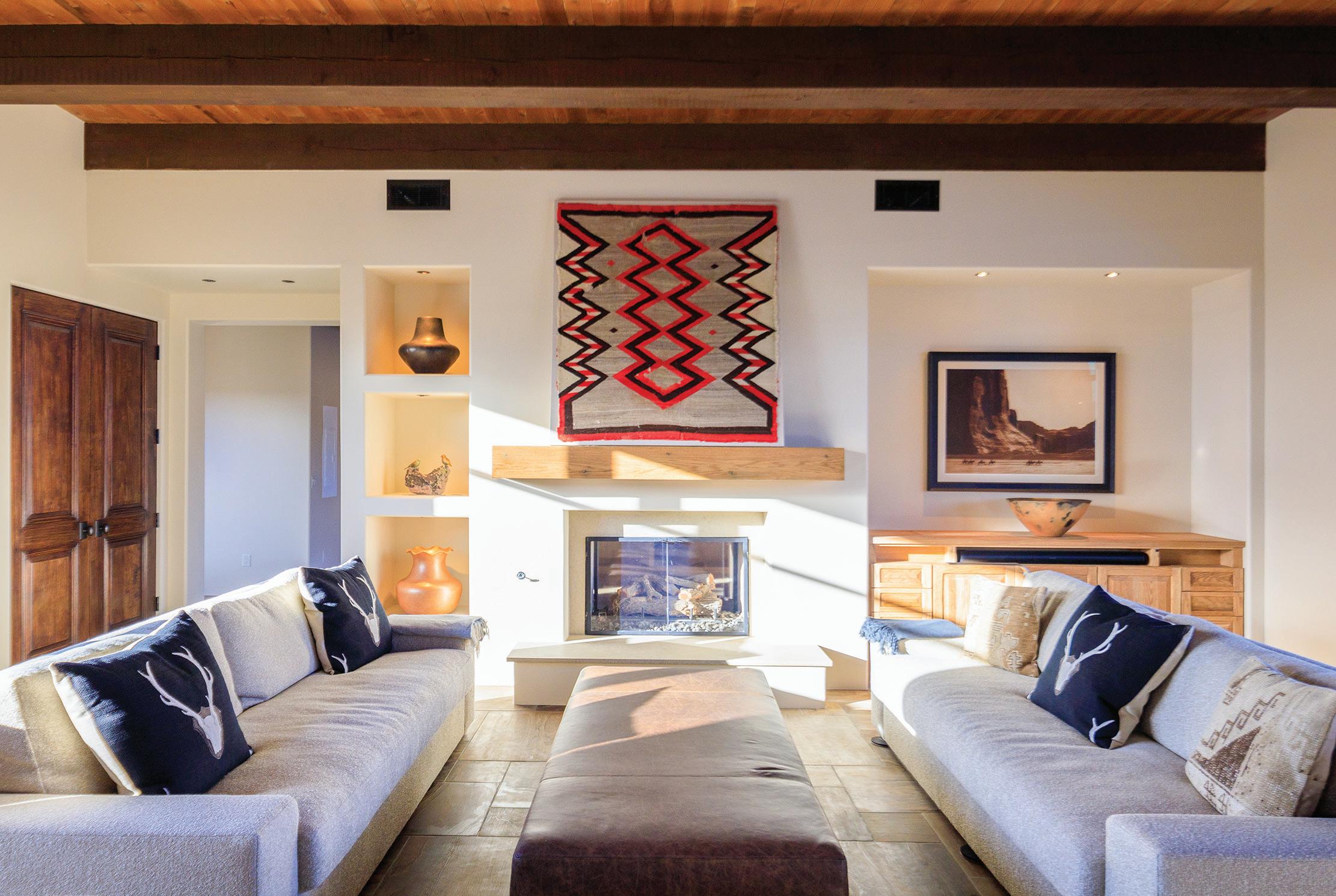
Northern New Mexico’s architectural style illustrates our cultural heritage, artistic innovation, and deep connection to the diverse, rugged high desert and alpine terrain. Rooted in the region’s rich history, the classic Pueblo style stands as a testament to the traditional indigenous architecture prolific throughout the region. Thick adobe walls, flat roofs, and vigas evoke a timeless harmony with the arid landscapes, mirroring the ancient dwellings of the Puebloan people. Examples of Pueblo style—as well as the more contemporary Territorial home style—are traditionally the style of choice among the region’s homeowners and designers. Highly sought-after historic Pueblo style homes and townhouses in central Taos often fetch a hearty price tag, even though these aging properties often need updating.
Style Trends
Classic Pueblo to Modern Chalet
The evolution of architectural trends that are defining our dwellings and shaping our meaning of home.
Now in a fascinating evolution, contemporary architects seem to be drawing inspiration from these time-honored principles, all while embracing the emerging trend toward more modern architecture. As the Pueblo style’s earthy tones and organic forms endure, modern contemporary design has introduced sleek lines and expansive windows, framing panoramic views of northern New Mexico’s majestic mountains. Even so, timeless architectural design is still the style of choice among many buyers in Taos and the surrounding area.
“Clients have been asking for a return to the warmth of a more traditional New Mexican aesthetic,” says Taosbased home builder Max Edelman of Taos Mountain Adobe. “For several years the push was for more clean lines and minimalism. Fortunately, our New Mexican architecture can mix with
44 ENCHANTED OUTPOST | SUMMER/FALL 2024
Above: The interior living space of a Taos Mountain Adobe home.

so many different pallets, from stark modern to old adobe and everything in between.”
This architectural fusion reflects a sophisticated balance between tradition and modernity. New home builds in the region now blend the simplicity and sustainability of Pueblo design with the contemporary comforts and aesthetics of modern architecture. The result is a captivating visual dialogue between the ancient and the avantgarde: a celebration of the region’s diverse influences and a testament to the enduring appeal of architectural styles that honor the spirit of the region’s stunning landscapes.
“The most profound advances that I’ve seen in recent years have been in energy efficiency. The decreases in electrical and gas or propane needs has genuinely surprised me,” Edelman adds.
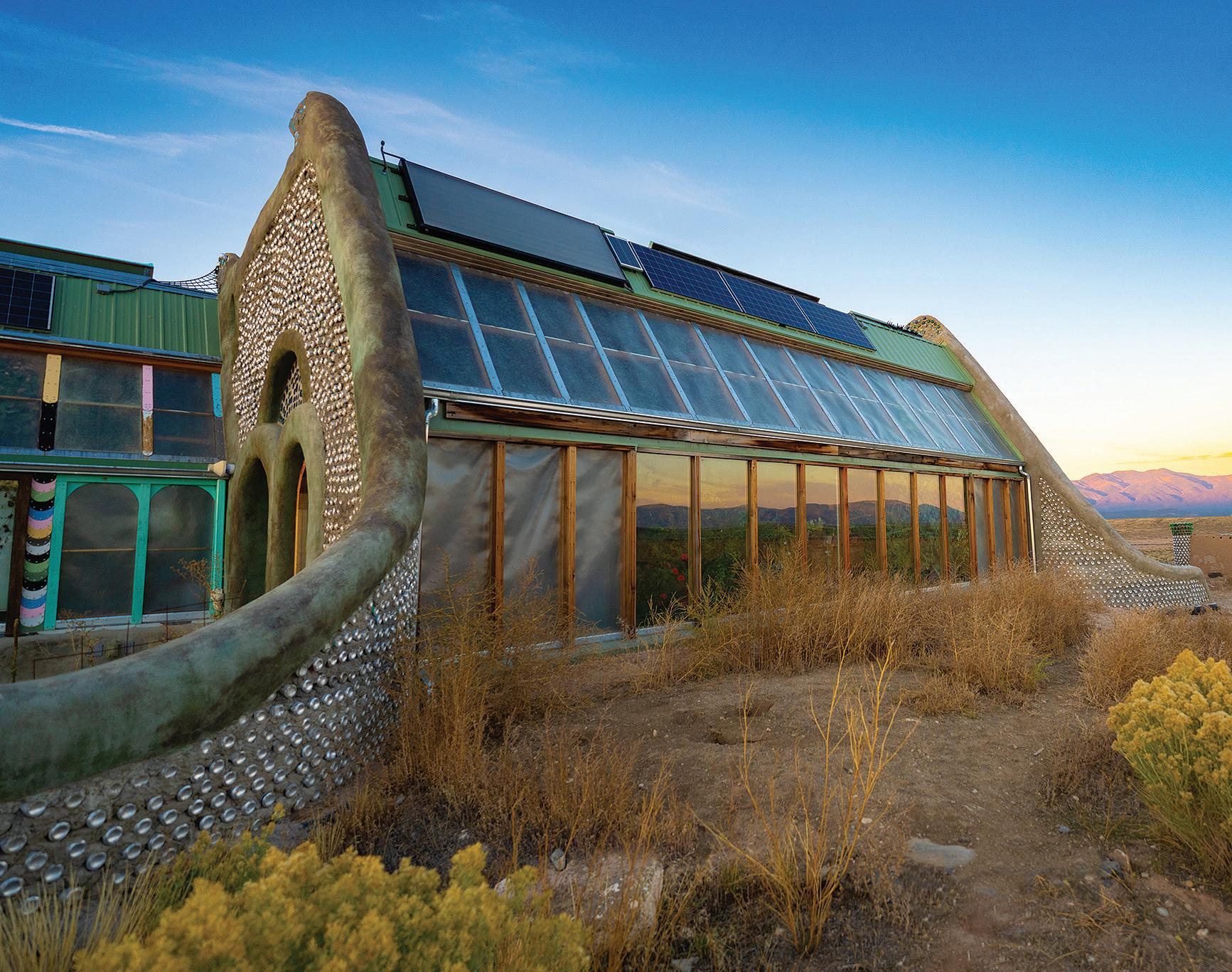
45 ENCHANTED OUTPOST SUMMER/FALL 2024 |
Top: A Pueblo style-inspired home casts a glow against fall aspens in Taos. Above: An Earthship dwelling showcases the use of reclaimed materials and captured sunlight.

To further broaden the regional architectural diversity is the flourishing Greater World Earthship Community, which sits just beyond the famous Rio Grande Gorge bridge. Here, home design has taken honoring the landscape into the stratosphere. One fundamental architectural characteristic of autonomous dwellings is the use of—or more appropriately, the reuse of—materials in a foundational effort toward sustainability. Artistic minds confront design from an out-of-thebox perspective; Earthship dwellings are considered works of handcrafted sculpture as much as they are seen as self-sustaining engineering marvels.
Discussing the advancements of this dwelling architecture and construction style, Earthship founder Michael Reynolds comments: “The original Earthship community here in Taos set the stage for the ongoing advancement and improvement of this particular building style. We’ve strived to maintain a focus on evolving our design methods year over year.
Earthships we are building today are radically better now than the ones we first built in this community.”
In the higher elevations of the Sangre de Cristo range, structures institute architectural attributes for not only their aesthetic value, but also to combat the elements. The extreme temperature variance and significant annual snowfall require higher pitched roofs, often utilizing aluminum standing seam materials. Traditionally, homes have been designed with a log or wooden board and batten.
Alpine architectural trends have also evolved and, again, modern sharp lines utilizing state-of-the-art architectural materials have become more commonplace. New home designs implement expansive windows to frame the panoramic views of the surrounding peaks and Aspen meadows. Whether a contemporary chalet or a traditional lodge style, homes are constructed for efficiency utilizing cutting edge technology.
“Our first truly modern build was a home designed for practicality, budget,
and a style that we had not seen in Angel Fire,” says BJ Lindsey, owner of Lindsey Custom Builders and the current Mayor of the community. “The home was very well received, and demand for that style skyrocketed. We feel that this style works very well in our landscape. The homes are not as tall as traditional chalet style construction, and with a blend of natural finishes such as stone, stucco, and metal accents, this design nestles well into the natural landscape.”
From the arid high desert of the Southwest to the soaring snow-capped peaks of alpine landscapes, it’s clear that architectural design has continued to evolve, embracing diverse influences and reflecting the spirit of each locale. In this dynamic architectural tapestry, the past and the present dance in harmony, creating homes that echo a legacy to stand the test of time. t
46 ENCHANTED OUTPOST | SUMMER/FALL 2024
A modern alpine chalet designed and built by Lindsey Custom Builders stately stands on a fairway in Angel Fire. Photo: Jeff Caven

Feeding your family healthy and delicious food was never easier. You can be assured our foods will only enhance your family’s health, because we stock only the healthiest and freshest organic varieties available.
What’s in Your Healthy Dinner?


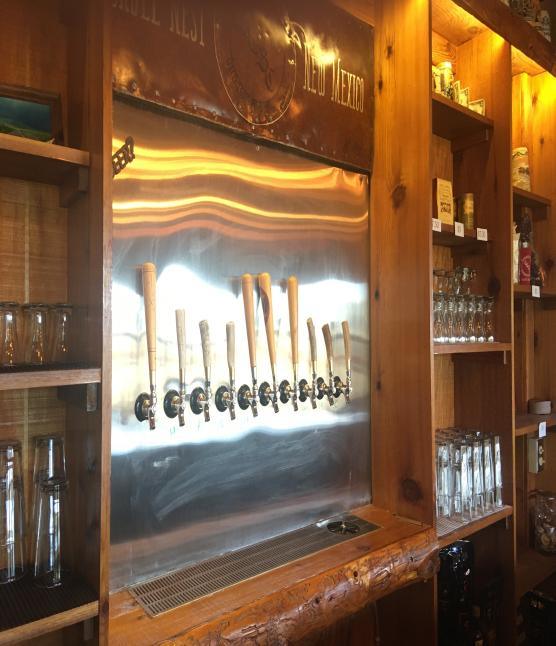
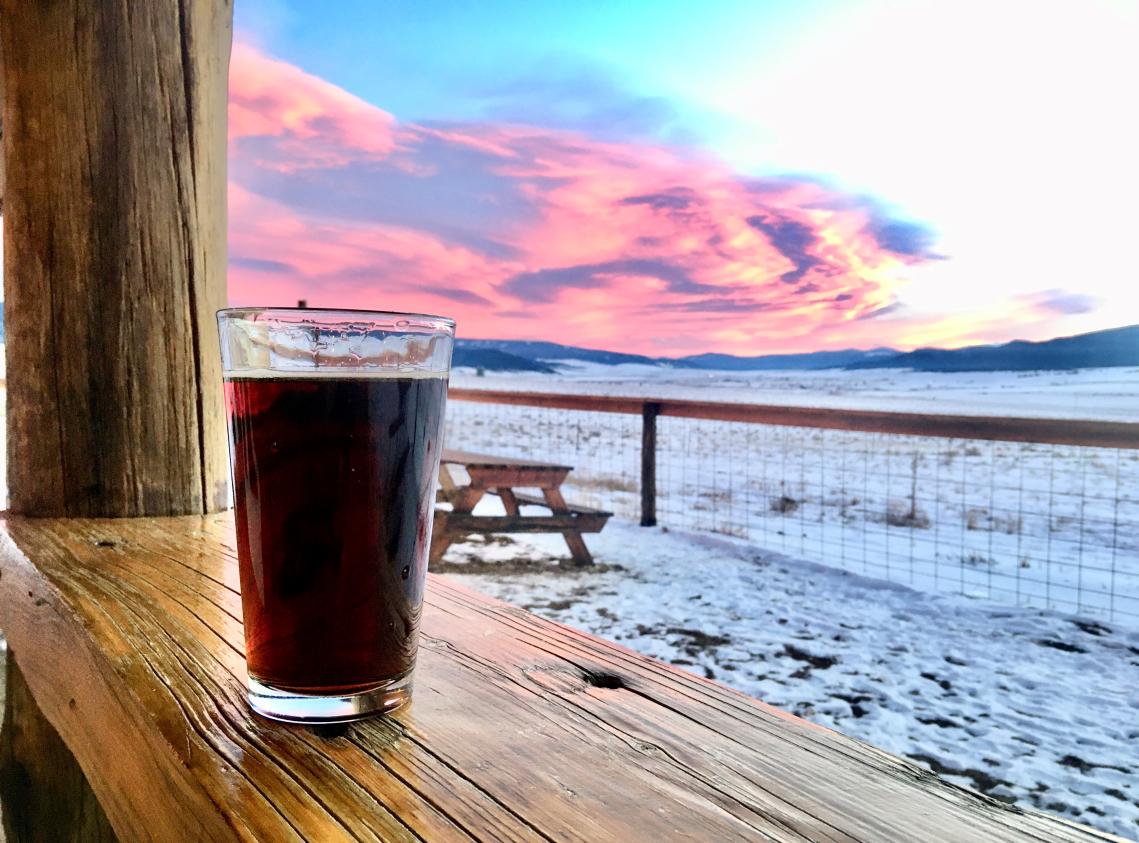

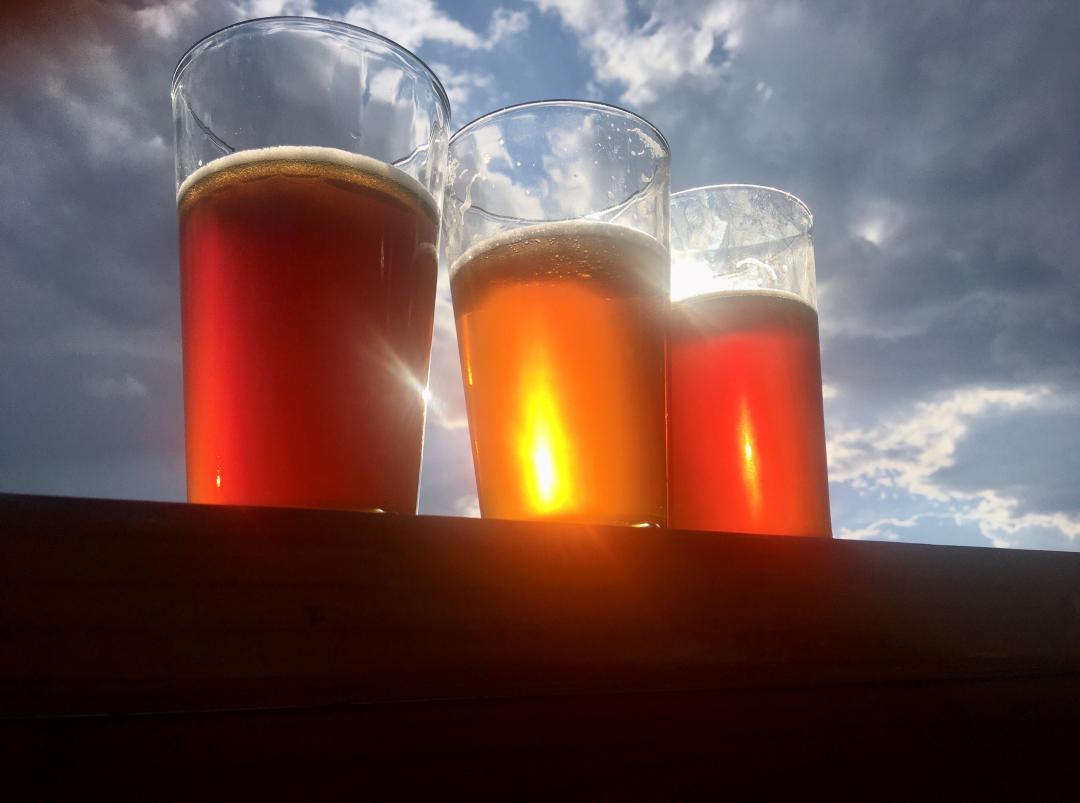
WWW.COMANCHECREEKBREWINGCO.COM 5 COMANCHE CREEK ROAD, EAGLE NEST, NM 575-37 7-BEER (2337) CCBC B yn r a e p w m ni o g C Come for the brews Stay for the views Visit Us Today! Everyone is Welcome Here! Our Members own this Store.
are volunteer-
This saves you
on the highest-quality foods available.
Paseo del Pueblo Norte Taos, NM 87571 575-758-3840
We
run.
money
314
Taosfoodcoop.com Taosfoodcoop@gmail.com










Tucked away in an alley just off the bustling central plaza in downtown Taos, an enchanting parlor beckons, its windows adorned in delicate gold leaf embellishments. Intrigued passersby find themselves compelled to pause, to lean in toward the weathered glass panes to catch a glimpse into a world veiled in mystery and charm.
Within these historic adobe walls, the true spirit of creativity dances in the afternoon sun cast through the windows, streaming across the floor and up a wall of artist tools and materials. Here, a hat maker with over thirty-five years of artistic prowess unfolds his journey into the world of timeless hat crafting.
The village of Taos has long attracted artisans from around the globe, establishing a long history of fine art and craftsmanship. The allure of the high desert landscape, with its ivory and auburn hues, has inspired countless timeless and priceless works. The artist’s pallet has often brought forth a blend of nature, culture, and history of the American Southwest.
Six Hand Hat Company—a boutique of handcrafted hats and other artistic curiosities—is one such establishment that truly embraces the ethos of this internationally recognized artist community.
Owned and operated by artist Mikel Robinson, and his wife and business partner Kristina Robinson, the establishment carefully and profoundly weaves the heart and soul of northern New Mexico into every authentic hat.
It was the allure of art that initially led Mikel to New Mexico. Within its enchanting landscapes, he discovered a newfound passion for hat making. Proud of an illustrious art career marked by museum shows, representation in galleries nationwide, and international acclaim, Mikel has been a stalwart provider for his family through his artistic

endeavors. What began as a leisurely pursuit in crafting hats burgeoned into a full-fledged venture as the demand for his creations soared. Collaborating with Kristina, Mikel delved into the prospect of opening a hat shop. The exploration led them from Santa Fe to the vibrant town of Taos, where, within a few days of their arrival, they identified the perfect location to establish their hat-making haven.
Deeply rooted in tradition, Mikel draws inspiration from a myriad of sources—be it a color, texture, or specific fabric. His creative process is a heartfelt homage to the longstanding craft of hat making. Immersed in the visual narratives of old photographs capturing hat fashion from the late 1800s through the 1950s, Mikel finds incredible inspiration. The essence of each of his hat creations is a testament to preserving this timeless tradition, while showcasing the endless
possibilities inherent in hat design. Mikel’s mission extends beyond the artistic process; he seeks to create hats that not only reflect a historical legacy, but also serve as a personalized reflection of the individuals who wear them. This commitment results in a diverse range of hats, from the traditional Western and dress styles to unique pieces that stand apart, ensuring clients discover hats as distinctive as they are.
But the process of making custom hats involves a meticulous understanding of the client’s needs.
“The first thing we need to find out from our client is what they would like the hat to do for them,” explains the artisan. Whether the hat is for work, everyday living, or a special occasion, Mikel engages in a collaborative process with clients, trying on various shapes and discussing preferences. The nature of the material allows for subtle adjustments,
51 ENCHANTED OUTPOST SUMMER/FALL 2024 |

N Plaza,
Six Hand Hat Co. 133
Taos, NM
ensuring each hat is a perfect reflection of the wearer.
All hats crafted in the artisan’s shop are made from fur felt—either 100% European hare or 100% beaver fur—a material that has been the choice of custom hatters for centuries due to its weather resistance and durability. Robinson shapes each hat by hand, ensuring a personalized touch in every creation. When it comes to embellishments, the shop loves incorporating materials that reflect the essence of the Southwest, such as turquoise, silver, and fabrics echoing the region’s vibrant colors. Antique ribbons and fabrics, sourced to create traditional ribbon hat bands, add a touch of history
and uniqueness to each piece.
In addition to their exquisite hats, the shop carefully curates a collection of products that align with their values. Everything in the shop is either artist-made, sustainably made, or antique. From turquoise and silver jewelry crafted in-house to handmade goat leather bags, Native American-made earrings, pillows by a Turkish rug and tapestry restorer, and artist-made pottery—including Huggy Bears made by Jason Mondragon from Taos Pueblo. The shop is a treasure trove of unique, consciously selected items.
The shop also showcases art by the Familia Lorenzo from Guerra, Mexico.

These three generations of artists create exquisite Mexican Folk Art, a unique blend of traditional and pop art with distinctive colors and designs. Their wall-hung and wearable art find a home in the Taos shop, symbolizing a connection that transcends borders.
When it comes to Six Hand Hat Co., visitors who step inside are offered a glimpse into the world of bespoke hat making, where tradition meets innovation. Here the artisan’s journey unfolds, weaving hats that are not just accessories, but wearable pieces of art, reflecting the spirit of the Southwest and the soul of those who rest one upon their crown. t

SUM, SUM, SUMMERTIME MOUNTAIN TRADITIONS
As long winter months brighten into spring, we tend to daydream about the warm summer season ahead. The springtime showers and longer days bring new life to our gardens and flower beds, to our meadows and stream banks. Sunshine caresses the land, and critters awaken with a renewed spirit of this glorious season.
The morning chirp of songbirds becomes an alarm clock. The amber sun warms the face, and morning brew soothes the soul. Summer is a time to share laughter, adventure, fun, and excitement for all who join us here in this mountain oasis.

It’s a time when there is much to do for the land and our homes—but chores seem to fade into the distance. The mowing can wait if the rainbow trout are biting.
Summer in the mountains brings forth so much more than blue skies. There is an abundance of green foliage and rainbows, while wildflowers dance in the breeze. It symbolizes a time of family, community, exploration, and the longtime traditions that create lasting memories and become our legacy.
In Happy Horse Valley, the grazing horses seem to radiate the joy and free-
Damon and Christine Lablanc of Covington, Louisiana cut loose at Enchanted Circle Campground in Angel Fire.
A PERFECT SUMMER DAY is when the sun is SHINING, the BREEZE is blowing, the birds are SINGING, and the lawnmower is BROKEN. –James DENT

dom they must feel. They’ve returned to the fresh mountain air to saddle up, transporting visitors to the higher elevations surrounding the valley.
Thrill-seekers wipe off the dust, tune up their mountain bikes, and gear up for downhill adventure. Campers return to the RV parks, campgrounds, and national forests. Anglers cast from the riverbanks and lake shores. These places of familiarity are part of the excitement for summertime visitors, who come to enjoy the richness of a slower pace and our thriving mountain towns.
Families arrive with the anticipation of summer holiday gatherings, parades, and concerts in the park. And who wouldn’t be ready for a break from school or work? Markets and festivals fill the calendar with activities that only summertime can bring.
Enchanted Outpost asked readers what traditions they’ve come to enjoy and love during summertime in the southern Rockies. Here’s what they had to say.
Kevin Wright, Red River, NM
“Our first born was created on my wife’s and my first trip to the Enchanted Circle. We stayed in Eagle Nest at the Horseshoe Lodge. While in Zelda’s— which at the time was a craft store—the attendant suggested we take a day trip
to Valle Vidal through Cimarron. We eventually made it to Cherokee Point where Costilla Creek merges with Comanche Creek, and we were treated to our first bear sighting. After dinner at Texas Reds in Red River we returned to Eagle Nest—and a family tradition was born. We’ve spent summer vacations returning to Red River ever since. We love riding the four-seater bikes, shopping, renting Jeeps, and driving the high mountain dirt roads. Now that our kids are grown and they now have their own children, our family still returns in both summer and winter.”
Christine Lablanc, Covington, LA
“The beauty of the Enchanted Circle region is mind-blowing. From sunup to sundown on many occasions we enjoy spending the day exploring and adventuring the many Jeep trails this area has to offer. Can’t beat a warm summer
56 ENCHANTED OUTPOST | SUMMER/FALL 2024
Top: The annual Fourth of July Parade in Eagle Nest, New Mexico. Above: Luke Moussa of Tucson, Arizona picks the strings at Songbird Cabin in Black Lake, New Mexico.
drive with the top down and the setting sun in your rearview mirror. We also love visiting and fishing all of the crystal clear rivers and lakes. And, who doesn’t love a visit to the Bavarian at Taos Ski Valley. It’s a family favorite!”
Gabriel Traister, Taos, NM
“I particularly enjoy attending the Fourth of July Parade in Arroyo Seco every year. We’ve been going for years and years. It brings home the meaning of ‘hometown’ for me. Walking the main street, listening to live music, and enjoying treats at Taos Cow are all part of the experience.
I am an avid whitewater rafter with my own raft. Typically in the summer months you can find us navigating the chutes of the mighty Rio Grande. I particularly enjoy putting in after work around 4 o’clock and floating into the early evening. The canyon walls change just before dusk into brilliant shades of
orange and rust. It is truly magnificent.
Then, there’s the hikes in the canyon to Black Rock and Stagecoach Hot Springs in the warm summer months. With the beach along the shore of the Rio Grande, it is a perfect place to relax and take in the sunshine.
My friends and I also make a point to mountain bike the Southbound Trail from Angel Fire to Taos every year to enjoy the fall colors. It is a remarkable experience. So exhilarating and so much fun!”
It’s clear that tradition can mean many different things to different people. No matter how you slice it, the mountains bring a sense of adventure, exploration, relaxation, time with family, friends, and experiences that, year after year, become something to look forward to. t
J SHARE
Tell us about the summer mountain traditions that you enjoy—we would love to hear from you! Join us on our social media pages to share with us what makes your summer experiences memorable.
Visit us on Facebook and Instagram to get connected. Point your smartphone camera at the QR Codes below and tap.
Follow us:
FACEBOOK INSTAGRAM


Facebook @enchantedoutpost
Instagram @enchanted.outpost


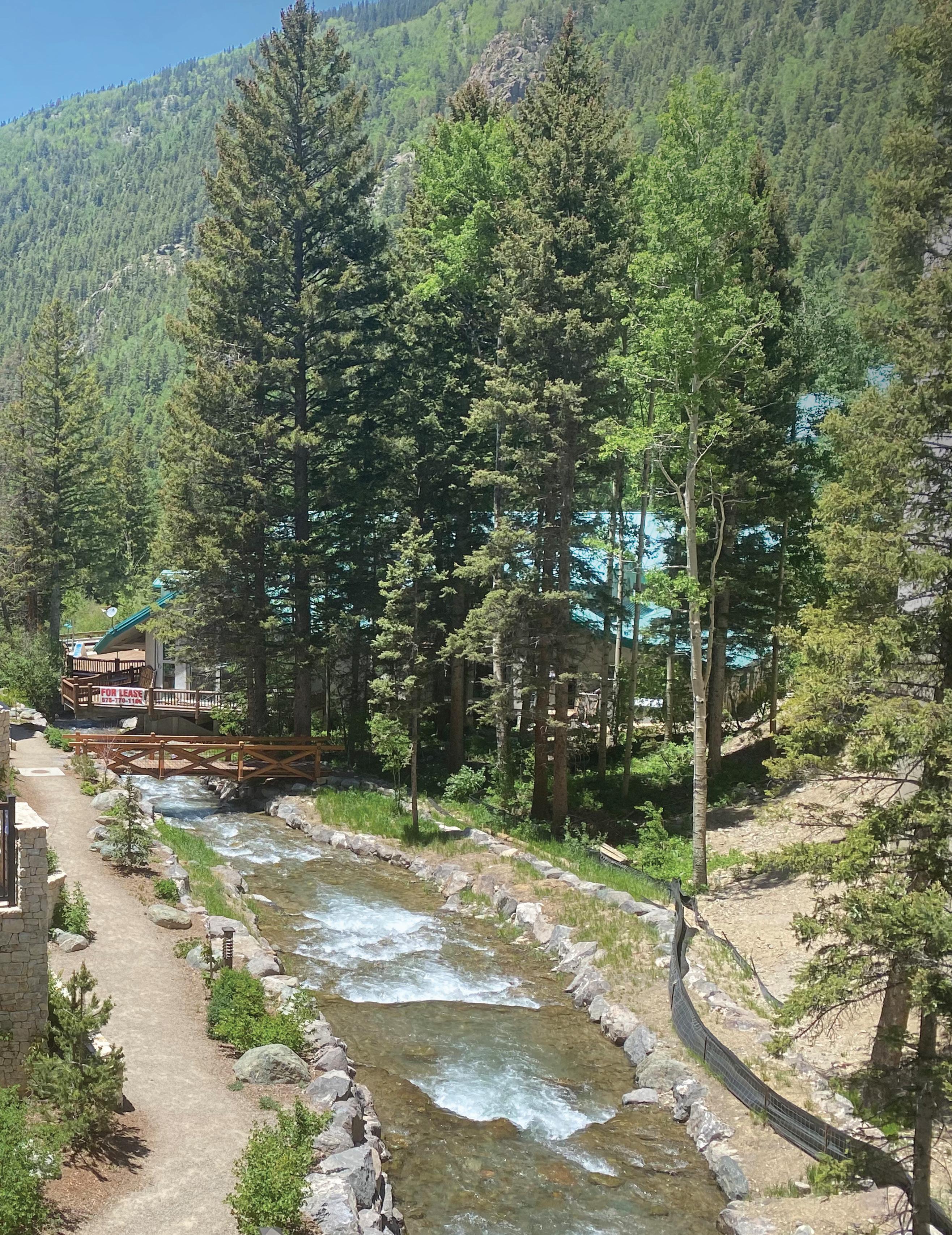
COMMUNITY INVESTIGATING STOLEN GUITARS | 60 A SALTY LITTLE SWEET SHOP’S, HOLLI EVERSON | 64 TREASURE HUNTING IN CIMARRON | 68
The Blake, a 115-room distinguished alpine accommodation which is part of the Taos Ski Valley, offers upscale rooms, suites, penthouse, and residence.
Photo: Scott Leuthold

GUITAR DESIGNER, ROBERT WEBER STOLEN GUITAR COMPANY, CORRALES, NM
In the realm of guitar making, where strings resonate with the soul of craftsmanship, guitar maker Robert Weber’s passion unfolds in the delicate dance between wood and melody. Rooted in familial guidance, the journey into guitar making began with a father’s teachings. “Although my father didn’t play guitar, he taught me to use woodworking tools at a very early age,” Weber shares, highlighting an early connection to the artistry of wood and music.
From the thematic allure of WWII airplane nose art to personalized details for discerning clients, each guitar is not merely an instrument, but a canvas reflecting the diversity of inspiration. “I am inspired by everything I see,” says Weber, “I look at a piece of wood and I often see guitars popping out!”
The year 2013 marked the onset of a new chapter in Weber’s journey: “At the time, I received a handmade cigar-box guitar as a gift.” This gift sparked the revelation that crafting guitars might not be as daunting as he initially perceived. Once he overcame his fears about creating guitar necks, the artisan discovered specialized tools and tem-
plates, propelling him into the realm of precision instrument making.
According to Weber, the custom guitar making process is a collaborative dance between the artisan’s expertise and the client’s musical desires. “When I receive a request for a custom guitar, I spend a considerable amount of time getting to know the client and their guitar desires. Tailoring instruments for experienced musicians involves an intimate understanding of nuances, from string thickness to incorporating sentimental materials. Custom guitars aren’t just instruments; they are deeply personal expressions for each client.”
Some clients, seasoned musicians themselves, know the exact specifications, down to the thickness and brand of guitar strings. One memorable commission involved crafting a guitar and bass from a fallen poplar tree on a client’s property—a truly unique and satisfying endeavor.
Since Weber himself has been a musician since 1970, his discerning ear plays a pivotal role in shaping the character of each instrument: “Being a musician allows me to know how a guitar should feel and sound.” Delving beyond aesthetics, considerations of playability and sonic character are paramount, ensuring that each guitar is not only visually stunning, but also a joy for the owner to play.



The narrative takes a captivating turn with the mention of Todd, a particular friend of Weber’s. Not only is Todd a guitarist with a penchant for James Taylor tunes; he’s a master jeweler with an eclectic collection of rare guitars. Todd’s bespoke instrument is a blend of art and functionality. “The guitar I made for him was a cigar-box guitar featuring a custom painting of Robert Johnson, who many say is ‘the Godfather of the Blues’.”
Amid the intricate craftsmanship process, the artisan’s favorite chapter unfolds in shaping the body—or in his words—the soul and spirit of the guitar. To Weber, “creating the body of the guitar is exhilarating.” From selecting the perfect wood pieces to handcrafting the final shape with wood files, planes, and meticulous hand-sanding, the body emerges as the tangible expression of the instrument’s essence.
The culmination of Weber’s labor of love reaches its zenith when a new owner is introduced to their custom guitar. “The best part of making a custom guitar is when the new owner
plays it with delight for the first time. It is a transformative experience for both the musician and me.”
In the hallowed, sunlit space of his workshop, Weber weaves dreams in wood, crafting instruments that transcend the mundane and become conduits for personal stories and musical expression.
It’s a journey where the love for woodworking, the appreciation for natural beauty, and the passion for music harmoniously converge, creating bespoke guitars that are not just musical instruments—but timeless works of art.
Robert Weber’s Stolen Guitar Company is located in Corrales, New Mexico. He enjoys summer getaways with his wife, Debbie, at their retreat in Sierra Bonita, located north of the community of Guadalupita. Learn more about Robert by visiting his website. t
A solid wood electric guitar handcrafted from New Mexico spalted poplar by guitar maker Robert Weber of Stolen Guitar Company.
Stolen Guitar Company www.stolenguitarco.com
July 27 · 2024 - February 23 · 2025
TAOS · NEW MEXICO


TAOS



LUCHITA HURTADO Earth & Sky Interjected
Luchita Hurtado, Mascara (detail), 1975. Oil on canvas. 27 x 36 in, © The Estate of Luchita Hurtado. Courtesy of The Estate of Luchita Hurtado and Hauser & Wirth. Photo: Jeff McLane.
· NEW MEXICO

There are few places in the region that embody such cozy, wholesome, and warm-hearted kindness as much as Holli Everson’s A Salty Little Sweet Shop in downtown Taos. The business of baking and selling sweets is one that inherently manifests goodwill—because happiness is a significant part of the recipe. It’s just baked right in.
Enchanted Outpost sat down over a lemon bar with Holli to learn more about her dream of opening a sweet shop. Her story is a journey that is sure to inspire anyone considering following their heart. And, if it doesn’t, well then, at least a stop into her wonderful little shop will help in her pursuit to spread joy and fulfill her dream.
A BAKER’S DREAM
EO: What led you to open your little sweet shop?
H: Growing up in La Crosse, Wisconsin, there was (and still is) a sweet shop my friends and I went to on a regular basis. Walking in the door, the scent of sugar and smiling faces behind the counter absolutely warmed my soul. You could feel the kindness when you walked in. My taste buds would be rewarded as homemade caramel candies, anise suckers, or ice cream treats were served. I’ll never forget the way I felt walking into that sweet shop.
EO: What gets you up in the morning and gives you the energy to drive your dream forward?
H: I am doing what I love. When I’m walking to my shop in the wee hours
of the morning, breathing in the fresh air and looking up at the moon and the stars, it invigorates me. I’m filled with gratitude and wonder. I go in and start making treats—holding on to that energy of gratitude and wonder—and I sprinkle in a little love and a little joy. I have had people tell me they can feel the love when they enjoy my cinnamon rolls. To me, there is no higher compliment.
That is enough to keep me going. Knowing that people love the products I make, and return for more, is tremendously rewarding.
EO: What philosophy guides you in your business practices?
H: Customer service is my top priority. When people walk in, I want them to feel warm, cozy, and welcomed. Zen
64 ENCHANTED OUTPOST | SUMMER/FALL 2024
Meet A Salty Little Sweet Shop’s Holli Everson

(the friendly shop dog) is there to greet all who enter and show them the way. I want their experience to be memorable, and my Google reviews indicate that it’s working. My shop is unique because it’s a sweet shop combined with a bakery. We offer nostalgic candies, and we bake cookies and lemon bars daily, as well as cinnamon rolls on Saturdays from 10 to 4 (or until sold out). We have kettle corn, peanut brittle, snack mixes, candied roasted almonds—all made inhouse. We’ve got saltwater taffy, chocolate covered pretzels, giant lollipops, Fun Dips, Pop Rocks, etc. Our ice cream cookie sandwiches and ice cream parfait cups are made using ice cream I make here in the shop.
We sell locally roasted coffee beans, as well as coffee mugs, aprons, bandannas, and other great gift items. And we also

bake Zen Treats: homemade dog biscuits using only four ingredients, one of which is spent grain, locally sourced from the Taos Mesa Brewery.
EO: What experience in your day gives you the greatest joy?
H: Anytime I’m in the kitchen making candy or baking cookies, I feel joy. When a guest walks in and says “Wow! It smells amazing in here!” I feel joy. When they take that first bite of a fresh baked Coconut Lime Cookie and I get to see their eyes widen and smile, I feel joy. When they come in and find the nostalgic candies—something that brings back fond childhood memories for them—I feel joy. I guess to sum it up, bringing others joy in their day is ultimately what brings me joy.
I have had people tell me they can feel the love when they enjoy my cinnamon rolls. To me, there is no higher compliment. That is enough to keep me going.
65 ENCHANTED OUTPOST SUMMER/FALL 2024 |
EO: What made you decide to open a shop in Taos, rather than elsewhere?
H: I never thought I would actually open a shop anywhere. I had always dreamed of the idea, but never truly thought something like this could happen for me. When I moved to Taos, I was completely unfamiliar with it and didn’t know anyone here. I was having a “do-over” with my life, and this seemed like a good place to do it. I slowly started meeting people and making friends. One thing led to another and when this AMAZING little adobe space on Quesnel Street became available, I just knew. I walked into the space, and could feel how special it was. I didn’t know how I was going to make this happen, but I felt the universe give me a little push—sometimes a full-on shove! I am learning to listen to my intuition above all else, and so far it has served me well. Of course it’s the hardest, scariest thing I’ve ever done. Accept the challenge: that’s what I repeat to myself over and over. Accept the challenge. No risk, no reward. It is better to risk than to regret.
EO: Where were you, and what were you doing before the shop?
H: When I moved to Taos in 2019, I got a job serving at Medley. Prior to that, I spent twenty years living in Colorado. During the pandemic, I had the pleasure of working on a farm where I learned to grow and harvest food. I was always making cookies or candies and bringing them to my friends on the farm. They would say “You should open your own shop!” I truly believe a large part of A Salty Little Sweet Shop was manifested while my hands were in the dirt, loving and respecting the land, while dreaming about—and talking about—having my own little sweet shop. That’s the kind of magic I believe Taos holds.
EO: If you were to start over, what would you do differently?
H: Lots of things. I’d have more patience, and be more aware of the fact that things happen when they should, and as they should. It’s tricky to find a balance as a business owner—especially when you pour everything you’ve got into it. It’s not always easy to remain calm and clear, trusting that you are where you are supposed to be, and things are happening as they should. I also would have prioritized my local marketing.
EO: What do you think would help your business run more smoothly, now that you’ve had time to run it for a while?
H: I think when the construction is finished on the corner of Quesnel and Paseo, with better sidewalks and safer crosswalks, we will see a steadier business flow. With consistent business, we can generate consistent revenue to grow and realize our full potential.
There’s a lot of room and intention for growth. I need to invest more in marketing to help people know I am here. I love my space, but it is a bit tucked away. I just need to ensure I’m getting the exposure I need to increase customer traffic.
EO: How well do you feel your business has been received by the community?
H: I feel my business has been received well by the community. I received a grant last summer from the RDC (Regional Development Corporation), which helped me grow my business by adding new equipment to make ice cream, as well as obtaining ad space on KNCE, the local radio station. t

Mouth-watering treats tantalize the taste buds at A Salty Little Sweet Shop. Master baker and owner Holli Everson prepares treats daily in her shop, including freshly baked packaged goods such as kettle corn, cookies, snacks, and even healthy doggie treats.

66 ENCHANTED OUTPOST | SUMMER/FALL 2024
VISIT: A Salty Little Sweet Shop 105B, Quesnel St., Taos, NM 87571 (575) 741-6844


treasure hunting in CIMARRON
Come along on a visit to a place where the west is still wild. Discover why Cimarron—Spanish for mustang, meaning wild or unbroken—lives up to its namesake.
The village of Cimarron rests on the banks of the Cimarron River, a tributary of the nine hundred-mile Canadian River, whose headwaters begin at the Eagle Nest Dam. Located on the Santa Fe Trail, where the Rocky Mountains and tall grass plains meet, Cimarron sits at an elevation of 6,430 feet. Its community boasts a population of just around eight hundred year-round residents, which typically increases a bit during summertime. This beautiful and wild village is rooted on the eastern slope of the Sangre De Cristo (Blood of Christ) Mountains. Some say the name of the mountains refers to the brilliant and rich reddish hues that occur during the magical sunrises and sunsets.
 By Heather Leuthold
By Heather Leuthold
Cimarron and its surrounding region in Colfax County includes much of the vast, historic Maxwell Land Grant. The grant is one of the largest tracts of land to be owned by one person in the history of the United States of America.
Numerous ranches surround the village. Notably, Philmont, an extensive “high adventure base” scout ranch just four miles south, challenges scouts and adventurers with more than 214 square miles of rugged northern New Mexico wilderness. From backpacking treks to horseback cavalcades, outdoor adventure awaits in this legendary country. Make sure to grab your camera, a cup of coffee, and a churro donut before taking a drive out to witness the expansive views, seasonal wildflowers, and the herds of horses that graze freely in such picturesque splendor.
Though the village of Cimarron is small, it is thriving. With a few quaint coffee houses, restaurants, a brewery, shops, and a few artist’s galleries, it is a must-stop destination for local flavor on the eastern slope of the southern Rockies.
For those looking for good eats, you’ll encounter rich local flavors—think Southwest burritos with signature New Mexico chilis, churro donuts, or a cayenne pepper mocha. Or, for an overnight stay, be sure to visit the Historic St James Hotel. The hotel was constructed in 1872 and was a stop for infamous outlaws over the years, including Wyatt Earp,
68 ENCHANTED OUTPOST | SUMMER/FALL 2024
Weathered boots and other collectibles at Cimarron Antiques.
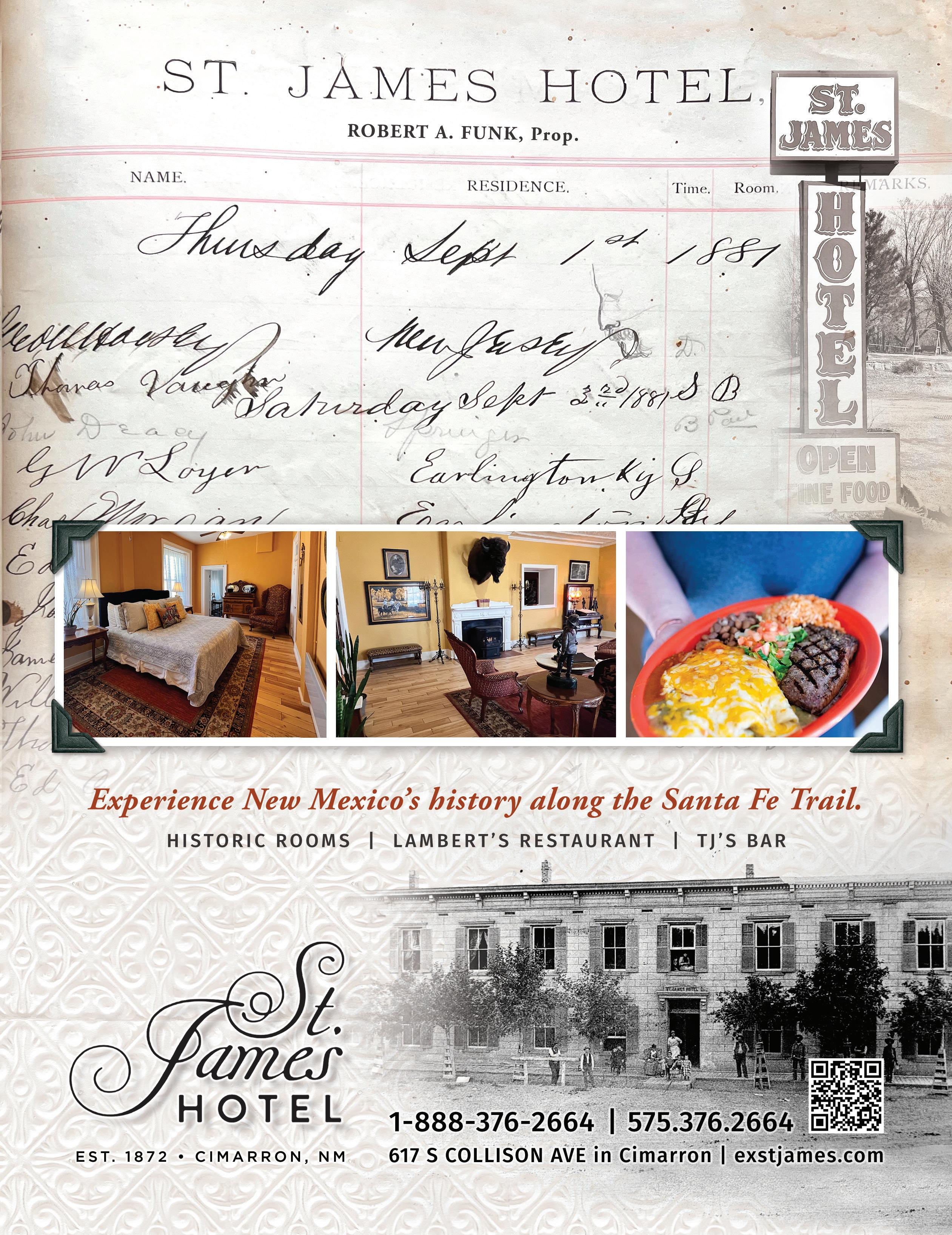
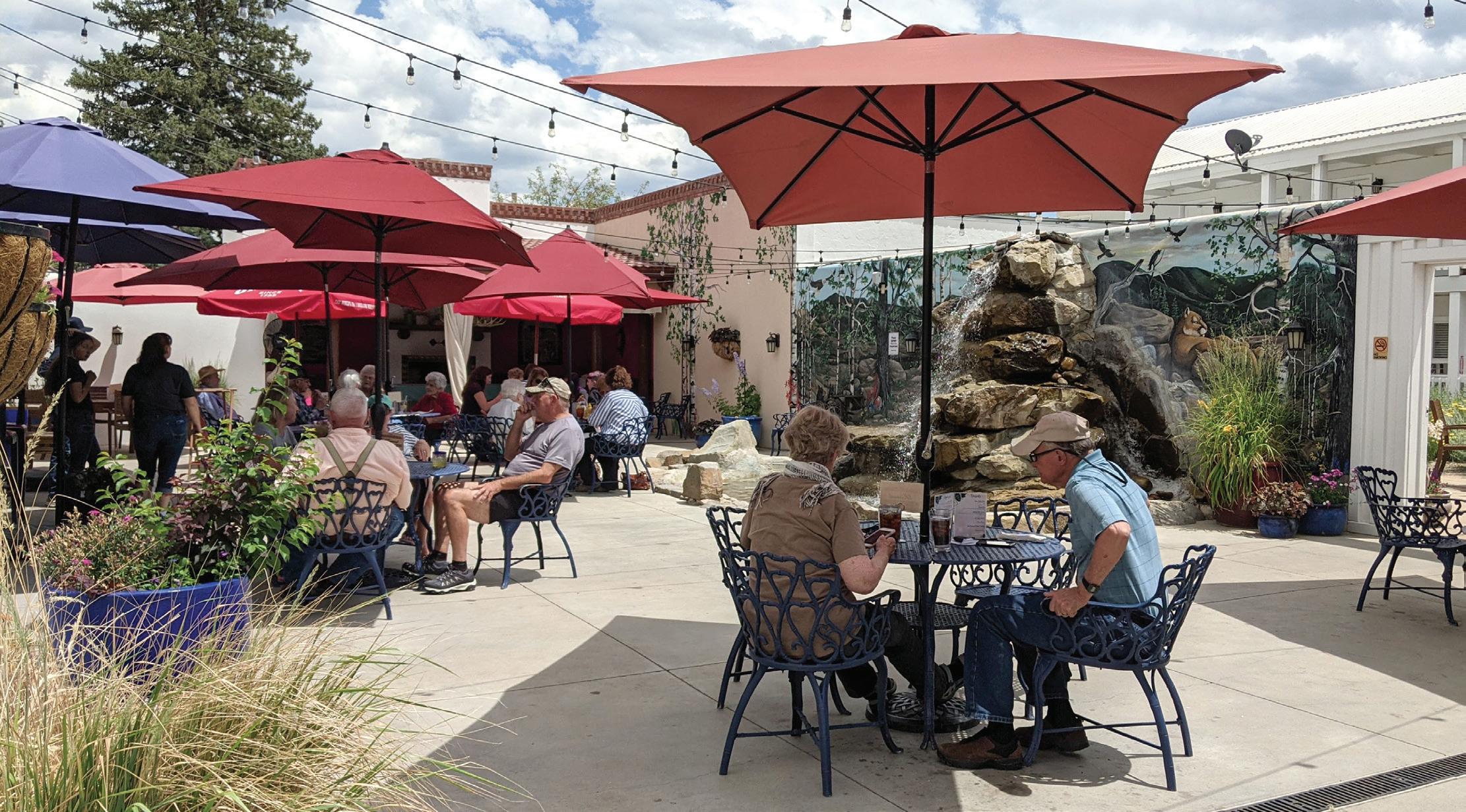


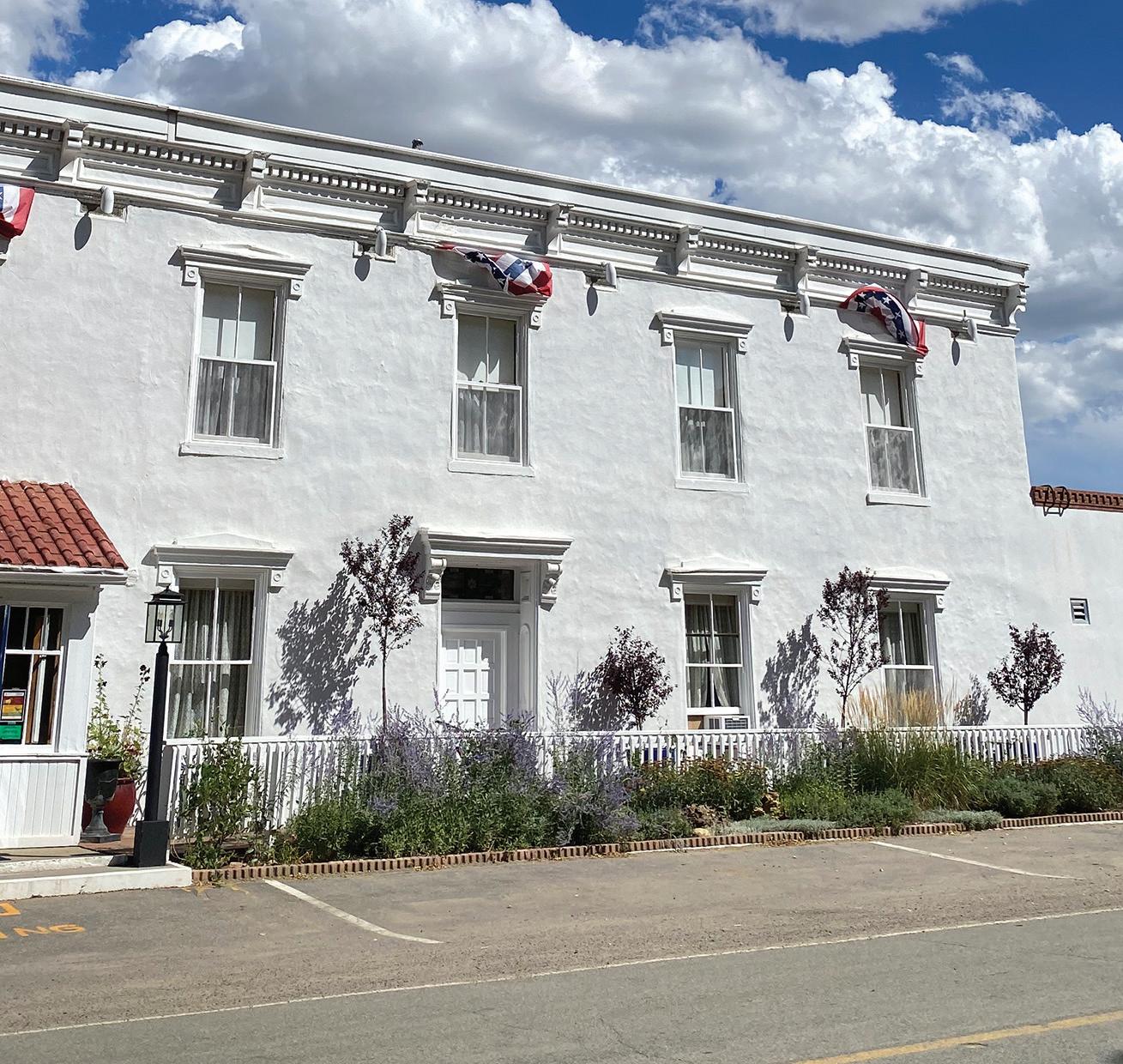
70 ENCHANTED OUTPOST | SUMMER/FALL 2024
Clockwise: Outdoor patio dining at Lambert’s Restaurant; Glass bottles in a store front window; St. James Hotel; Philmont Scout Ranch. Opposite
Page: An old saddle for sale; Cimarron antique shops offer unique finds and a quaint shopping experience.
Buffalo Bill Cody, Jesse James, and Annie Oakley.
While driving through Cimarron, you can still see much of the rich history of what the town was like in the 1800s. There’s a beautiful walking tour with a total of fourteen historical sites that mark points in history, including the Old Mill Museum. Each of the brass plaques perched on stone pillars tell a story of legacy, and how these sites are woven into the spirited lore of Cimarron today. The old Jailhouse and Mill are two of the most prominent structures, but there is so much more to see.
Step into the quaint shops throughout the village, and you’ll find many relics of the past scattered throughout the tour—some of which are available for purchase. Old leather boots, turquoise finds, and rusty artifacts are what I am drawn to on my treasure hunts. My favorites are the antique shops that display pieces of history in a contemporary way, seeming to bring these treasures back to life. Here are a few of the shops to pique your interest: Blue Moon Art and Gift Gallery, Cimarron Antiques, Hikers Coffee Co., Cimarron West, Blu Dragonfly Brewing, and the Cimarron Candle Company immediately come to mind.
Cimarron is still a place where the Wild West is called home for its residents. It’s a place with rich, colorful streets and buildings that have been repurposed and are flourishing today. Summertime and fall are magical times of the year to explore this open and vast country. When visiting, be sure to take an extra day or two to explore the wild sunflower fields, have a picnic lunch watching the wild bison, cast a line in the river, or find a local event such as the Maverick Club Rodeo or local holiday events to enhance your experience. t
J DETAILS
To visit Cimarron, take Interstate 25 from Las Vegas north to Highway 58 west or south from Raton to Highway 64 west. From Taos follow Highway 64 up Taos Canyon to Eagle Nest and on through Cimarron Canyon.
More information: Visit the Cimarron Chamber of Commerce website.
www.cimarronnm.com/


71 ENCHANTED OUTPOST SUMMER/FALL 2024 |

 Geum triflorum, also known as Prairie Smoke, waves in the breeze on a high elevation prairie located in the Sangre de Cristo Range. As the common name implies, the wildflower is primarily native to North American prairies, but it also grows throughout the western and the northern states. It is a flower that attracts honeybees in midsummer.
Geum triflorum, also known as Prairie Smoke, waves in the breeze on a high elevation prairie located in the Sangre de Cristo Range. As the common name implies, the wildflower is primarily native to North American prairies, but it also grows throughout the western and the northern states. It is a flower that attracts honeybees in midsummer.
CULTURE THE LEGACY OF ALDO LEOPOLD | 74 IDLEWILD’S KLONDIKE MINE | 80 NEW MEXICO’S GRAPE GROWING LEGACY | 82
Photo: Scott Leuthold

ALDO LEOPOLD
A LEGACY IN The Land of Enchantment
Aldo Leopold, a pioneer in environmental conservation and a prominent proponent of the land ethic, left a notable mark on the American environmental movement and New Mexico.
While his contributions to ecology and conservation are widely recognized and respected, the time he spent in New Mexico played a critical role in shaping his environmental philosophy. In this article, we explore Aldo Leopold’s life in the Land of Enchantment—specifically, the landscapes, experiences, and influences that helped shape his perspectives.
In 1909, Leopold first arrived in New Mexico as a forest assistant for the Forest Service. He was put in charge of the Apache National Forest in the southwestern region of the state. Leopold’s early experiences in New Mexico exposed him to the complexities of land management, water conservation, and the delicate balance between human activities and the natural environment.
Early on in Leopold’s Forest Service career in New Mexico he played a role in managing the Gila Wilderness, which at the time was the first designated wilderness area in the United States. His experience in the Gila profoundly influenced his conservation philosophy and his understanding of the intrinsic value of wild places and the importance of advocating for preserving them in their natural state. It was his time in the Gila Wilderness that laid the foundation for his later writings on the land ethic and interconnectedness of all living things.
As the years passed in New Mexico, Leopold became involved with a federal initiative called the Rio Grande Project, which was aimed at controlling and managing water resources in the Southwest. This expanded his understanding of ecological systems and their interdependence—a fundamental aspect of his later work. He came to understand the need for a holistic approach to environmental conservation.
Because of New Mexico’s diverse landscapes, from the high desert mesas to rugged mountain ranges to deepcut canyons, Leopold was given an ideal stage to explore the intricate relationship between mankind and the natural environment. It was here that his concept of land ethics developed into a framework extending the boundaries of morality to a consideration for the land itself.
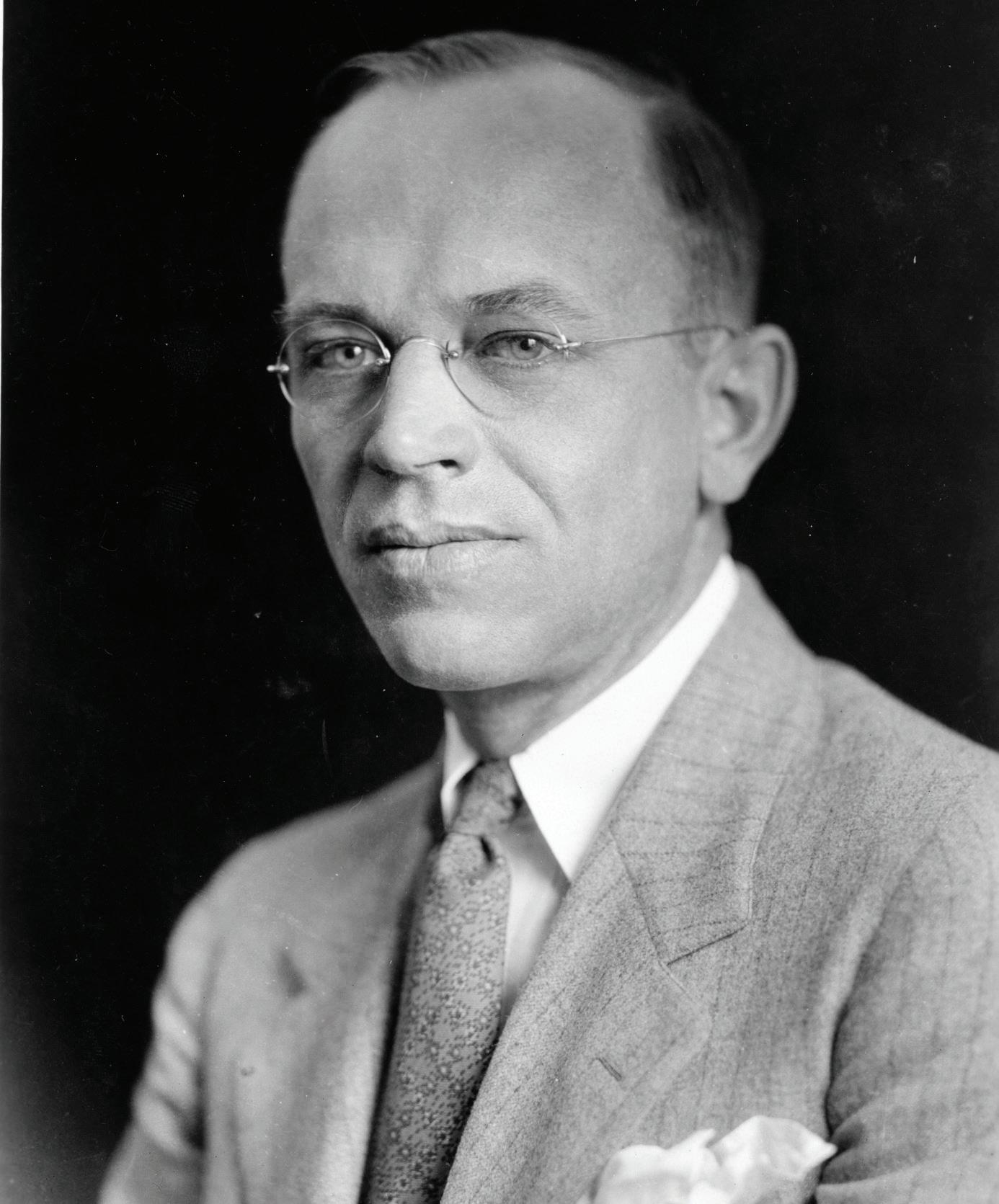
“Harmony with land is like harmony with a friend; you cannot cherish his right hand and chop off his left.”
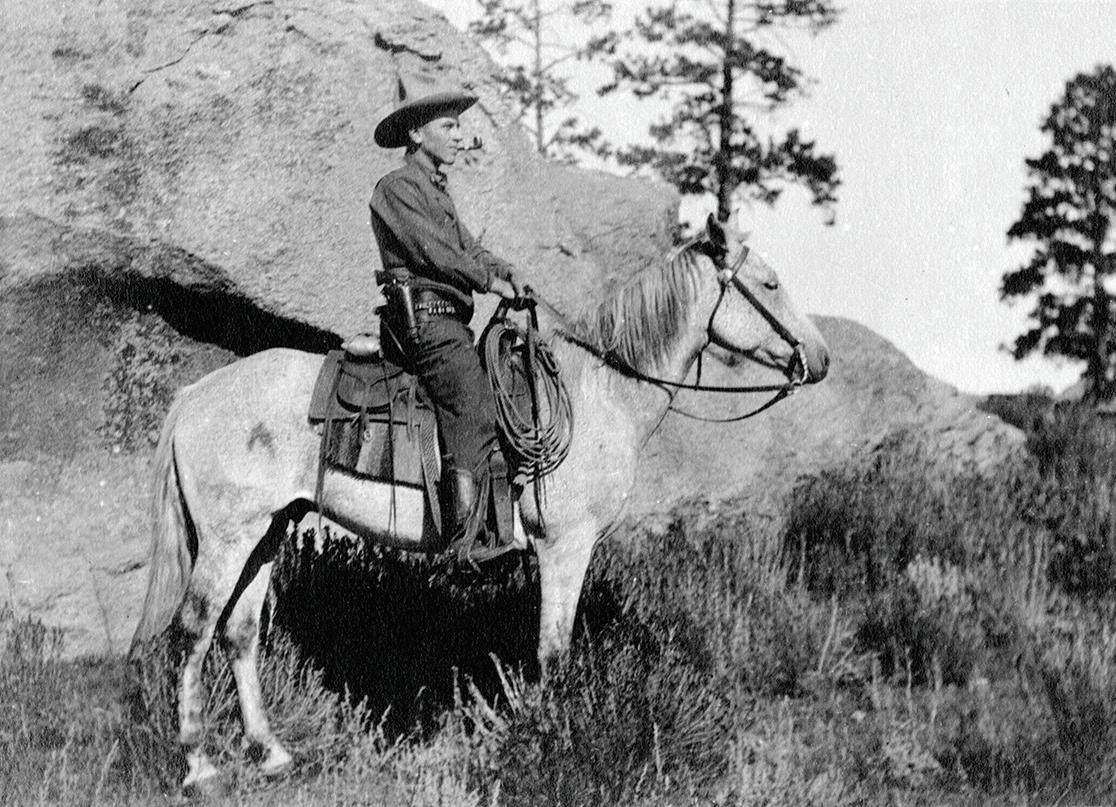
75 ENCHANTED OUTPOST SUMMER/FALL 2024 |
ALDO LEOPOLD
Left: A granite rock formation rises up from forest pine and a high desert prairie just west of the Tres Piedras Ranger Station and the Aldo Leopold House. The rock formation is popular among rock climbers.
Above: Aldo Leopold. Photos: Courtesy of the Aldo Leopold Foundation and University of Wisconsin-Madison Archives.
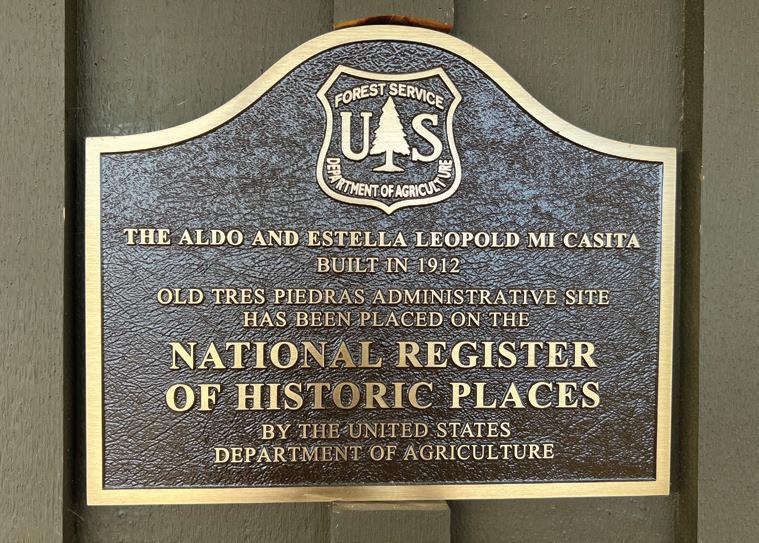

“We abuse land because we see it as a commodity belonging to us. When we see land as a community to which we belong, we may begin to use it with love and respect.”

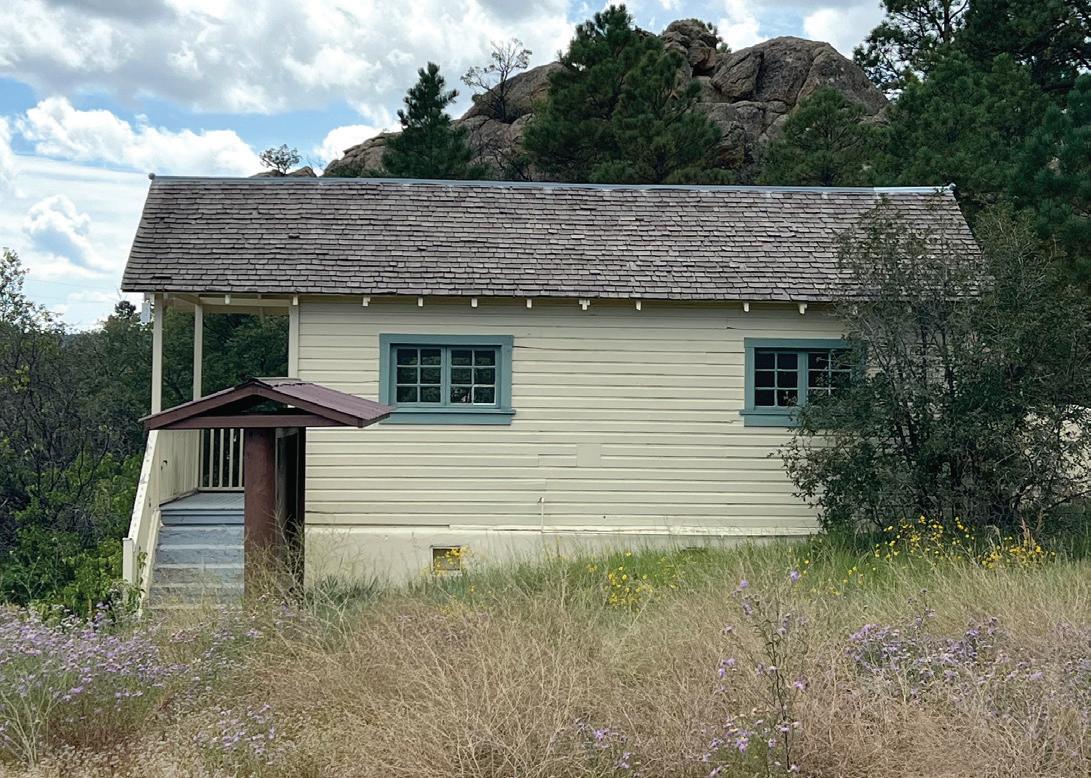
76 ENCHANTED OUTPOST | SUMMER/FALL 2024
ALDO LEOPOLD
He argued that humans should act as responsible members of a broader community that includes the land, plants, animals, and even soil.
In May of 1911, Leopold was relocated to Tres Piadres, New Mexico, to act as supervisor of the Carson National Forest. Tres Piedras became a significant location in Aldo Leopold’s life during his tenure there. For just over $650, Leopold, his wife Estella and family, acquired a piece of land near the village and built a home they named “Mi Casita”. The residence would later become the backdrop for many of his observations and reflections, as chronicled in his influential book A Sand County Almanac, first published by Oxford University Press in 1949. The book draws significantly from his experiences in the American Southwest, and continues to this day to inspire environmentalists, ecologists, and policymakers around the world.
In 1924, he accepted a transfer to the U.S. Forest Products Laboratory in Madison, Wisconsin, and became an associate director. In 1933, he was appointed Professor of Game Management in the Agricultural Economics Department at the University of Wisconsin, the first such professorship of wildlife management. There Leopold found residence on the Wisconsin River’s south bank and wrote his transformative book.
In the spirit of his great work and profound philosophy, he died of a heart attack while fighting a brush fire on a neighbor’s farm in 1949. He was sixty-one years old. Only one week before his death, he learned that Oxford University Press would publish his book. A little more than a year later the book was released, and since then has sold more than two million copies and been translated into more than fifteen languages. A Sand County Almanac has become one of the most respected books ever published on environmental stewardship.
The Tres Piedras property, located on a high desert mesa overlooking the Rio Grande Valley, was not luxurious by any means—but it held immense value to Leopold as a place where he could connect with nature and develop his ideas about conservation. Here he observed the seasonal changes, the flora and fauna, and the intricate ecological relationships that unfolded right outside his rural doorstep.
Today, the Aldo Leopold House is managed by the Aldo Leopold Foundation, and stands as a testament to Leopold’s commitment to living in harmony with the land. The Foundation has worked to preserve the home and its surroundings, allowing visitors to experience the place where Leopold’s ideas took root and flourished.
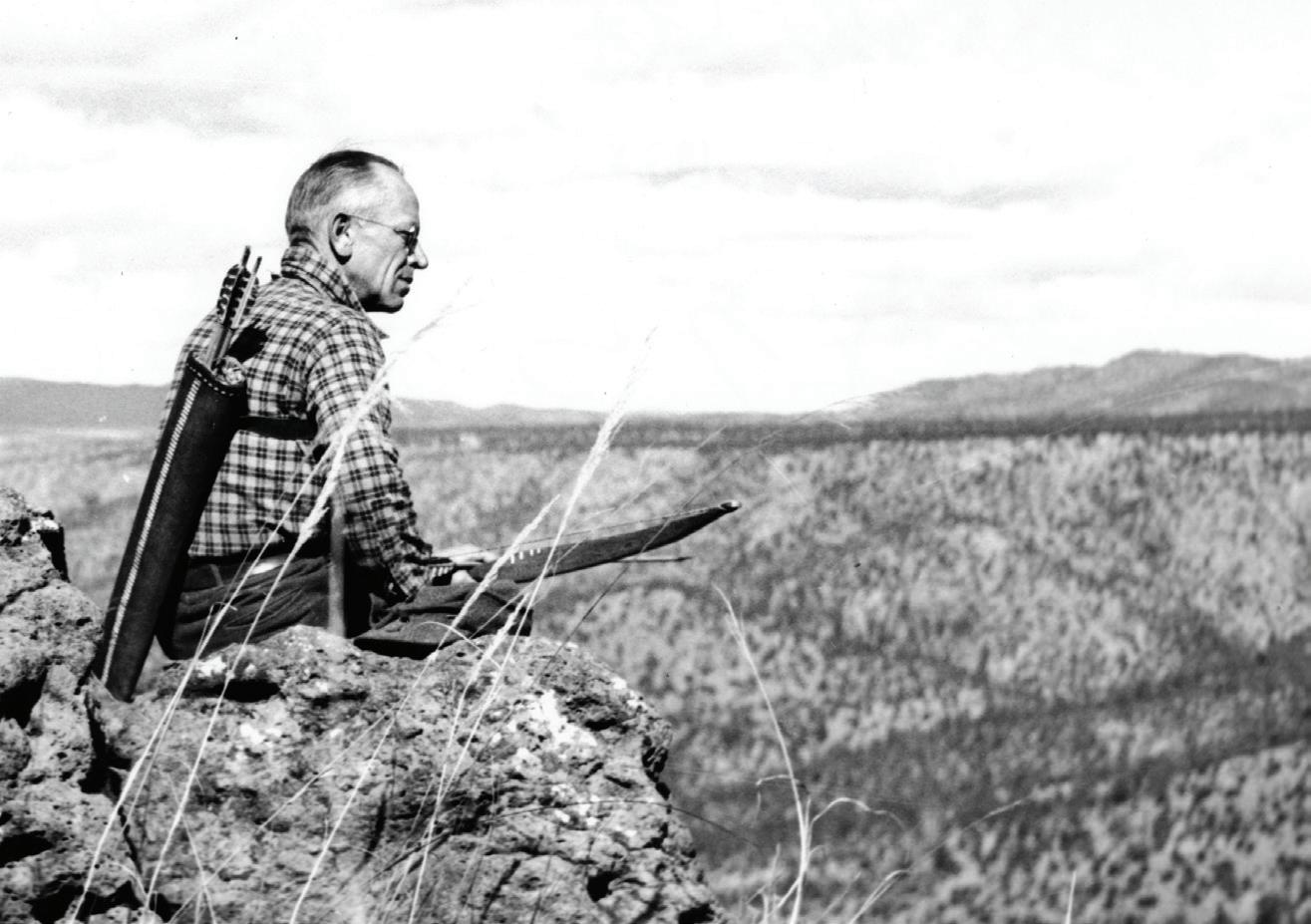
The Aldo Leopold Foundation, in conjunction with the Forest Service and Rocky Mountain Land Library, offers a writer-in-residence program. Visitors can apply to stay at the cabin for up to a month in the summer and fall seasons. Those granted accommodation can work on whatever project they wish, but are required to present their work to the public in Taos. The site serves as both a historical landmark and an educational resource, fostering a deeper understanding of Aldo Leopold’s legacy, and the importance of cultivating a harmonious relationship with the natural world. t
Left: Aldo Leopold House after the renovation; The view from the top of the granite rock formations; The guest cabin at Aldo Leopold House. Photos: Scott Leuthold.
J DETAILS
Location: Tres Piedras, New Mexico
To learn more about the Aldo Leopold House, visit the Aldo Leopold Foundation on-line.
Website: aldoleopold.org
77 ENCHANTED OUTPOST SUMMER/FALL 2024 |
Above: Aldo Leopold bow hunting in Chihuahua, Mexico in 1938. Photo: Courtesy of the Aldo Leopold Foundation and University of Wisconsin-Madison Archives.
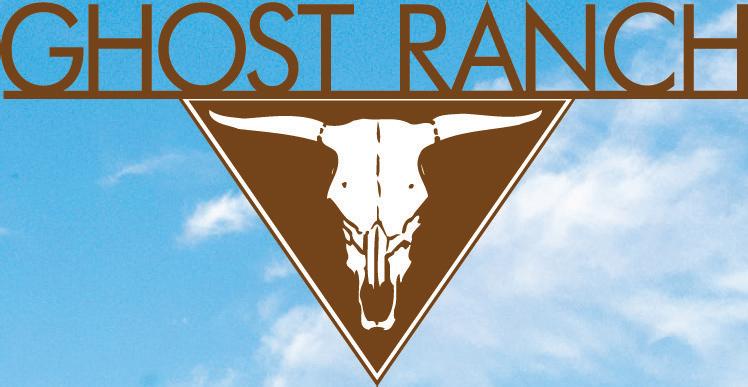
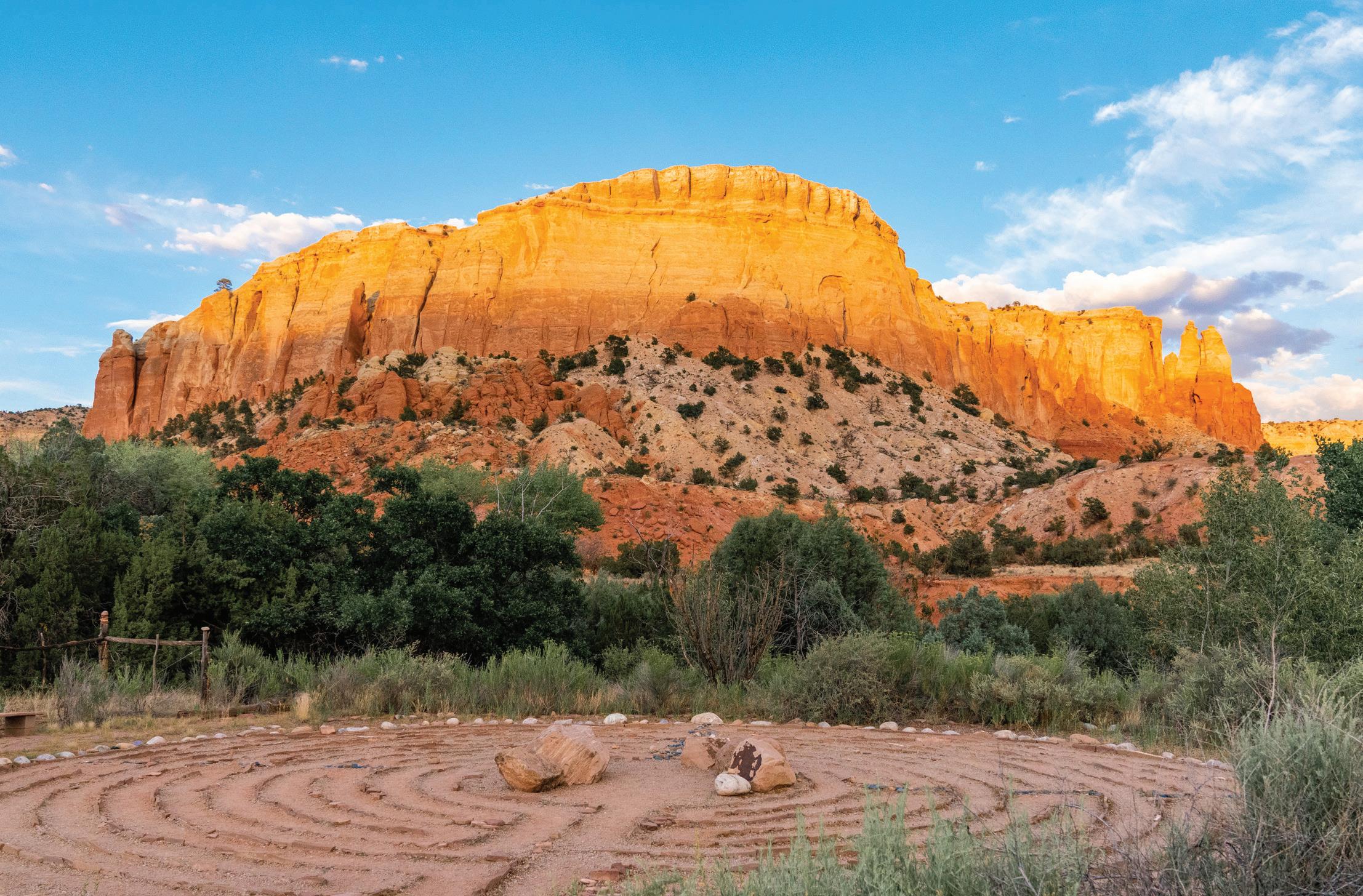





Immersive and Transformative Experiences Discover a new you! ghostranch.org | 877.804.4678 Abiquiu, New Mexico

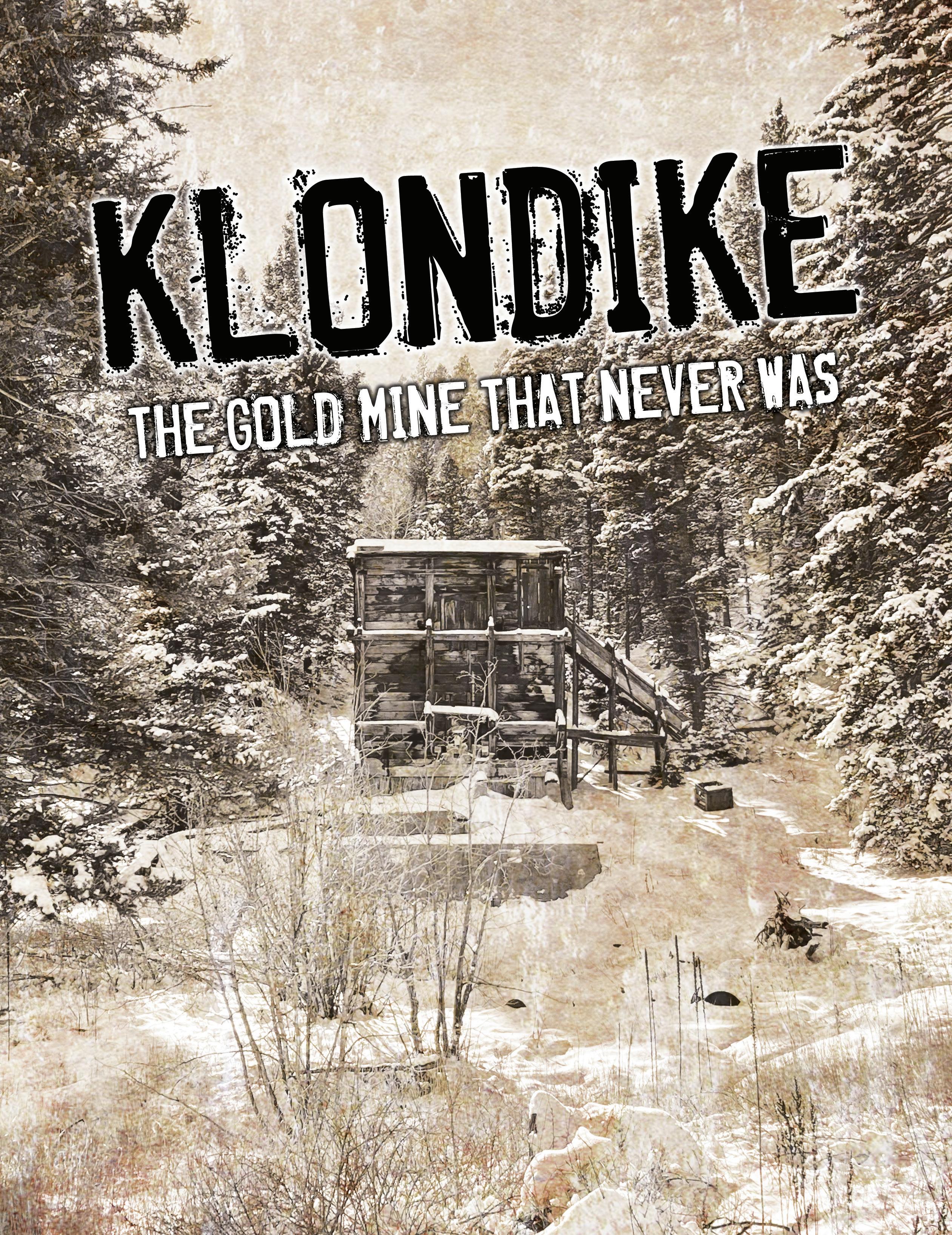 BY HEATHER LEUTHOLD
BY HEATHER LEUTHOLD
Bright and yellow, hard and cold
Molten, graven, hammered and rolled, Heavy to get and light to hold, Hoarded, bartered, bought and sold, Stolen, borrowed, squandered, doled, Spurned by young, but hung by old
To the verge of a church yard mold;
Price of many a crime untold.
Gold! Gold! Gold! Gold!
Good or bad a thousand fold!
How widely its agencies vary,
To save–to ruin–to curse–to bless–
As even its minted coins express: Now stamped with the image of Queen Bess, And now of a bloody Mary.
Gold
Thomas Hood (1799-1843)

Left: The main shaft of the Klondike Mine sits against a backdrop of pine in a back valley of the Idlewild Community near Eagle Nest, New Mexico.
As children, we’re often influenced via entertaining stories or elder memories that hold little fragments of history and culture; thoughts of the good old days. Though their impact on our lives remains, all too often, these memories fade away into the pages of a forgotten journal.
Why is it that society today has such an inclination toward dismissing the old?
This is not the case for me. Like so many, I believe that “remembering” is often not enough—we should be embracing. Old relics, weathered buildings, and even tattered landscapes still have stories to share. And this is one such tale.
Resting at the end of a dead-end road in a remote mountain village stands a once prominent structure. At just over nine thousand feet in elevation, it’s visibly nestled in the thick pines at the base of a mountain slope. At first glance, one may only see hardship in the building’s exterior, withered away with years of neglect. But look closely, and you’ll see fragments of its once-flourishing past.
This is the story of a place where one brave soul boldly took a chance on a dream. This is a tale of the long-forgotten—yet still proudly standing—historic Klondike mine.
Over one hundred years ago, mountains of gold were a promising future for many. After the gold rush faded in the early 1900s, some still believed in the promise of treasure to be found. One of these dreamers was an entrepreneur named Fred Montague, who along with other investors, purchased land in the Moreno Valley of Northern New Mexico—and started digging. Around 1920
three tunnels were dug, and one of those tunnels would later become known as the Klondike Mine.
In the early days, reports from the mine revealed large amounts of gold, silver, and copper, posing a promising start to their venture. Though the men were eager to move forward with the construction of a mill, they first built several buildings to accommodate miners, including a general store, mining office, and several cabins. The mill came next.
In 1926, not long after the mill was completed, the partners experienced a setback that would eventually halt the endeavor: the grade of ore extracted needed to be smelted. With the closest facility over 180 miles north in Pueblo, Colorado, the cost was too expensive to transport the ore. This was the beginning of the mine’s demise. Though the mine was never very productive, they continued to make efforts and hold board meetings until the mid-1940s. But over the years, they failed to find enough working capital to continue, and the business venture was eventually abandoned.
In the 1930s, the small mountain village of Idlewild developed adjacent to the Klondike Mine. The village eventually grew into the valley where the mine stands. Today, many of the buildings have been torn down, but that statue of history—the mine shaft—still stands as a monument to a man’s dream of striking gold and what could have been.
If one day you find yourself exploring the mountains of northern New Mexico, maybe you’ll end up meandering the dirt roads of Idlewild. It’s here you’ll discover a village where time seems to stand still, and where the history of one man’s story is never forgotten. t
Gold! Gold! Gold!
Gold!

New Mexico’s Grape Growing Heritage
A Vinicultural Journey for the Ages
New Mexico’s rich history is not only marked by its vibrant cultures and picturesque landscapes, but also by its significant, albeit lesser-known, contributions to the world of viticulture. The history of grape growing in the state dates back centuries, awarding it the status as one of North America’s oldest wine-producing regions.
Long before European settlers arrived here, American Indian communities
were already cultivating a variety of crops, including grapes. These Indigenous peoples fostered an early connection between the fertile land of the Rio Grande and the cultivation of wine grapes.
Sometime around the early 1600s, Spanish missionaries introduced European grape varieties to New Mexico. On their journey overseas, they brought with them a variety of grape cuttings commonly used for sacramental wine. Taking foot in the region, missionar-
ies planted these grapes around their missions, laying the foundation for a budding vinicultural tradition.
The early 17th century saw the establishment of vineyards in the fertile valleys of New Mexico, notably under the leadership of Don Juan de Oñate. As the Spanish colonial governor, Oñate encouraged settlers to cultivate grapes and produce wine for both religious and secular purposes. The tradition flourished, and the state became a hub for winemaking in the Southwest.
82 ENCHANTED OUTPOST | SUMMER/FALL 2024
Over the centuries, New Mexico’s wine industry faced numerous setbacks, including economic fluctuations, changes in political leadership, and Prohibition in the early 20th century. But some growers continued to maintain their vineyards effectively, preserving the art of winemaking through generations.
Interest in New Mexico’s wine industry saw a resurgence in the latter half of the 20th century. Entrepreneurial winemakers began experimenting with different grape varieties and winemaking techniques. The state’s unique topography—characterized by arid climates, varying elevations, and diverse soils—proved ideal for grape cultivation. These attributes contribute to the distinctive and flavorful wines of the region.
Even today, it’s largely unknown that New Mexico boasts a thriving wine industry with numerous vineyards and wineries scattered throughout the state. Regions such as the Mesilla Valley and the Middle Rio Grande Valley have gained recognition for producing high-quality wines. There are many notable wineries, including Gruet Winery, known for its sparkling wines, that have garnered national acclaim. These accolades have contributed to New Mexico’s growing reputation as a respected wine-producing region. New Mexico’s grape-growing history is a tapestry woven with threads of Indigenous cultivation, Spanish missionary influence, and the resilience of generations of winemakers. The state’s modern wine industry, with its innovative spirit and commitment to quality, pays homage to this rich heritage, all while shaping the future of New Mexico’s place in the world of viticulture. And as visitors explore the vineyards and savor the wines, they become part of a tradition that has endured and evolved over centuries. t
Rio Grande Valley Wineries
Sipping Spots
Black Mesa Winery & Cidery
Velarde, NM (505) 852-2820
Casa Abril Vineyards
Algodones, NM (505) 771-0208
Casa Rondena Winery
Albuquerque, NM (505) 344-5911
Corrales Winery
Corrales, NM (505) 898-5165
El Alamo Winery
Alcalde, NM (505) 920-9516
Embudo Valley Vineyards
Rinconada, NM (505) 395-2636
New Mexico Wine Regions
Know before you go.
Vineyard hours may vary. Check Google listings for hours of operation. Be sure to call the vineyards, wineries, and tasting rooms before embarking on your wine-tasting tour to ensure they are open and available for visitation. Some locations also offer other opportunities for tasting, including ciders and distilled spirits, making a visit fun for everyone.
Some wineries and vinyards may not be shown Maps not to scale.
Gruet Winery
Albuquerque, NM
Santa Fe, NM (505) 821-0055
La Chiripada Winery
Dixon, NM (505) 579-4437
Milagro Vineyards
Corrales, NM (505) 898-3998
Noisy Water Winery
Albuquerque, NM
Red River, NM (575) 754-9957
Ponderosa Valley Vineyards
Ponderosa, NM (575) 834-7487
Pasando Tiempo Winery
Albuquerque, NM (505) 228-0154
Sheehan Winery
Albuquerque, NM
Red River, NM (505) 508-1221
Vara Winery & Distillery
Albuquerque, NM (505) 898-6280
Vivác Winery
Dixon, NM (505) 579-4441
83 ENCHANTED OUTPOST SUMMER/FALL 2024 | State of New Mexico Albuquerque Santa Fe Taos Black Mesa Vivác La Chiripada Embudo Valley Casa Abril Ponderosa Valley Corrales Milagro Gruet Vara Casa Rondena Sheehan Questa Noisy Water Sheehan El Alamo Red River Las Vegas Española
© OUTPOST ALLIANCE
TOUR MAP
A B C REGIONS A: Rio Grande Valley B: Mimbres Valley C: Mesilla Valley Gruet Sheehan Pasando Tiempo
V W V W V W V W V W V W V W V W V W V W V W V W V W V W T T T T T T T T T T T T T T T T T T
Vineyard Winery Tasting Room

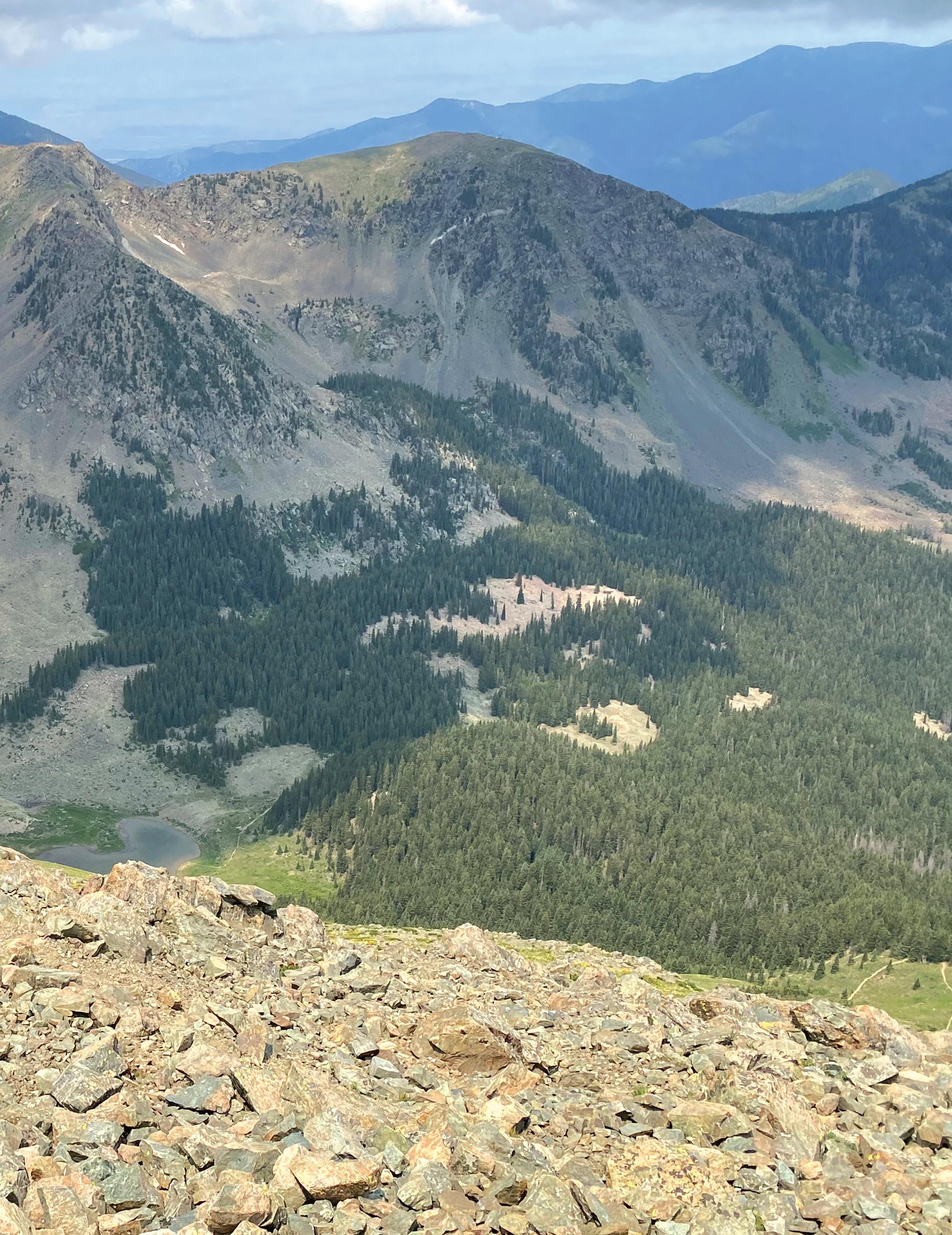
The strenuous hike to the top of Wheeler Peak—New Mexico’s highest point—is a popular summertime adventure among local hikers. The views from the top are nothing short of stunning. The trailhead is accessed from the upper lodge at Taos Ski Valley and the trail passes by Williams Lake.
LA JUNTA: WHERE THE RED RIVER MEETS THE RIO GRANDE | 86 HIGH ELEVATION HIKE TO MIDDLE FORK LAKE | 90 AUTO TOUR THROUGH VALLE VIDAL | 100
Photo: Heather Leuthold
ADVENTURE
La Junta
Where the Red River Meets the Mighty Rio Grande
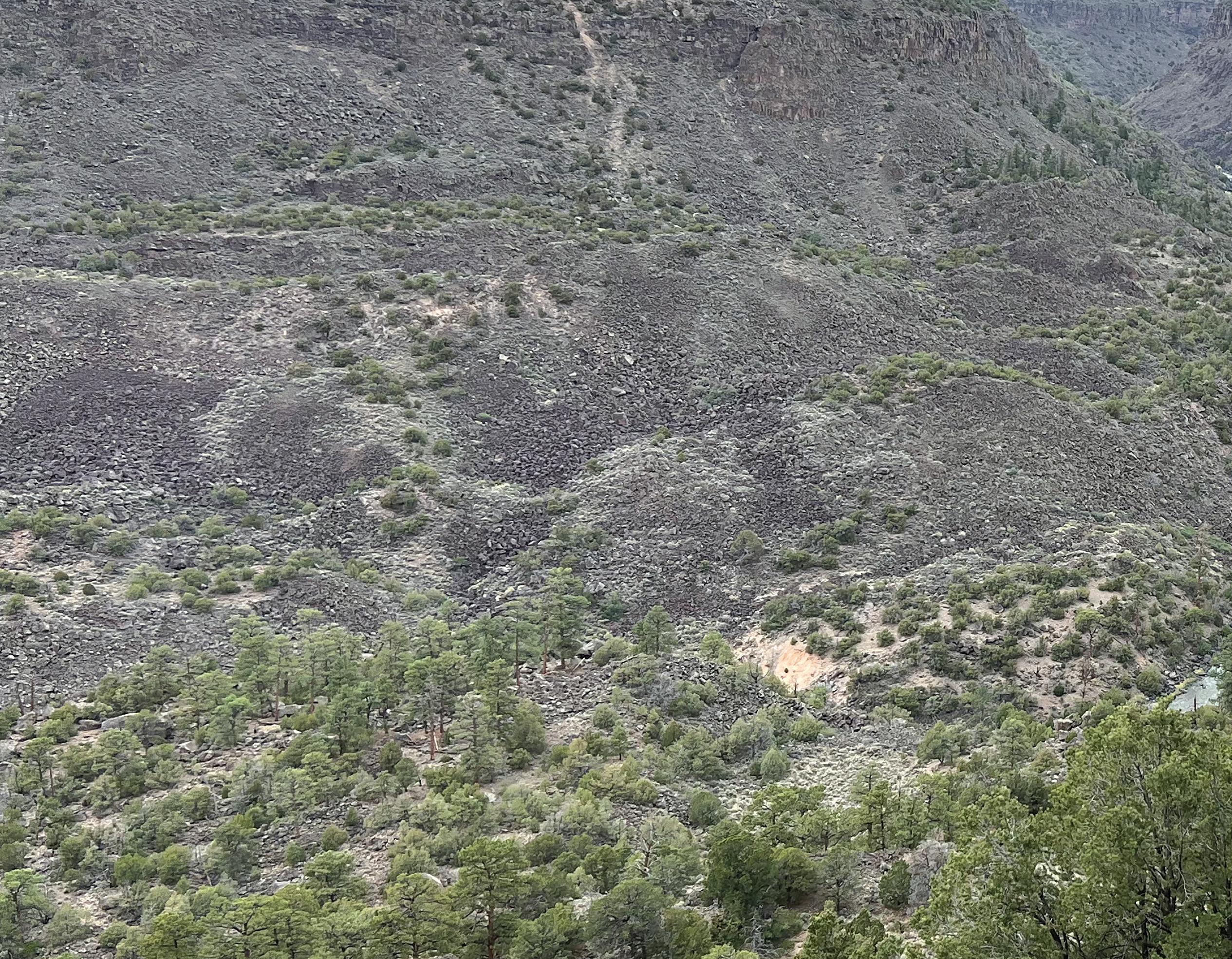
Just west of the town of Questa, New Mexico, is a mesmerizing natural spectacle: the confluence of the Red River and the Rio Grande, better known as Rio Grande del Norte National Monument. As these two rivers converge, they create a breathtaking fusion that reflects the diverse landscapes surrounding them. The Red River, a tributary born in the rugged Sangre de Cristo Mountains, dances with an untamed spirit, while the Rio Grande, a life-giving force, cuts deep into the high desert plateau as she makes her way south to the Gulf of Mexico. At their meeting point, the rivers merge in a kaleidoscope of currents. This confluence is more than a geographical juncture; it symbolizes the interconnectedness of ecosystems and the pulse of life coursing through the veins of New Mexico’s wilderness.
Encompassing over 240,000 acres of high desert terrain, Rio Grande del Norte National Monument, which is managed by the Bureau of Land Man-
agement, is a landscape of extremes. Towering basalt cliffs, rugged canyons, and expansive plateaus contribute to the dramatic and varied topography of this protected area.
The convergence of these two rivers marks the focal point of the Wild Rivers Recreation Area within Rio Grande del Norte. The confluence area is an inviting space for recreational activities such as hiking, birdwatching, and photography. Trails meander along the rivers, providing opportunities to witness the unique flora and fauna that thrive in this dynamic riparian environment.
Visiting this area is generally accessed via the La Junta Trail, although in recent years, the trail has been closed due to extensive erosion. La Junta means “the junction” in English, a fitting name
for a trailhead leading from the high plateau to the river’s edge.
The confluence is still accessible even though La Junta Trail may be closed. Hikers can reach the confluence via the Little Arsenic Trail—however, this trail route is a further out-and-back down a steep slope to the bottom of the canyon. At the junction, follow the River Trail south along the Rio Grande to the footbridge that crosses the Red River. Here the trail stays along the water’s edge to the confluence with the mighty Rio Grande. t
86 ENCHANTED OUTPOST | SUMMER/FALL 2024



Reaching the confluence of the Red River and Rio Grande is a worthy destination for hikers. Access is currently via Little Arsenic or Big Arsenic trails, leading to a footbridge that spans the Red River. On the south side of the river, explorers can maneuver to the confluence.
87 ENCHANTED OUTPOST SUMMER/FALL 2024 |



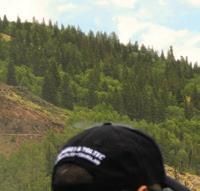









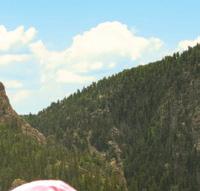
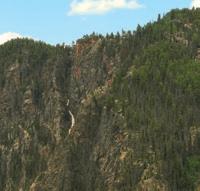













The Ride Of Your Life.
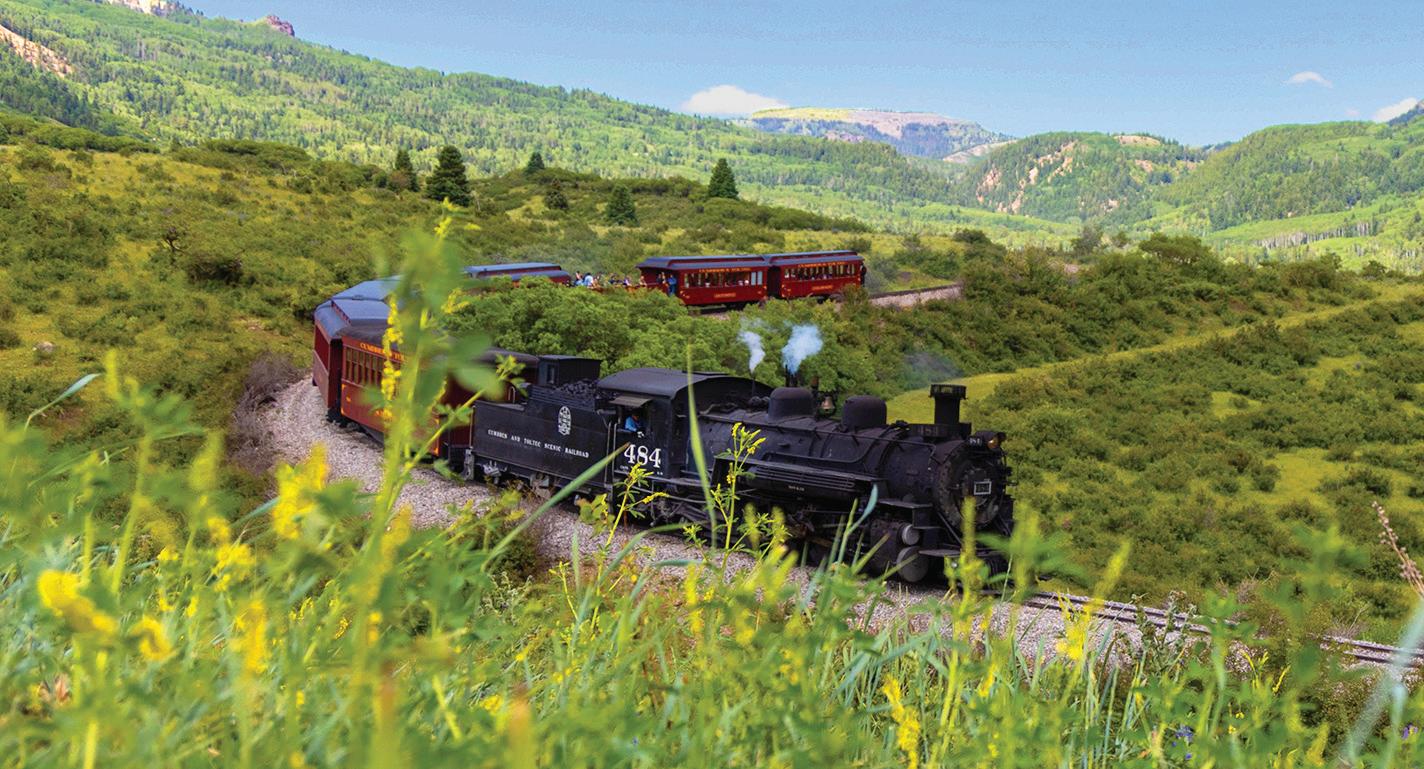
Steal away a day on the award-winning, historic Cumbres & Toltec Scenic Railroad. Climb aboard and leave your worries behind. From the open air gondola to the breathtaking views from your private window, this is a scenic train ride unlike any other. Join us for a day trip through the unspoiled Rocky Mountain West. Vibrant and beautiful as always. Depart from Antonito, Colorado or Chama, New Mexico. The modern world can wait while you take the ride of a lifetime.

book now at cumbrestoltec.com 1-888-286-2737

America’s most historic scenic railroad

1
EnchantedOUTPOST_FamilyRIDE_7.375x4.85.indd
3/20/24 9:47 AM
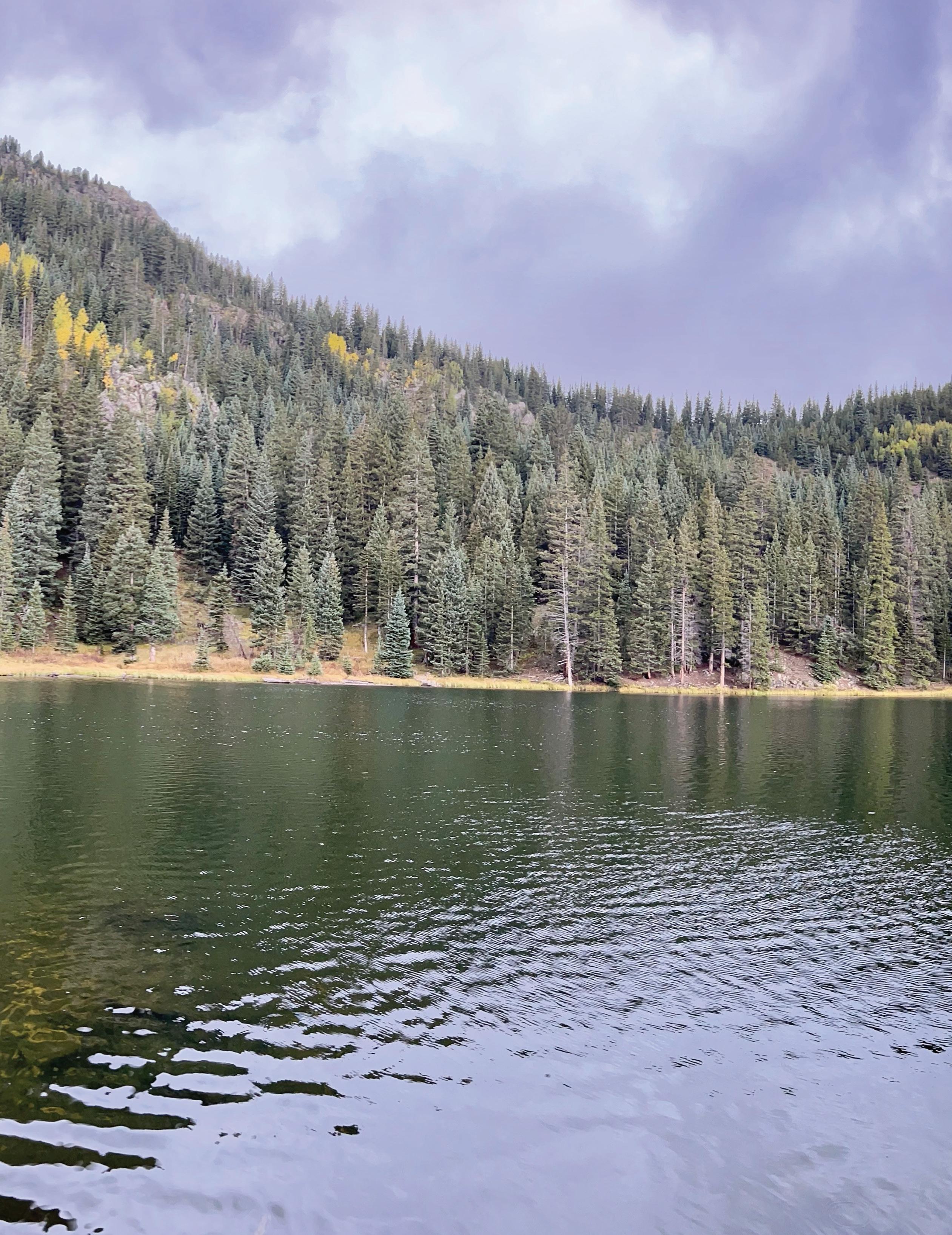
HIGH ELEVATION HIKE TO
MIDDLE FORK LAKE
Words and Photos by Scott and Heather Leuthold
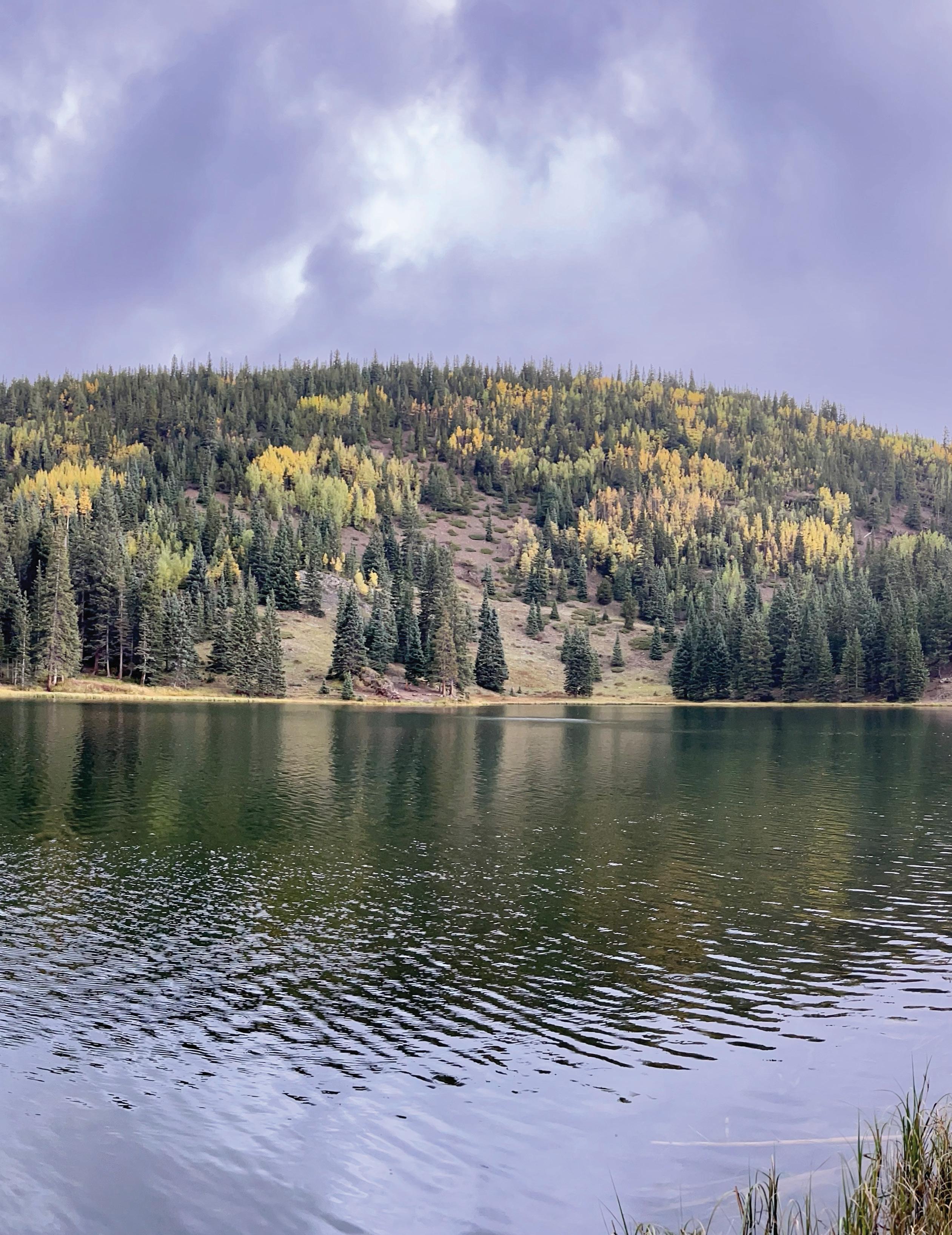 Early fall brings a change of colors on the high alpine aspen leaves surrounding Middle Fork Lake.
Photo: Scott Leuthold
Early fall brings a change of colors on the high alpine aspen leaves surrounding Middle Fork Lake.
Photo: Scott Leuthold

ADVENTURE

Hidden away near the end of a winding country highway is the Middle Fork Trail to Middle Fork Lake. The charming town of Red River (slightly north) serves as the gateway to this enchanting high-elevation trail, promising adventure and breathtaking scenery. The trail invites both seasoned hikers and nature enthusiasts to discover all that nature in this region affords.
The early segment of the trail passes through a significant swath of downed pine and aspen. The forest devastation was the result of a December 2021 storm that saw sustained winds estimated at over one hundred miles per hour. The event caused significant damage to several square miles of the area, including the downed trees, power lines, and residential destruction.
As hikers gradually ascend the path, dense pine forests return and the trail’s elevation provides panoramic views of the surrounding mountains. The well-marked path ensures a relatively straightforward route, allowing both novices and experienced hikers to enjoy the journey.
Within a mile or so, the trail crosses a beautiful babbling brook typically dotted with wildflowers in the midsummer months. After carefully hopping across the river rocks, the trail continues up switchbacks with the brook not far down slope. The sound of flowing water
adds a soothing element to an otherwise challenging hike.
Farther up, hikers will encounter aspen groves and expansive alpine meadows. The changing landscapes provide a dynamic backdrop, offering opportunities for photography and moments of quiet contemplation amid the natural splendor.
Hikers who reach the top of the trail are rewarded with the pristine beauty of Middle Fork Lake. Nestled in a high alpine basin, the lake reflects the surrounding peaks, creating a serene and mesmerizing vista. The crystal-clear waters invite visitors to rest, enjoy a picnic, and savor the tranquility of the area.
Middle Fork Lake is not only a scenic view to behold—it’s also a haven for anglers to fish from the banks nestled below the towering peaks of the Sangre de Cristo Mountains. Lucky visitors may even spot wildlife including marmots, birds of prey, black bear, and more.
There are pit toilets at the lake, however, as of this writing they were unmaintained and dilapidated. Bring the necessary supplies with you, and as always leave no trace. Visitors should always pack out what is packed in.
A single-track trail circumnavigates the lake, offering a wonderful stroll along the shore through pine thickets and tall grass marshes. The summer and fall often bring high elevation wildflowers under stunning blue skies.
The Middle Fork Trailhead is accessed just a short distance from the heart of Red River. From the intersection of State Road 38 and Main Street—
also marked on maps as State Road 578—follow the highway into Upper Red River Valley to the end. Here you will find U.S. Forest Service Road 58. Follow the forest road along the Middle Fork Red River on your left side to the trailhead. Be aware that there are private properties along the river, so stay on course to the trailhead. The parking area is situated near the confluence of the Middle Fork and West Fork of Red River, and the trailhead offers clean public bathrooms and ample parking for visitors. From there, follow signs farther up the gated two-track road open only to hikers, bikers, and those on horseback. Within less than a mile, explorers are directed across a foot bridge to the left which spans over the Middle Fork River. Here the trail begins the moderately challenging ascent from the river’s edge to Middle Fork Lake.
The 4.7 mile out-and-back trail from the trailhead offers a much less strenuous return to the parking lot, as it is almost entirely downhill. But always keep in mind that the top is only halfway to the finish. t
Author’s Note:
Enjoy the photo gallery of our hike to Middle Fork Lake. Then be sure to take a look at the hiking trail details at the end of this article to create your own epic hiking adventure.
92 ENCHANTED OUTPOST | SUMMER/FALL 2024
MIDDLE FORK LAKE
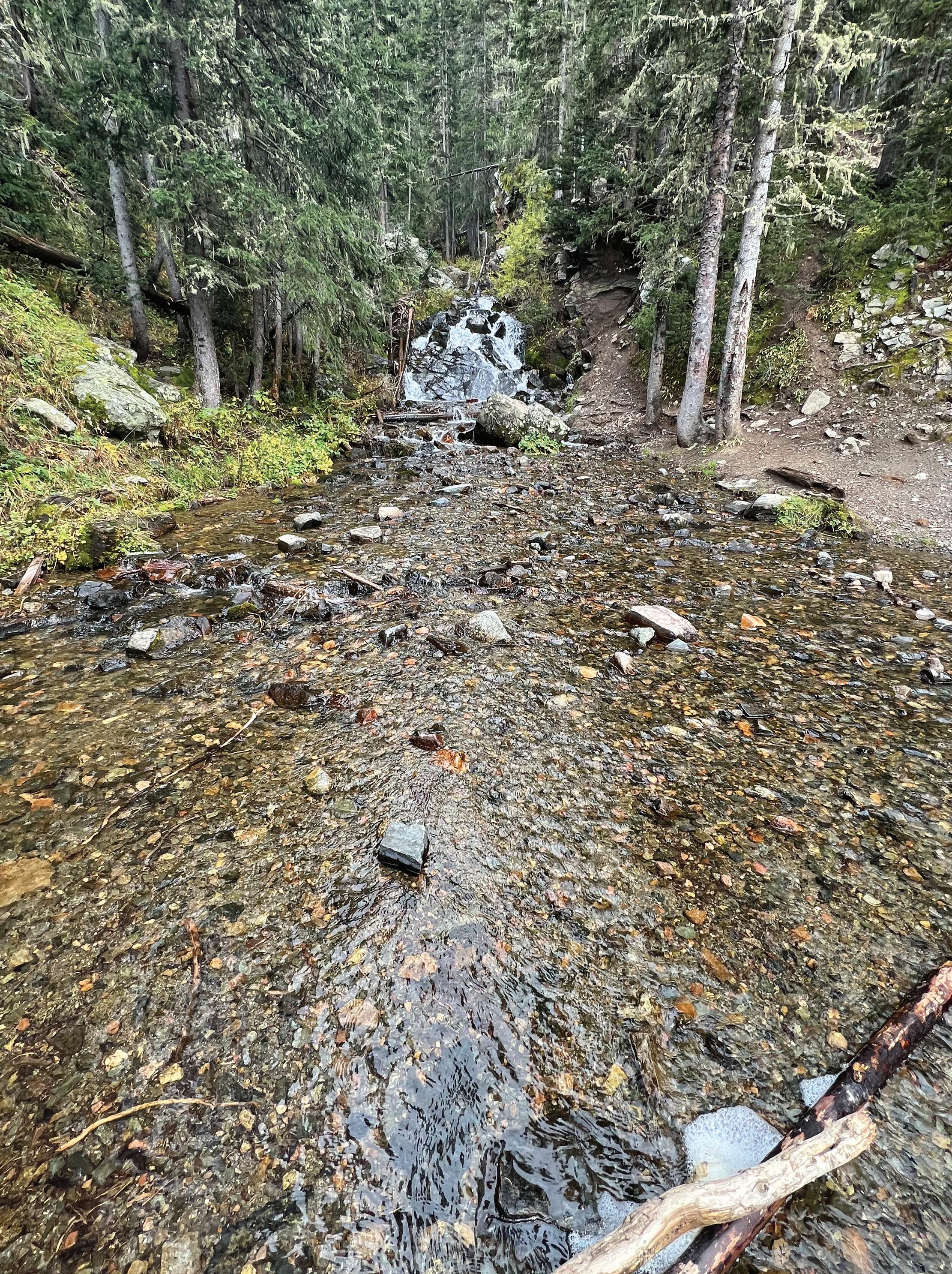
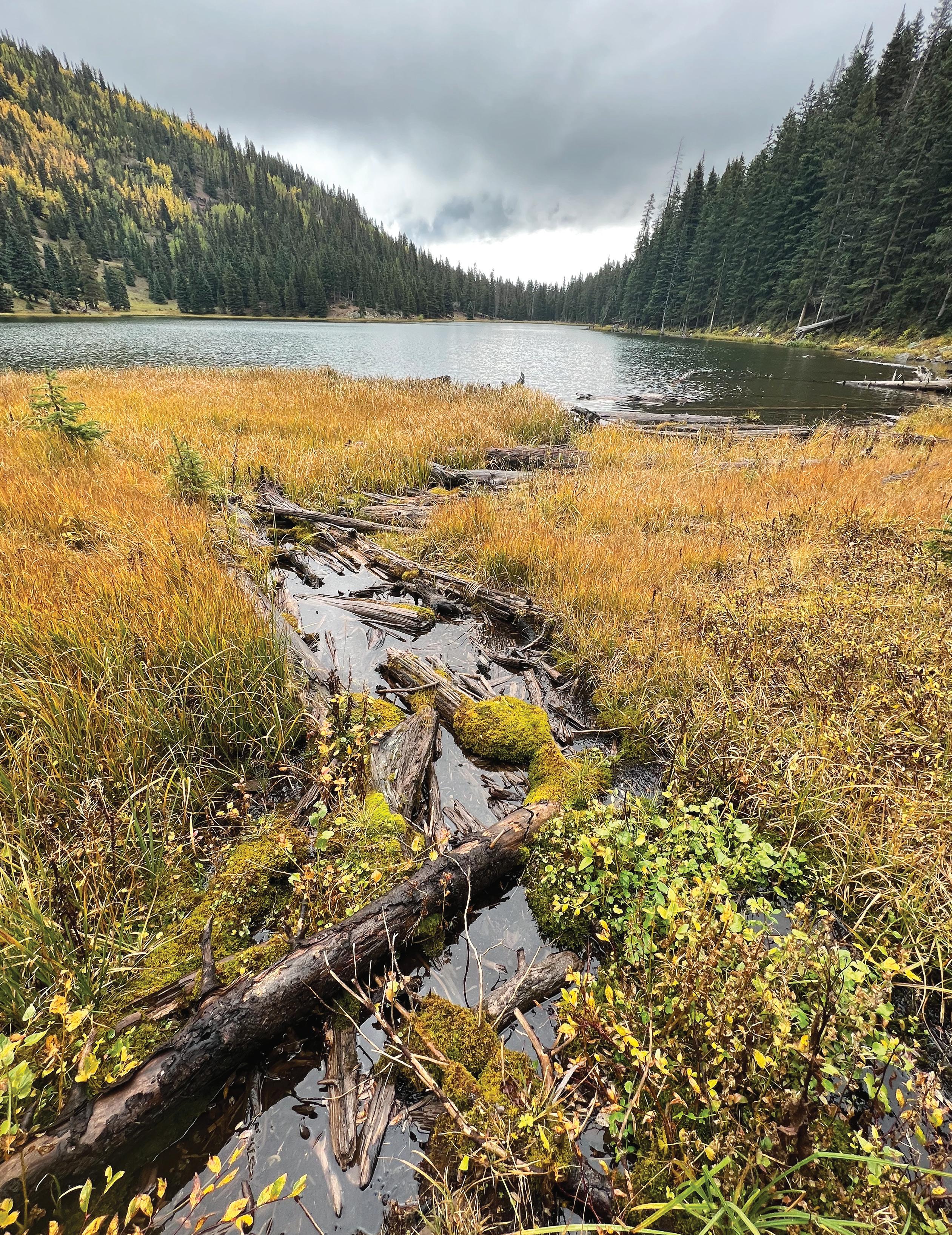

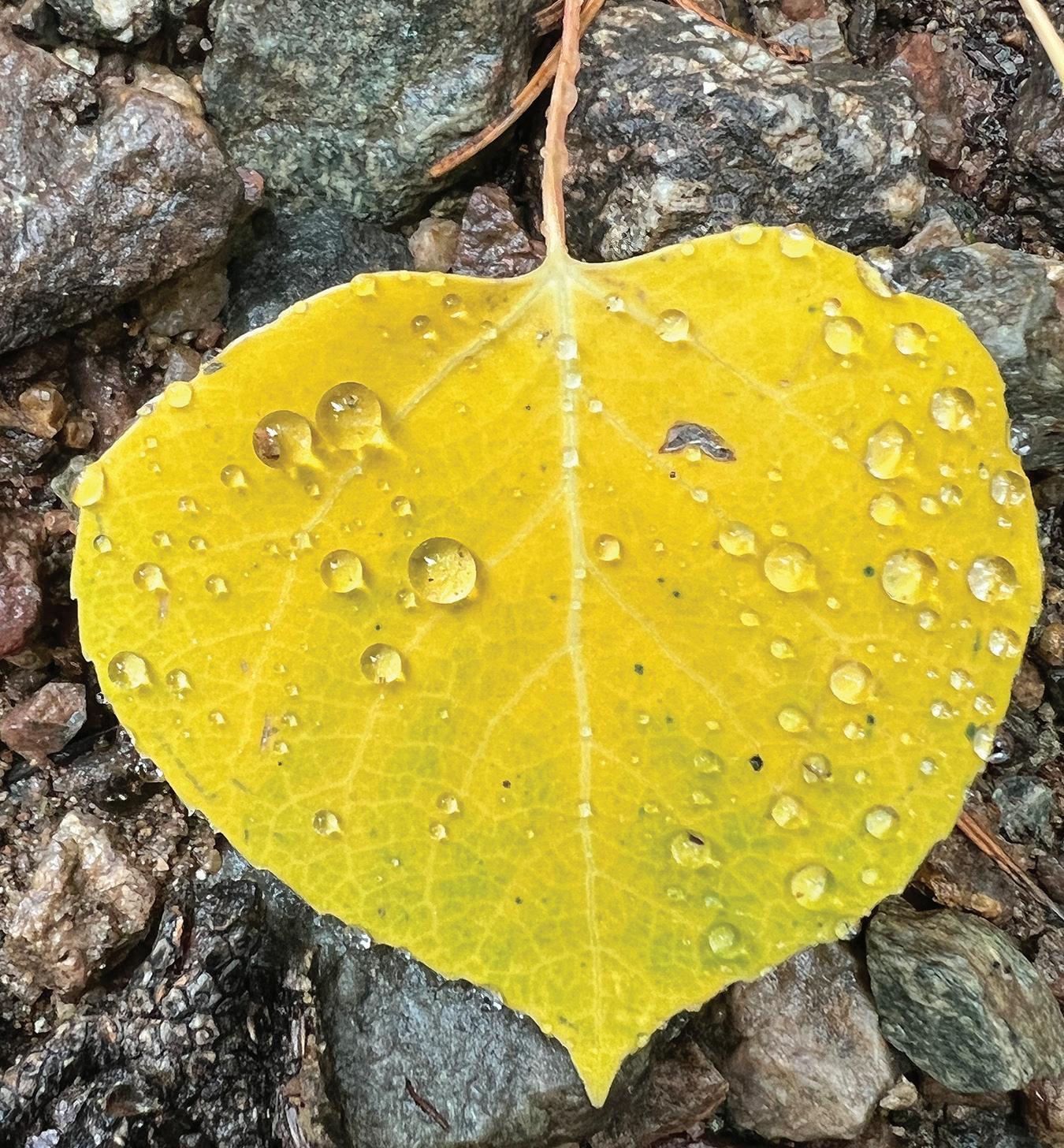
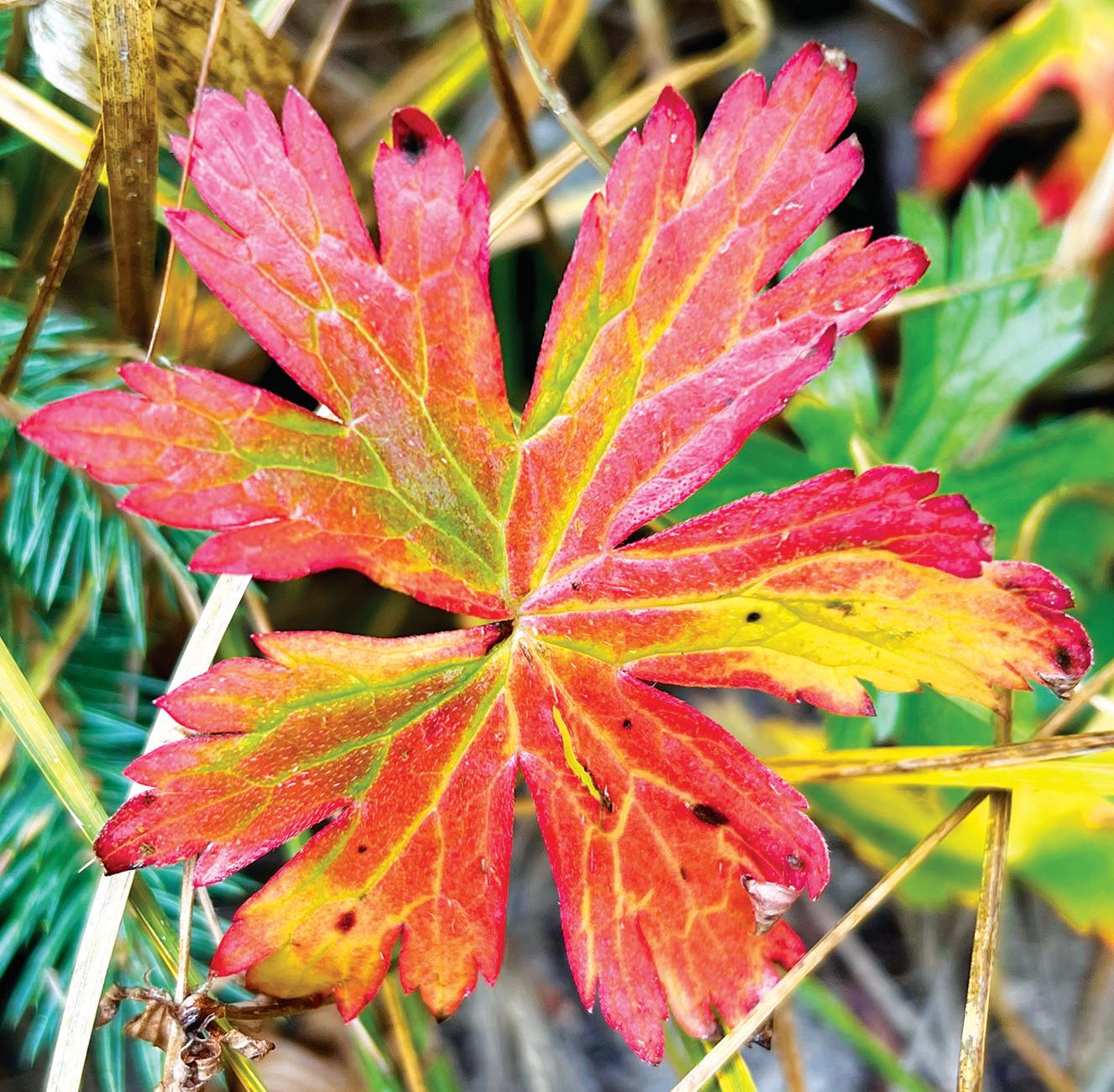

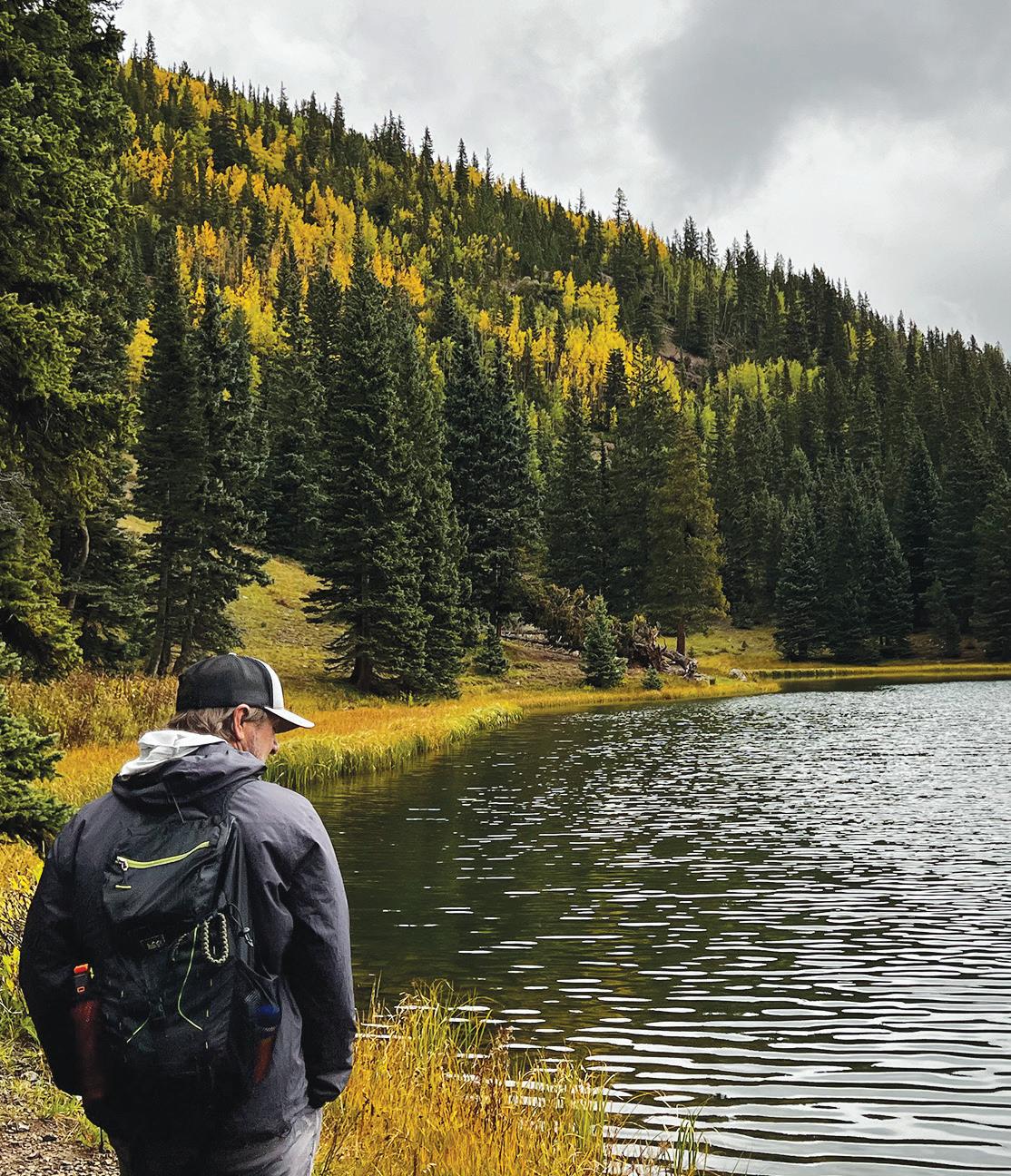
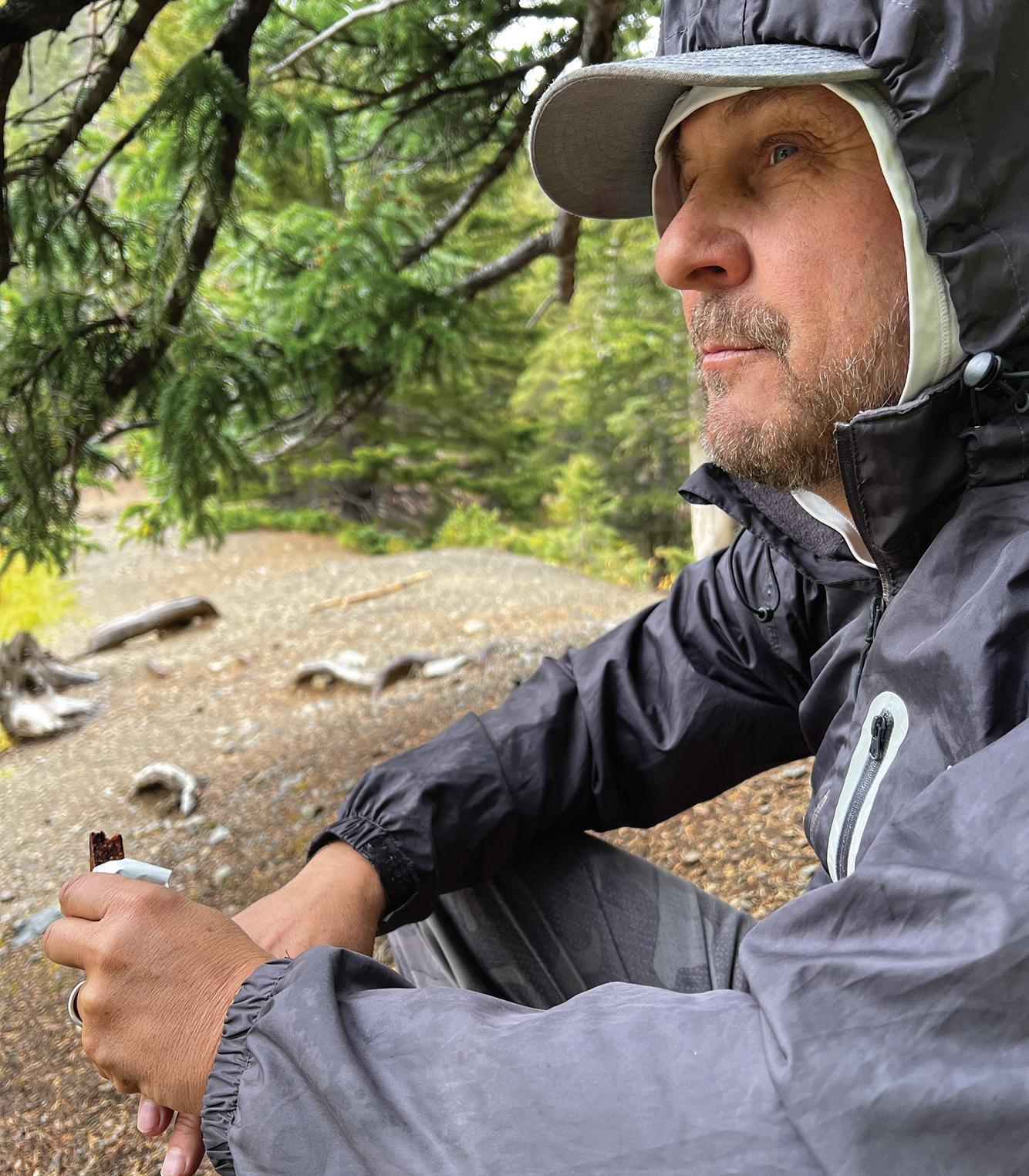
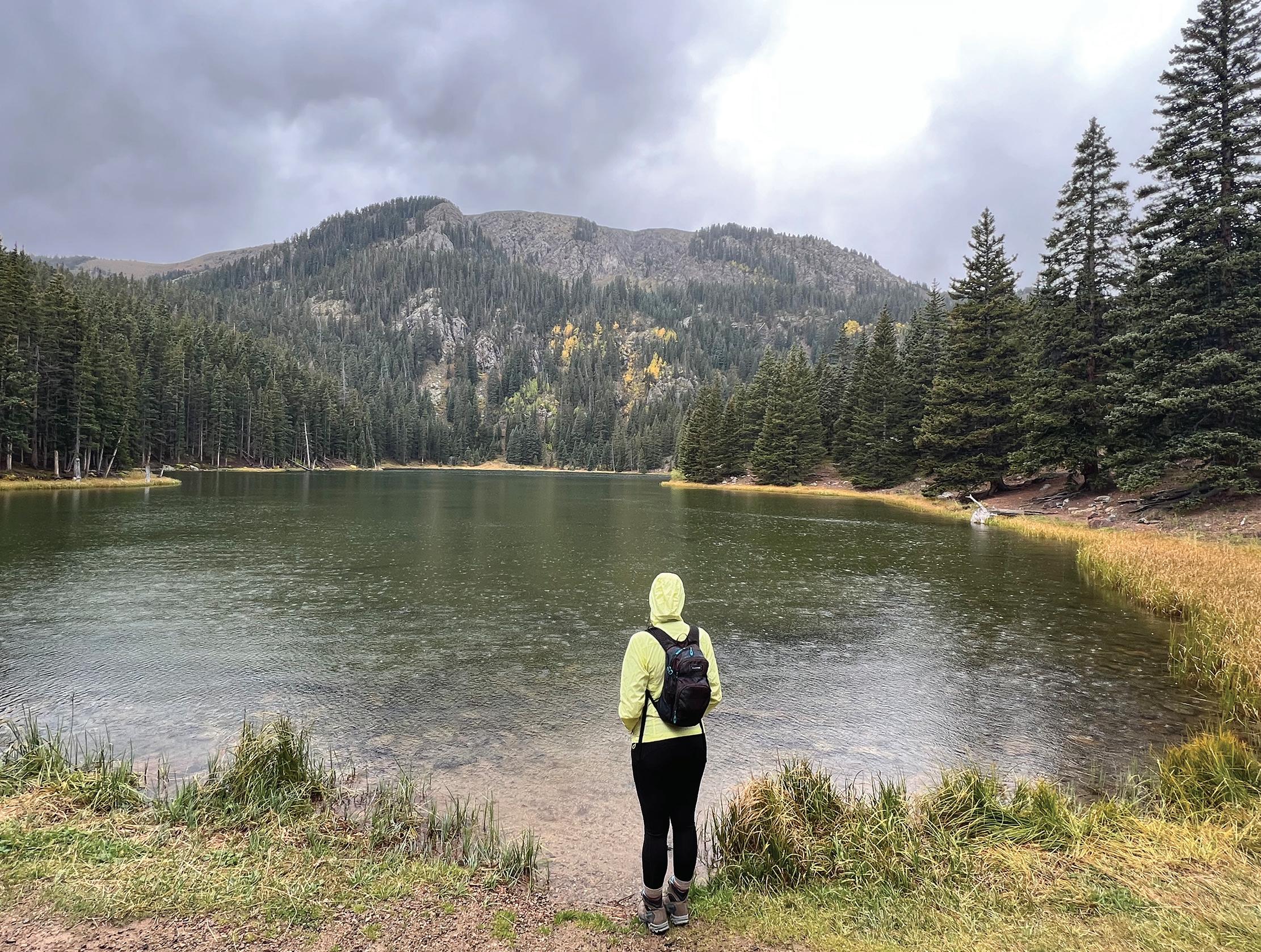
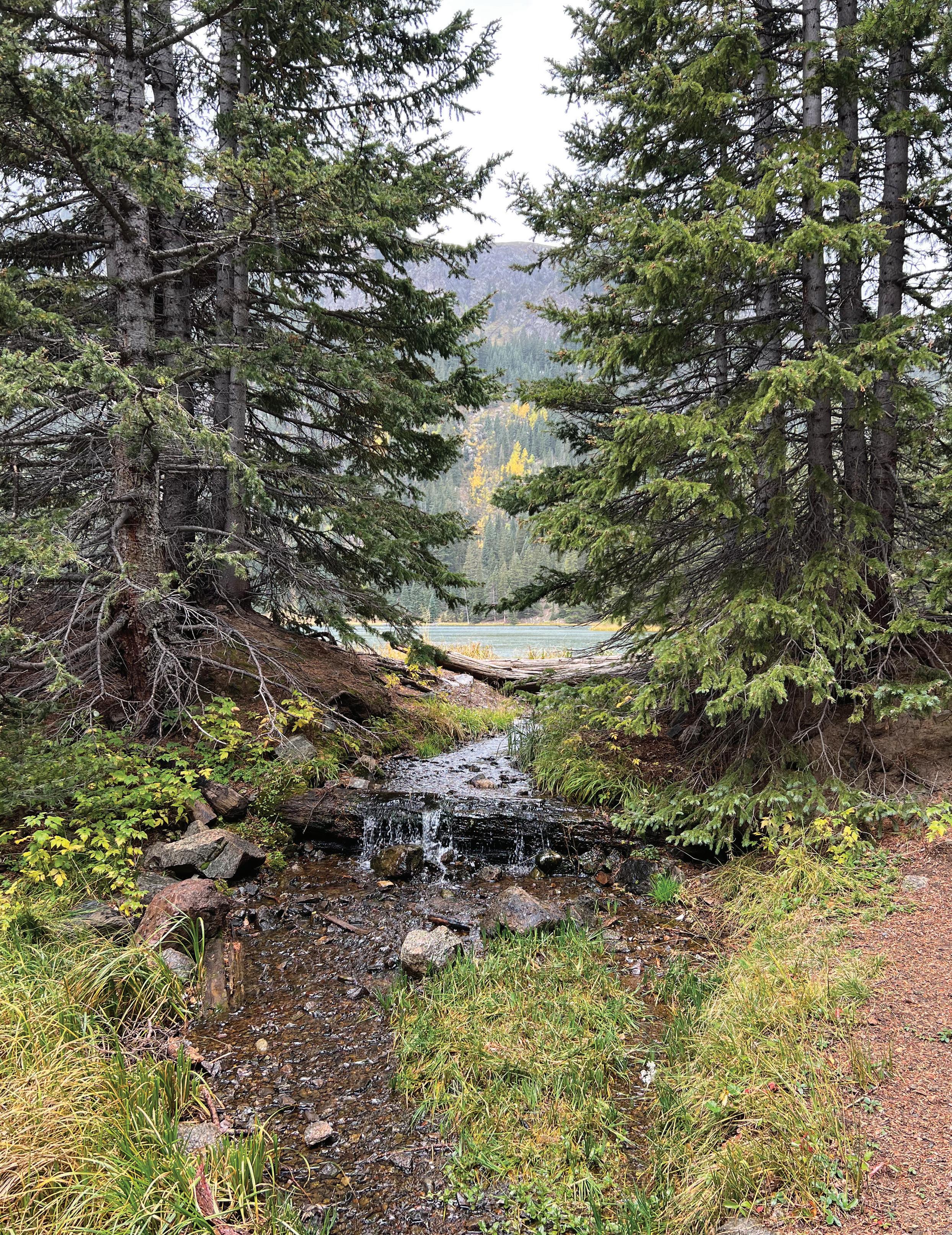
Satisfy Your Hanger in Red River
There’s nothing better after a long hike in the mountains than a stop over at a local grill for a juicy burger, giant burrito, or a hearty breakfast and coffee.
Red River offers a wide range of eateries to satisfy your hunger pangs. Here’s just a few to get you down Main Street.
Breakfast
Old Tymer’s Cafe
210 E Main Street
Yesterday’s Diner
612 W Main Street
Burgers
Red River Brewing Company & Distillery
217 W Main Street
Tacos & Burritos
Sundance Restaurant
401 E High Street
Pasta
Capo’s Red River
110 Pioneer Road
Steaks
Texas Reds
400 E Main Street
Sweet Treats
Dairy Bar
417 E Main Street
Li’l Willie’s Shenanigans
410 W Main Street
The Candy Crate
300 W Main Street
High Elevation Hike to Middle Fork Lake
PRACTICAL TIPS FOR ADVENTURERS
Trail Conditions
Before embarking on the Middle Fork Trail, it’s advisable to check trail conditions, especially if hiking early or late in the season. Weather and snowpack can impact accessibility, so being prepared is key to a safe and enjoyable hike. This is a remote hike into rugged wilderness. Be sure to plan accordingly.
Pack Essentials
Hikers should pack essentials such as water, snacks, sunscreen, and a map. Wearing sturdy hiking boots and dressing in layers is recommended, as weather conditions can change rapidly in mountainous terrain. Consider also bringing an emergency blanket, general first aid, and a change of socks in case your feet get wet crossing the stream.
Services
There are restroom facilities at the trailhead parking area. There are no services at the lake. The pit toilets are not maintained at the top. Be sure to practice a “pack-it-in, pack-itout” approach to trash and waste.
Trail Details
Trip Length: 4.7 mile out and back
Base Elevation: 9,600’
Peak Elevation: 10,845’
TRAIL MAP
Middle Fork Lake Trail
Map not to scale. For accurate trail maps use your GPS navigation tools or an official topo map for this region.
Middle Fork Lake Trailhead USFR58 578 To Red River
MiddleForkRedRiver
Middle Fork Lake
© OUTPOST ALLIANCE
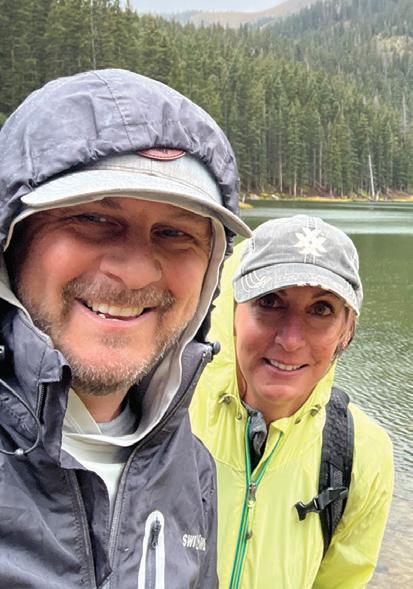
About the Authors:
Scott and Heather Leuthold are avid outdoor adventures with a popular outdoor channel on YouTube. The couple can often be found exploring the remote wilderness of New Mexico, Colorado, Utah, and Arizona, capturing their adventures and sharing stories through film, photography, and creative writing.
98 ENCHANTED OUTPOST | SUMMER/FALL 2024
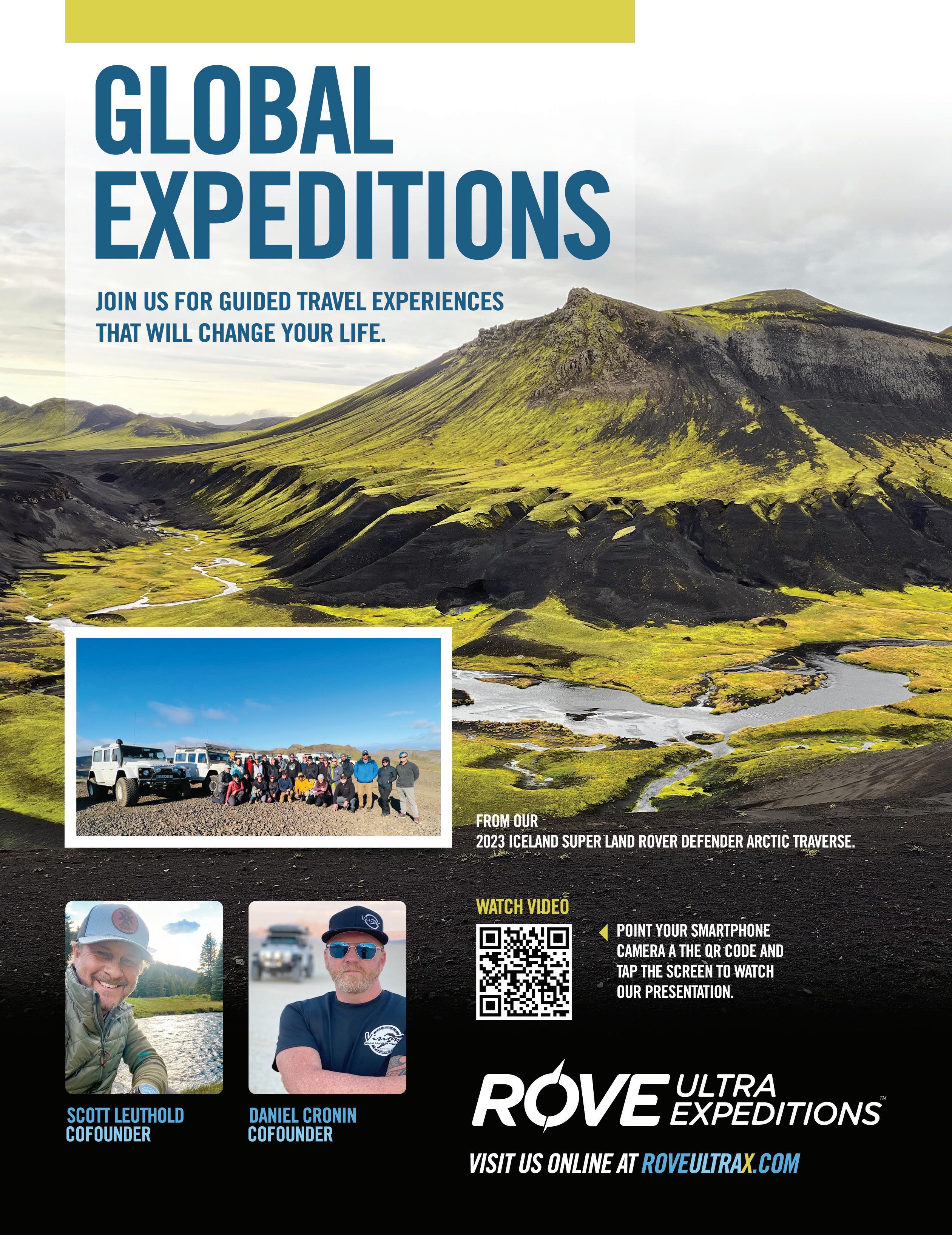
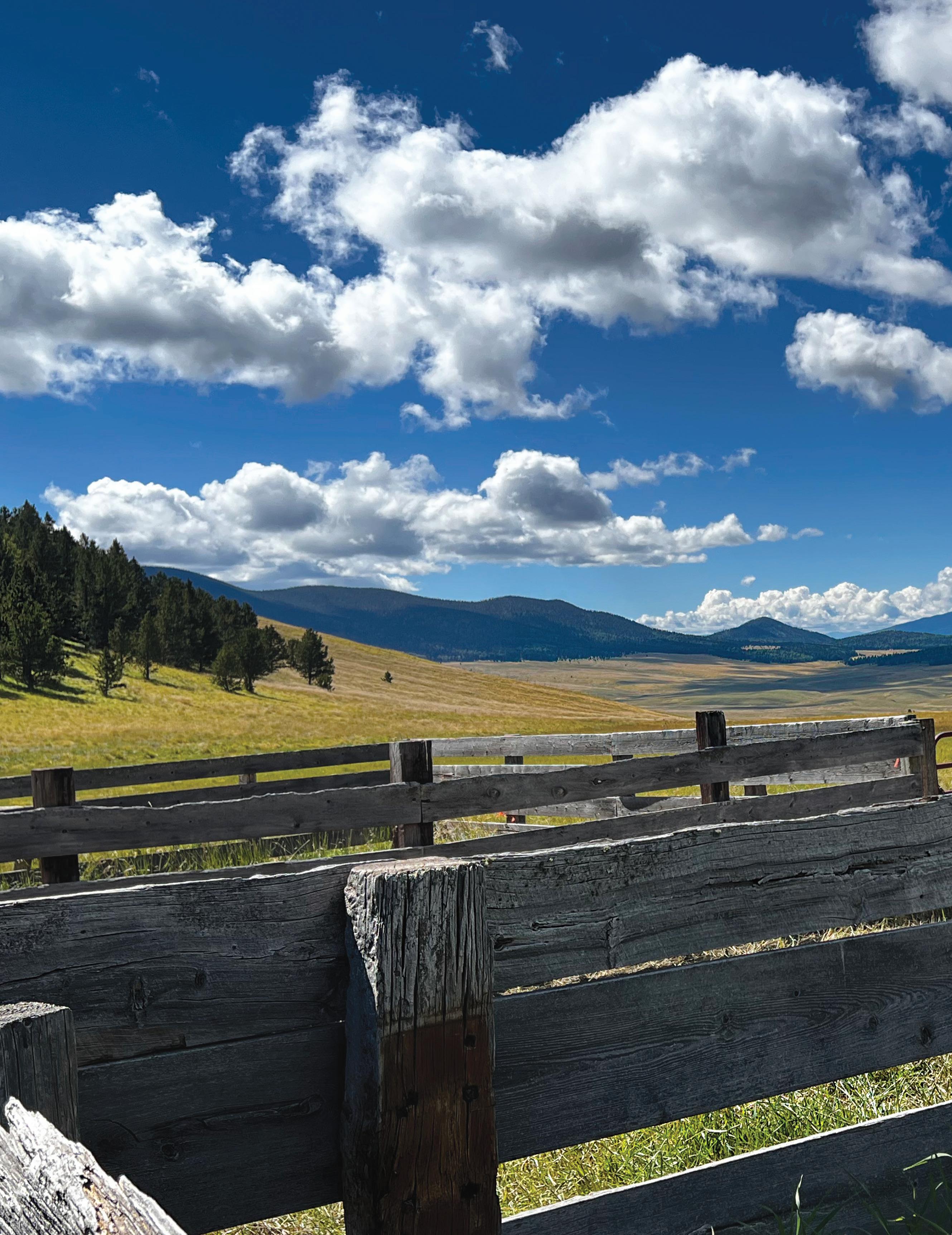 An old corral sits on a ridge overlooking the vast Valle Vidal Unit of the Carson National Forest.
An old corral sits on a ridge overlooking the vast Valle Vidal Unit of the Carson National Forest.

ValleVidal AUTO TOUR
By Scott and Heather Leuthold
With vast panoramic views, abundant wildlife, crystal-clear trout streams and alpine lakes, sprawling valleys, soaring peaks, and facinating historical points-of-interest, Valle Vidal is arguably one of the most picturesque and treasured wildlands in New Mexico—if not all of the American Southwest.
101 ENCHANTED OUTPOST SUMMER/FALL 2024 |
Northern New Mexico holds a wealth of natural treasures, and among them lies the enchanting Valle Vidal. This vast, high-elevation grassland, surrounded by towering mountains, offers a serene and breathtaking landscape that beckons explorers, nature enthusiasts, hunters, and anglers. Embarking on a scenic drive through the Valle Vidal by automobile provides a unique opportunity to witness the diverse beauty of the region. Together, let’s delve into the charm and wonder that awaits those who choose to traverse this hidden gem.
Valle Vidal, meaning “Valley of Life” in Spanish, is situated within the Sangre de Cristo Mountains of northern New Mexico. This high-elevation valley, adorned with lush meadows, winding streams, and dense forests, is surrounded by peaks that reach over 12,000 feet, creating a stunning backdrop for a scenic drive. The area is renowned for its biodiversity, providing habitat for a variety of wildlife. Elk, mule deer, black bear, and a multitude of bird species call this valley home.
From the Cimarron access point, travel northwest for five miles on Cerrososo Road, also known as FR 1950. The forest road offers public access through both Philmont Scout Ranch on the left of the road, and Ted Turner’s Vermejo Park Ranch on the right.
Travelers are required to stay on the forest road through these two private properties until reaching the Valle Vidal Unit of the Carson National Forest, approximately 21 miles up the road. Often travelers will discover herds of bison grazing within the border fences of Vermejo, offering a rare photography opportunity of these beasts against a stunning backdrop of high mountains, tall waving grass, and expansive sky.
Continuing through the private property, travelers will eventually reach the border of the Carson National Forest. From here on, visitors may utilize the land according to National Forest Service guidelines and restrictions—but camping is only allowed in designated campsites.
Because the region has been widely used by Philmont Scout Ranch to guide scouts over the years, visitors will discover several unmarked yet well traversed hiking trails intersecting with the forest road. Along the way, we stopped to explore one of these trails on an out-and-back hike, going about two miles in before the trail continued, eventually disappearing into the forest.
Taking a vehicle through this region offers a variety of other interesting features that will surely pique the interest of many who explore here, including windmills and water tanks, old corrals, historic homesteads, developed National Forest camps, fishing ponds, lakes, meandering trout streams, and truly remarkable vistas.
McCrystal Campground:
The 55-site campground is first come, first serve and offers campsites for tent camping and camping trailers. Each site includes a picnic table and access to pit toilet facilities. Some sites include horse corrals for pack horses.
Ring Place Ranch:
From McCrystal Campground, visitors can follow a self-guided trail to a Ring Place Ranch and a pioneer cabin listed on the National Registered Historic Places. Once owned by Timothy Ring in the late 1800s through the early 1900s, the ranch passed through various owners’ hands until it was eventually donated to the Forest Service by the Pennzoil Corporation. The original family cabin still stands today as a testa-
ment to those who planted roots here to build a life.
Shuree Ponds:
Thirty-eight miles into the journey, travelers will come upon the Shuree Ponds, a picturesque stop along the route. Surrounded by meadows and framed by mountain vistas, these ponds provide a serene setting for a picnic or a moment of quiet reflection. A parking lot with maintained pit toilet facilities mark the beginning of a loop trail around the ponds. As the trail descends downhill via a wooden walk bridge across a babbling brook, you’ll reach the furthest pond. Shuree Ponds is arguably considered one of the best fishing destinations in New Mexico, and even offers a designated pond for children eleven years and younger to fish. Adjacent to the pond sits a large lodge facility that used to serve as a retreat center for the oil company prior to the land being donated, but today, it sits empty.
Headwaters:
Valle Vidal provides the source headwaters for several streams and tributaries, eventually merging with both the Canadian River to the east and the Rio Grande River to the west. In fact, two of these waterways, McCrystal Creek and North Ponil Creek, are under consideration for Wild and Scenic Rivers designation. Comanche Creek winds its way through the Valle Vidal, creating idyllic spots for fishing and relaxation. Anglers can try their luck in the pristine waters, surrounded by the beauty of nature.
Rio Costilla Park:
The park is a privately owned camping, hunting, and fishing property that sits at the confluence of Latir Creek and Costilla Creek along State Road 196. Fishing for Rio Grande Cutthroat is a favorite among anglers on these
102 ENCHANTED OUTPOST | SUMMER/FALL 2024
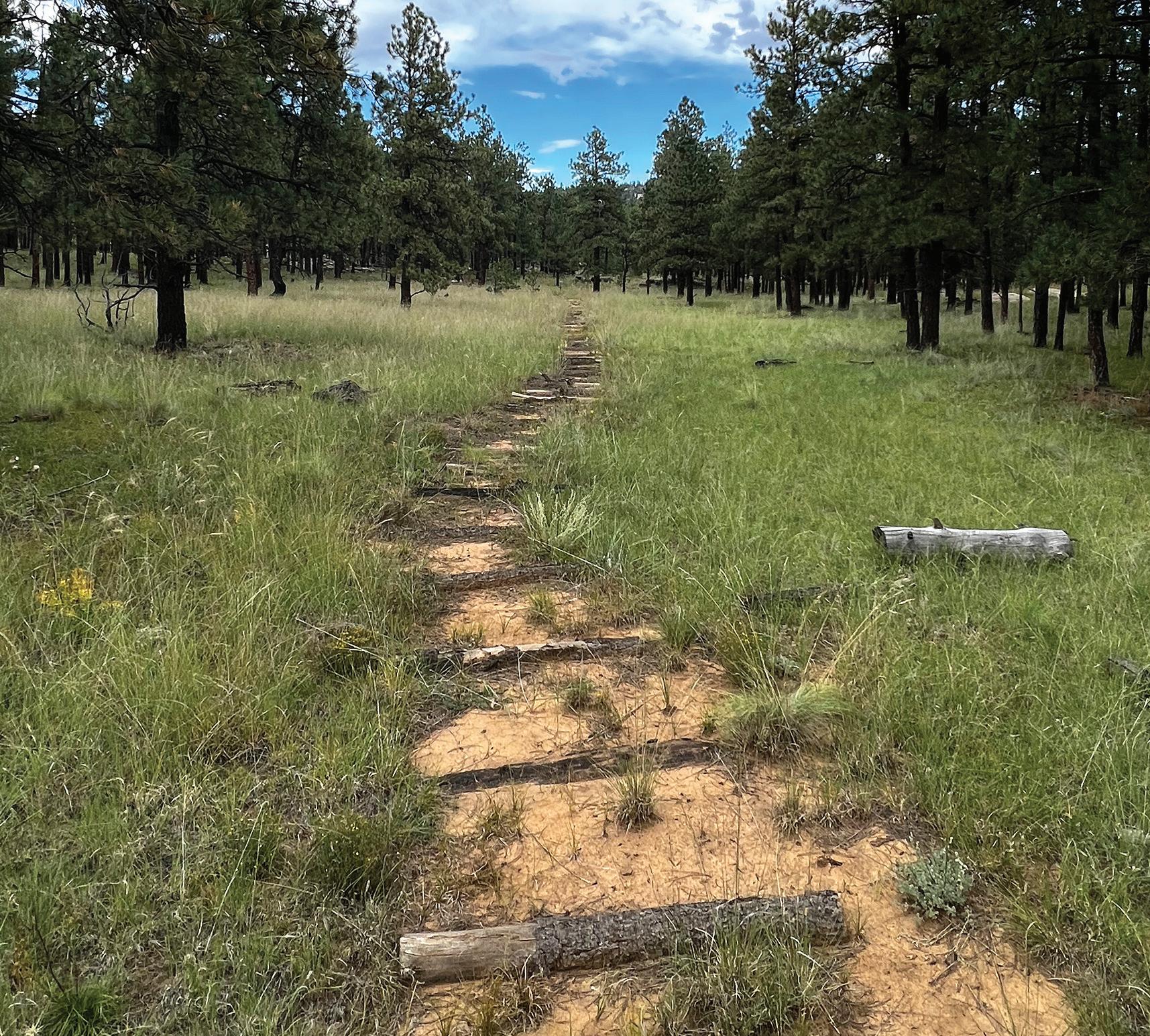
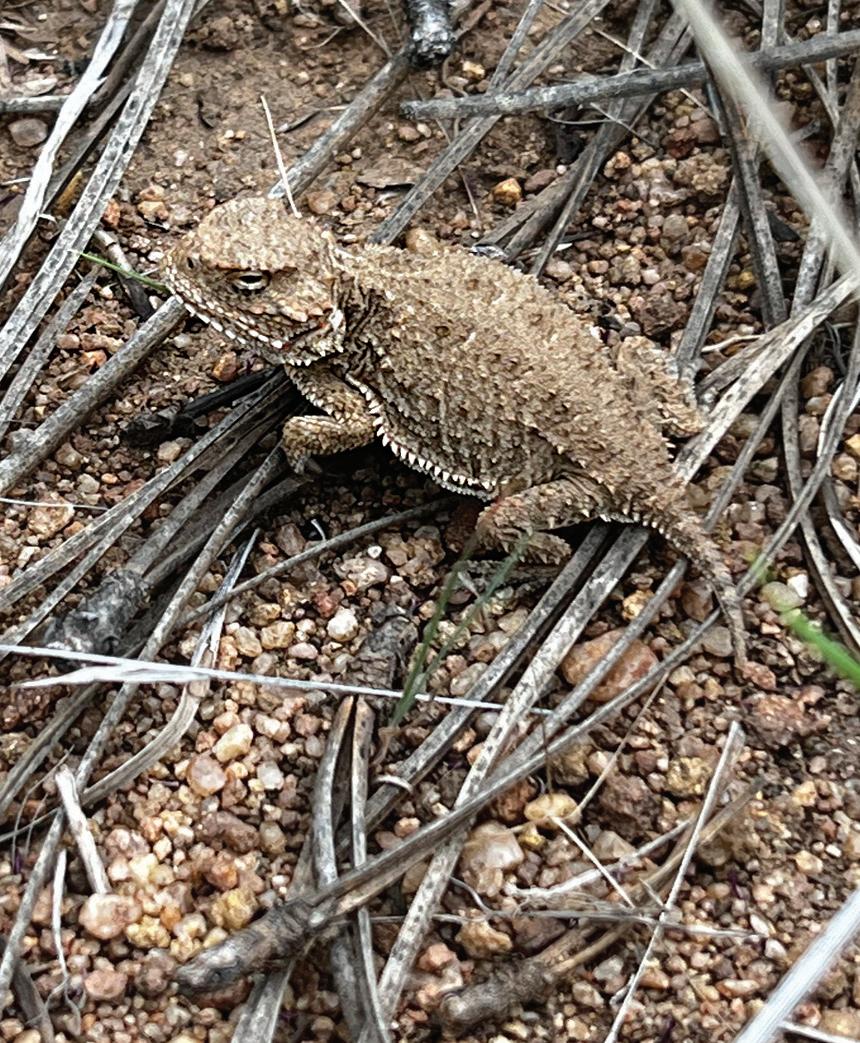
 Clockwise: A Philmont trail. Horned Toad. An abandoned homestead in Valle Vidal.
Clockwise: A Philmont trail. Horned Toad. An abandoned homestead in Valle Vidal.
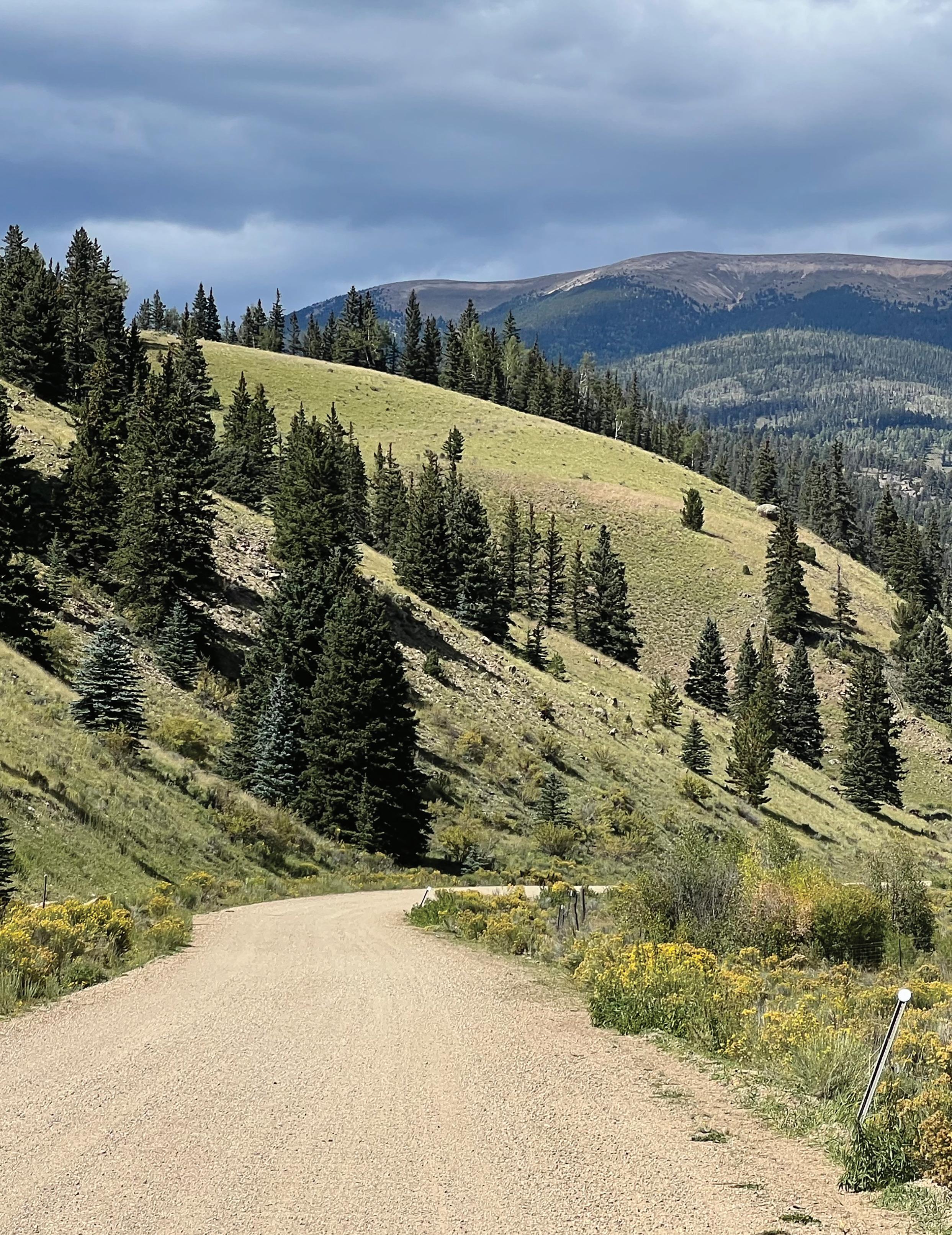 The graded road in Valle Vidal winds through narrow valleys along protected trout streams, below towering 10,000- to 12,000-foot peaks.
The graded road in Valle Vidal winds through narrow valleys along protected trout streams, below towering 10,000- to 12,000-foot peaks.

 Our camp alongside Costilla Creek within the Rio Costilla Park and Campground. The camp area is located on State Road 196 near Amalia, New Mexico, just west of the Valle Vidal Unit.
Our camp alongside Costilla Creek within the Rio Costilla Park and Campground. The camp area is located on State Road 196 near Amalia, New Mexico, just west of the Valle Vidal Unit.

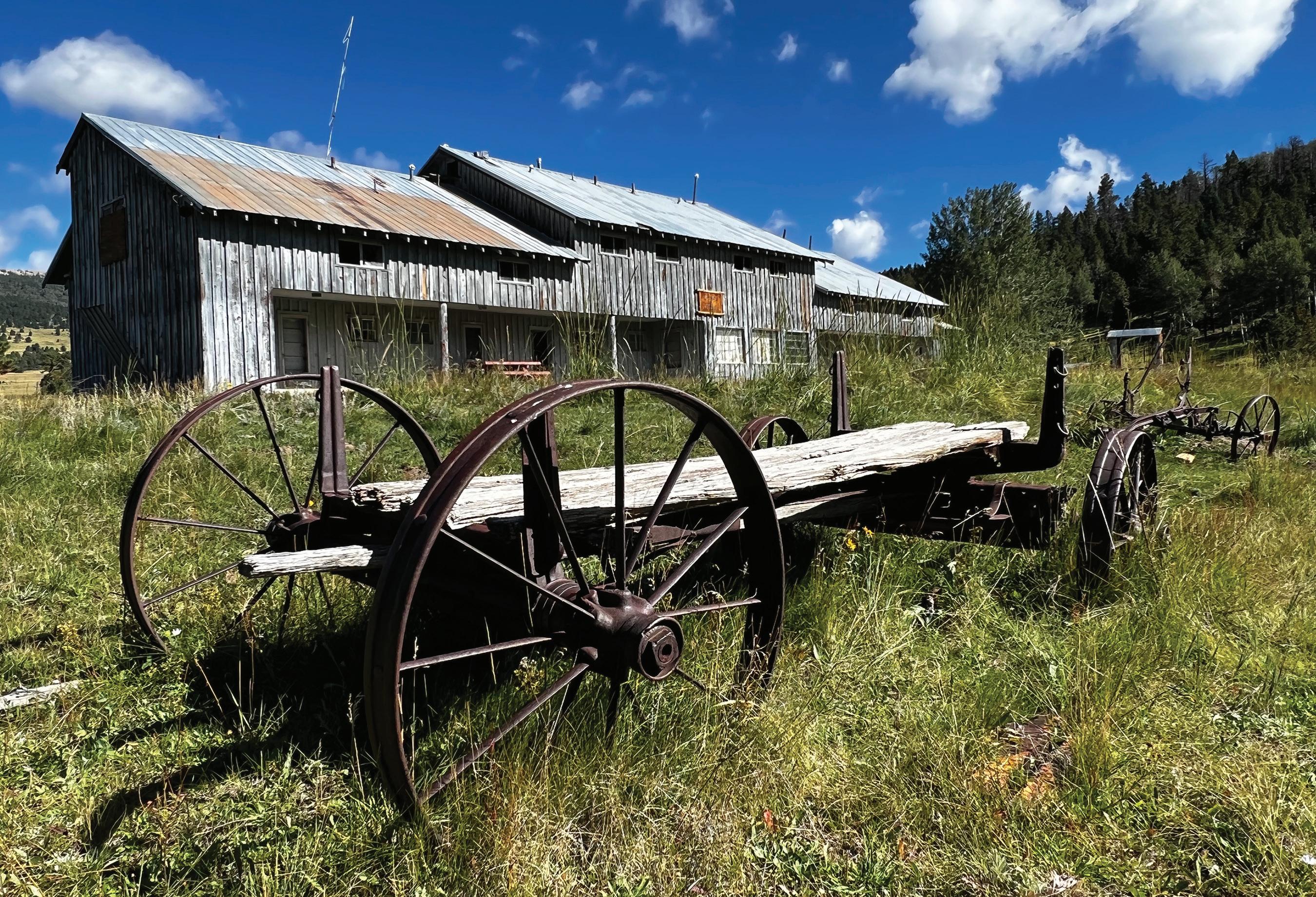
streams. The property offers camping facilities owned and managed by Rio Costilla Park Cooperative Livestock Association. Rules and regulations for the property are set forth by the organization and the New Mexico Department of State Forestry. The campsites come on a first come, first serve basis, and provide some of the finest camping along active and abundant trout streams in the state. Payment can be made in person at a drop box location, and portable restrooms are provided on-site.
Amalia:
Amalia was originally established in 1900 as the town of Pina, and the name was later changed to Amalia in 1919. At an elevation of 8,143 feet, the small community offers beautiful, quiet scenery to residents and visitors. From the early 1980s through the late 1990s, Amalia was the home of Ski Rio, a 3,000-acre ski resort that saw as many as 70,000 ski visitors in its peak year in
the 1995-1996 ski season. The resort is now closed and privately owned.
History:
Historically, the Valle Vidal Unit was a part of the two million-acre Beaubien-Miranda Land Grant from the Mexican government in 1841. The land grant is, to this day, the largest land grant in American history. Eventually referred to as the Maxwell Grant, the land became entangled in the Colfax County War in the 1880s. It wasn’t until the early 1980s that the owner at the time, Pennzoil Corporation, donated over 100,000 acres of its almost half million-acre Vermejo Ranch to the United States Forest Service.
In 2002, Valle Vidal took on a new identity as a National Wildlife Refuge, securing its place in the conservation efforts of the United States. This designation reflects a commitment to preserving the region’s diverse ecosystems, protecting its wildlife, and maintaining the delicate balance between human
activities and the natural environment.
Exploring the Valle Vidal by car unveils the pristine beauty of northern New Mexico, offering a tranquil escape into the heart of the Sangre de Cristo Mountains. As you traverse the winding roads, framed by majestic peaks and verdant meadows, the Valle Vidal reveals itself, inviting you to connect with the untouched splendor of the American Southwest.
Whether it’s the wildlife, the landscapes, or the sense of serenity, a scenic drive through Valle Vidal promises an unforgettable journey with the captivating beauty of northern New Mexico. t

Author’s Note: Follow along on this epic journey by watching the hour-long episode about Valle Vidal on our YouTube Channel.
YouTube: @4XPEDITION
108 ENCHANTED OUTPOST | SUMMER/FALL 2024
Above: Distressed ranch equipment near the old camp at Shuree Ponds.
Auto Tour Valle Vidal
The region of Valle Vidal can be reached from either of two public access points. Visitors can make a loop drive by entering from one of the two and exiting from the other. To explore the region and write this article, we entered on FR 1950, located just northeast of Cimarron, New Mexico off US Highway 64, and then eventually exited the area approximately 60 miles later in the village of Costilla, New Mexico via State Road 196. The 196 terminates at State Road 522 just south of the Colorado border, and approximately 19.5 miles north of Questa, New Mexico. The mostly graded gravel road trip is estimated to take approximately seven hours of travel time without any exploratory stops. But we recommend planning a full day of travel to enjoy all that Valle Vidal has to offer. For this article, we spent two nights camping along the way in designated camping sites. Expect at a minimum seven hours—but explorers should double that number.
PRACTICAL TIPS FOR ADVENTURERS
Check Road Conditions
Before embarking on a journey through the Valle Vidal, it’s advisable to check road conditions, especially if venturing off the main routes. Weather and seasonal variations can impact accessibility. Note that USFR 1950 is crushed gravel the entire way.
Pack Essentials
Pack essentials such as water, snacks, and a map. Mobile reception may be limited in certain areas, so having a physical map or GPS device is recommended.
Wildlife and Regulations
While exploring, it’s crucial to respect the natural habitats of the wildlife. Additionally, familiarize yourself with any regulations or guidelines provided by the managing authorities to ensure responsible and sustainable exploration.
Recommended Stops
There are fuel stations in Questa, Costilla, and Cimarron. There are no facilities available while on USFR 1950 or Highway 196. So be sure to fuel up before embarking down either of these two roads and it is recommended to bring an additional fuel canister. There are restrooms along the way at the campgrounds.
Fuel Stations
Rockies Market 31023 US-64, Cimarron, NM 87714
Duran’s Gas and Grocery NM-196, Costilla, NM 87524
Phillips 66 2668 NM-522, Questa, NM 87556
Unique Eats
Burrito Banquet 400 E 10th St, Cimarron, NM 87714
Colfax Tavern & Diner (Cold Beer, NM) 32230 US-64, Maxwell, NM 87728
Frank’s Eats & Sweets 2366 NM-522, Questa, NM 87556
for this region
109 ENCHANTED OUTPOST SUMMER/FALL 2024 |
Shuree Ponds Questa Map not to scale. For accurate trail maps use your GPS navigation tools or an official topo map
VALLE VID AL Rio Costilla Park & Campground Cimarron Campground Ring Place McCrystal Campground Iris Park Endless Blue Resort (closed) Little Costilla Peak 196 Red River Costilla Amalia Cimarron Dawson Costilla Reservoir Eagle Nest Taos USFR1950 Old Homestead 38 522 COLORADO NEW MEXICO Cold Beer VERMEJO PA RK RANC H P HILMON T Cimarron Canyon Eagle Nest Lake
MAP
Vidal Loop Raton Maxwell 505 58 © OUTPOST ALLIANCE 25 64 64
TOUR
Valle

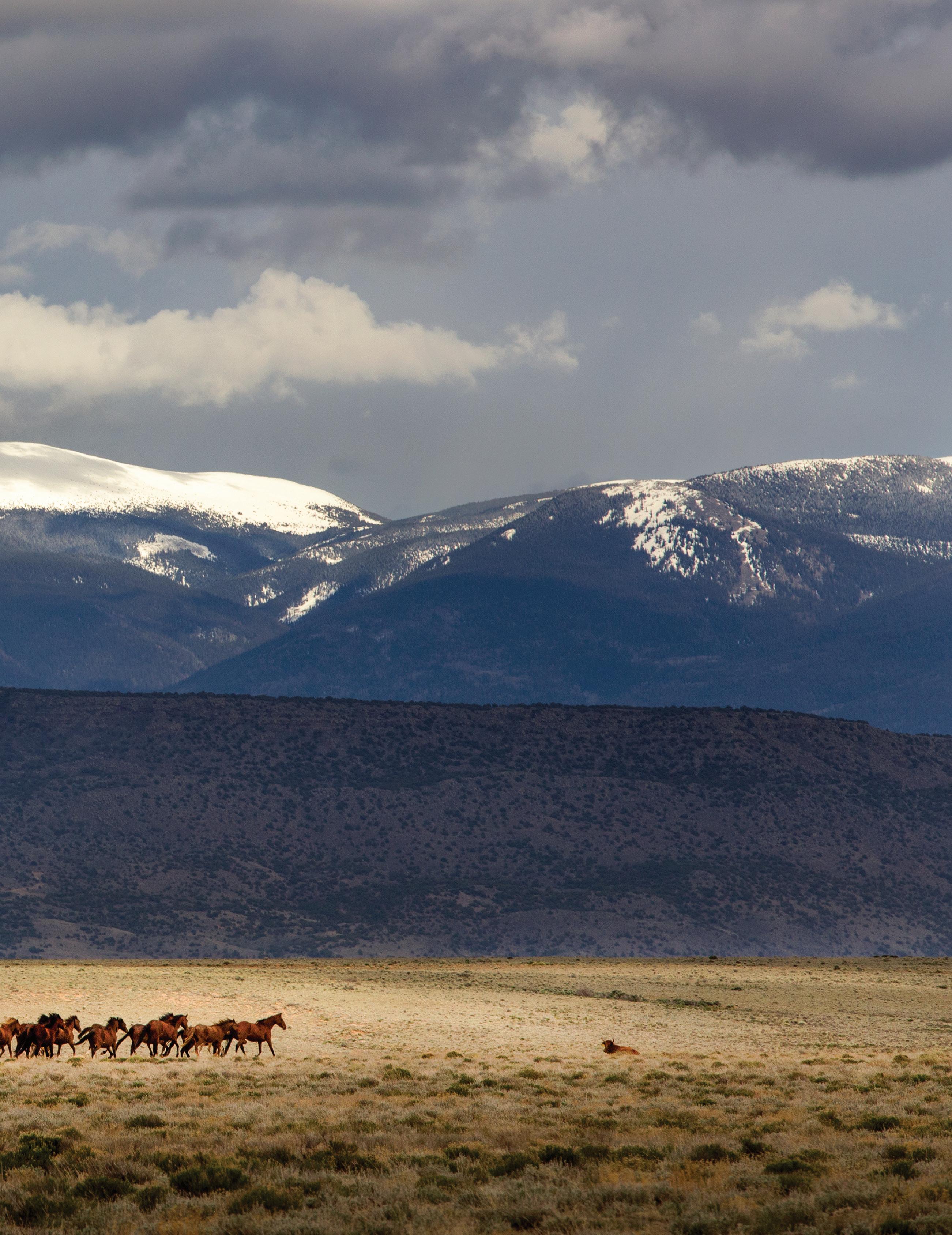
ENVIRONMENT RIO FERNANDO DE TAOS REVITALIZATION PROJECT | 112 AFTER THE WILDFIRES | 115 PHOTO JOURNAL: GERAINT SMITH | 118
A herd of wild Mustangs gallop across a high-desert prairie below snowcapped peaks in the Sangre de Cristo range towering over the San Luis Valley of southern Colorado.
Photo: Geraint Smith
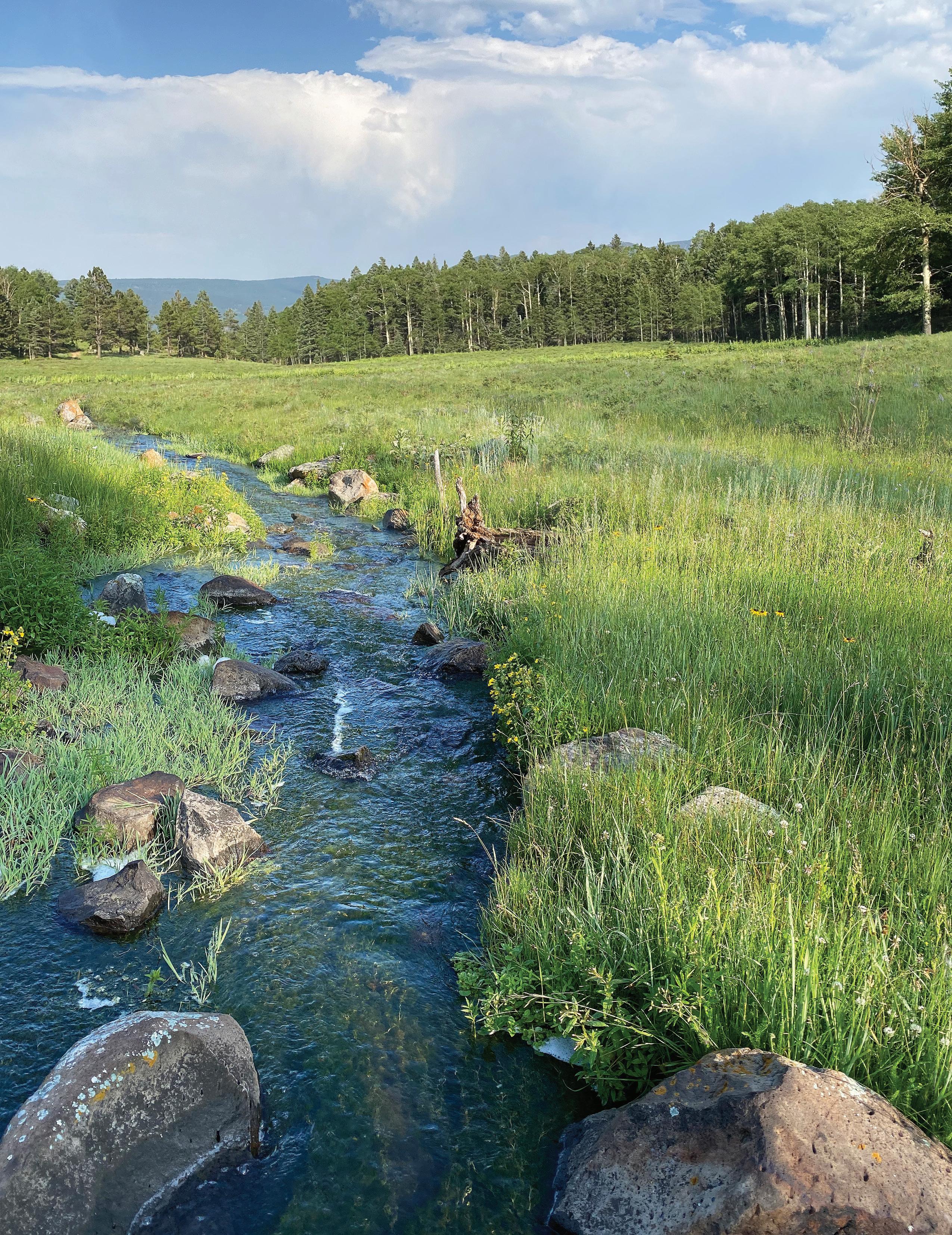
FOR THE GOOD OF THE LAND AND THE COMMUNITY
Rio Fernando de Taos Revitalization Project
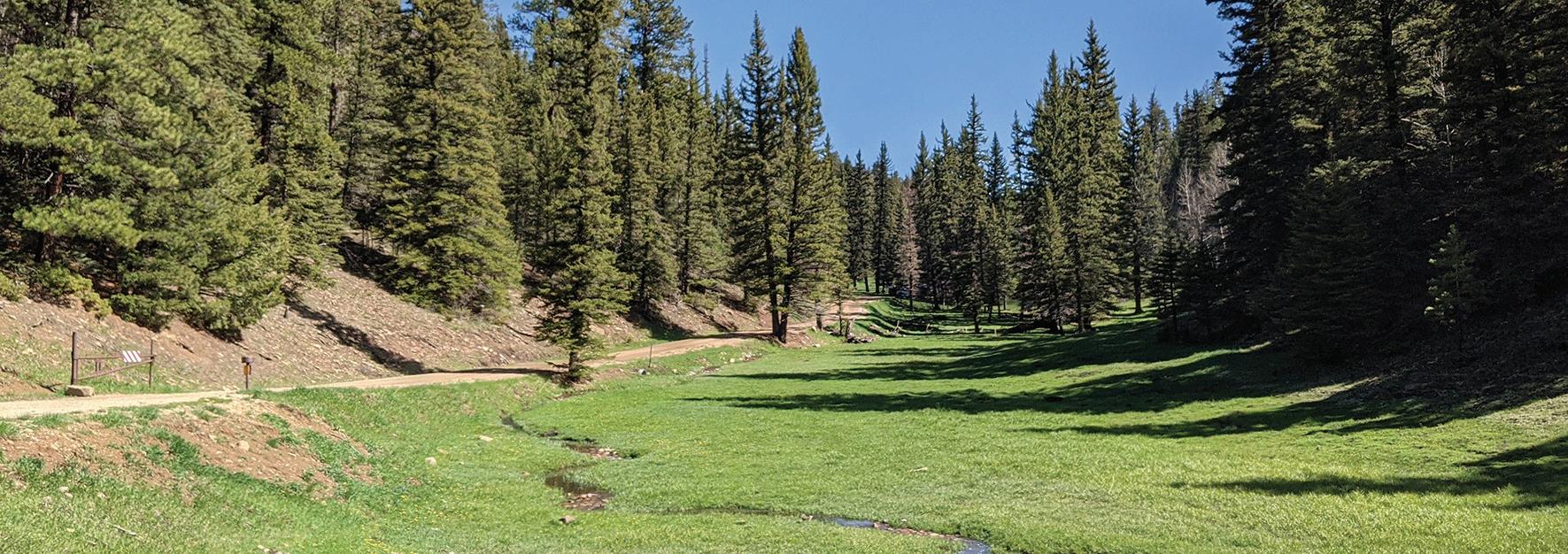
Preserving and enhancing the health of the Rio Fernando
The Rio Fernando de Taos has long been a vital watershed resource, weaving through the fabric of the region’s cultural and agricultural history. From its headwaters below Palo Flechado Ridge, rainfall and snowmelt drains from the slopes of La Jara Canyon, an offshoot canyon at the easternmost crest of Taos Canyon. From here the waterway winds, descending more than twenty-five miles west toward the mouth of Taos Canyon. The creek gains momentum as it’s fed by several side tributaries, and continues through Taos until it merges with Rio Pueblo de Taos. These waters echo the stories of ancient Puebloan communities, and Spanish settlers who recognized the significance of these tributaries for sustenance and trade.
The project’s environmental focus has aimed to restore the Rio Fernando by enhancing water quality, revitalizing riparian habitats, and improving headwater forest health. These efforts included forest thinning to avoid forest fire damage, native plant restoration along the riverbanks, erosion control measures, and improved grazing management, as well as enhancing wetland habitat, and even the reintroduction of native fish species. This should all contribute to the overall ecological health of this critically important watershed.
The Rio Fernando de Taos Revitalization Project is a collaborative effort involving multiple stakeholders, including local government agencies, environmental organizations, community groups, and interested citizens. The responsibility for such a project is distributed among various entities with shared interests in preserving and enhancing the health of the Rio Fernando.
“Local collaboration is one of the strongest and impactful tools we have to build resilience in our communities, particularly to climate change,” says Melissa McLamb, a Conservation Manager with The Nature Conservancy. “Through projects like The Rio Grande Water Fund, The Nature Conservancy has modeled the power of collaboration to address conservation challenges and improve water security at scale, with a focus on supporting place-based groups like the Rio Fernando de Taos Revitalization Collaborative (RFdT Collaborative).”
The project is a partnership of eight organizations and agencies, including The Nature Conservancy, Amigos Bravos, Taos Land Trust, Trout Unlimited, U.S. Forest Service, the Taos Valley Acequia Association, New Mexico Game and Fish, Taos Ski Valley Foundation, Taos County, and The Town of Taos. These dynamic organizations are working
together to reinvigorate Rio Fernando for the welfare of future generations.
“The wetland restoration in the headwaters that was completed in 2023 is beneficial to the Taos Canyon and the Town of Taos, because it restores the water storage capacity of the wetlands,” says Shannon Romeling, the Projects and Foundations Coordinator with Amigos Bravos. “This increases the water supply to the acequia system and Town of Taos during times of drought.” The Taos-based organization’s primary focus is to protect and restore the ecological and cultural integrity of New Mexico’s water and the communities that depend on it. Romeling continues with, “Other benefits of the revitalization include increased range habitat for grazing permittees, improving the amount of healthy habitat for hunters and recreators, sequestering carbon, and improving water quality, by acting as a filter for pollutants.”
The project is not merely an environmental initiative; it is a cultural resurgence, a commitment to preserving the lifeline that has nourished our vibrant communities for centuries. According to Romeling, Amigos Bravos envisions rivers so clear and clean that “we can bend to our knees, cup our hands, and drink directly from those waters without fear.” t
113 ENCHANTED OUTPOST SUMMER/FALL 2024 |
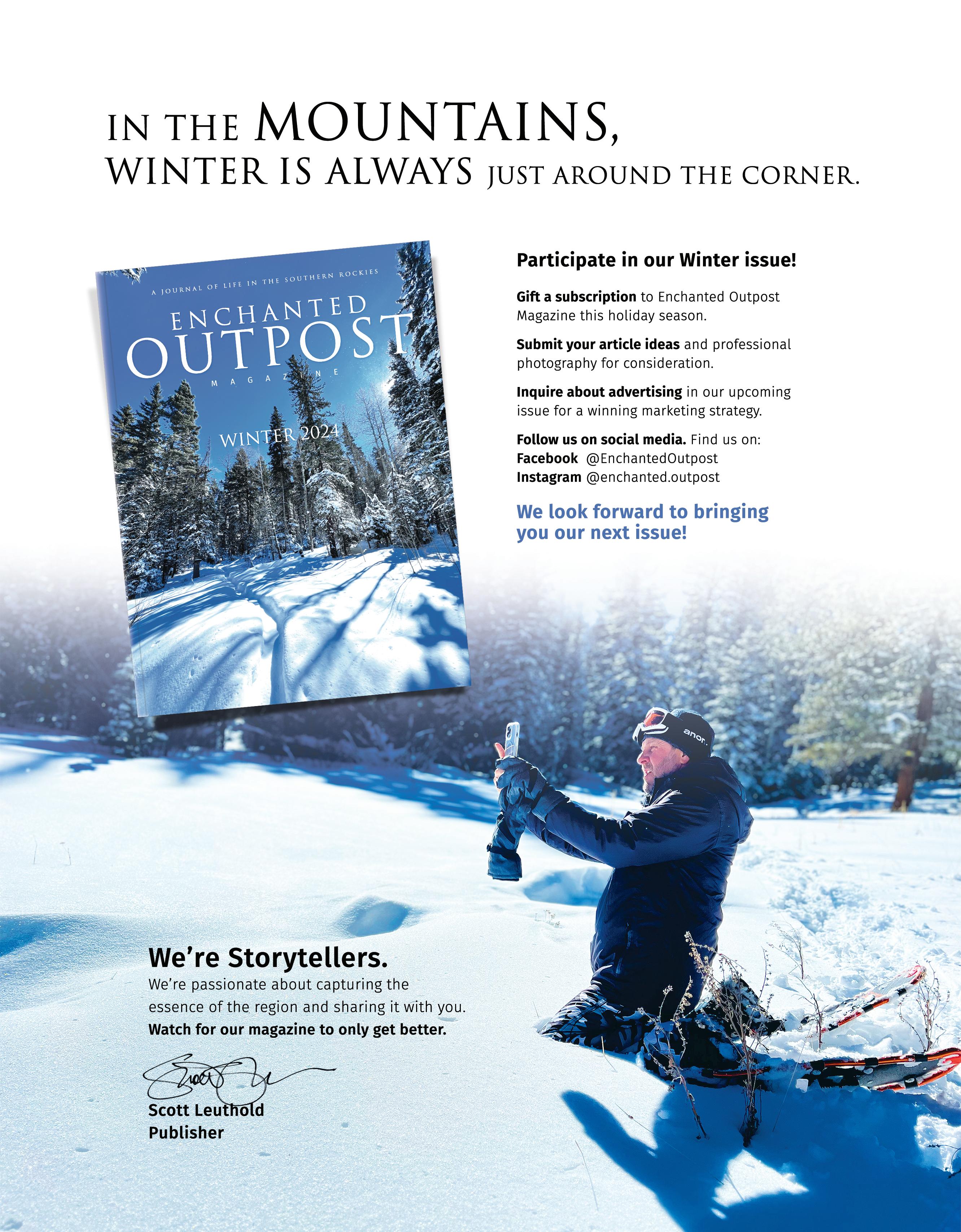

RESILIENCE RENEWAL
AND
RECOVERY AFTER THE HERMITS PEAK WILDFIRE
Among the rugged peaks, picturesque valleys, and dramatic slopes of the Sangre de Cristo Mountains, the Hermits Peak and Calf Canyon fires left an indelible mark on the landscape. As the flames consumed acre upon acre of forest, the aftermath of destruction was both heart-wrenching and transformative.
In the spring of 2022, The Hermits Peak Wildfire ignited from a controlled burn left unattended, and swiftly swept through the forests surrounding the iconic Hermits Peak. Fueled by dry conditions and gusty winds, the fire quickly became a force of nature, leaving a trail of blackened terrain in its wake. The immediate impact on the ecosystem was undeniable, with wildlife fleeing habitats and communities on edge as firefighters battled the blaze. Not long after, the Calf Canyon fire spread, and together, these two infernos grew to become the largest wildfire in New Mexico’s recorded history.
The aftermath of the wildfire revealed vast stretches of charred landscapes, where once-thriving ecosystems now bore the scars of intense heat. The blackened trees stood as solemn
sentinels, a stark contrast to the vibrant greenery that once adorned the mountainside. These physical scars are easy to see as one makes their way through the region. What is much less obvious is the scar that the inferno left on those who had been severely devastated. Our communities have experienced something that will live on in our memories, long after nature has reinvigorated its forest floor.
The wildfire’s impact on watersheds was a significant concern. Conservation efforts following the fire focused on protecting and restoring these critical areas to ensure the continued health of water resources. This was significant for the community of Las Vegas, where fires charred hillsides surrounding critical tributaries. In rainstorms, charred slopes become cascades of liquid ash sludge that can clog the arteries of
115 ENCHANTED OUTPOST SUMMER/FALL 2024 |
Drone photo of the wildfire devastation. Photo: Alfo Medeiros
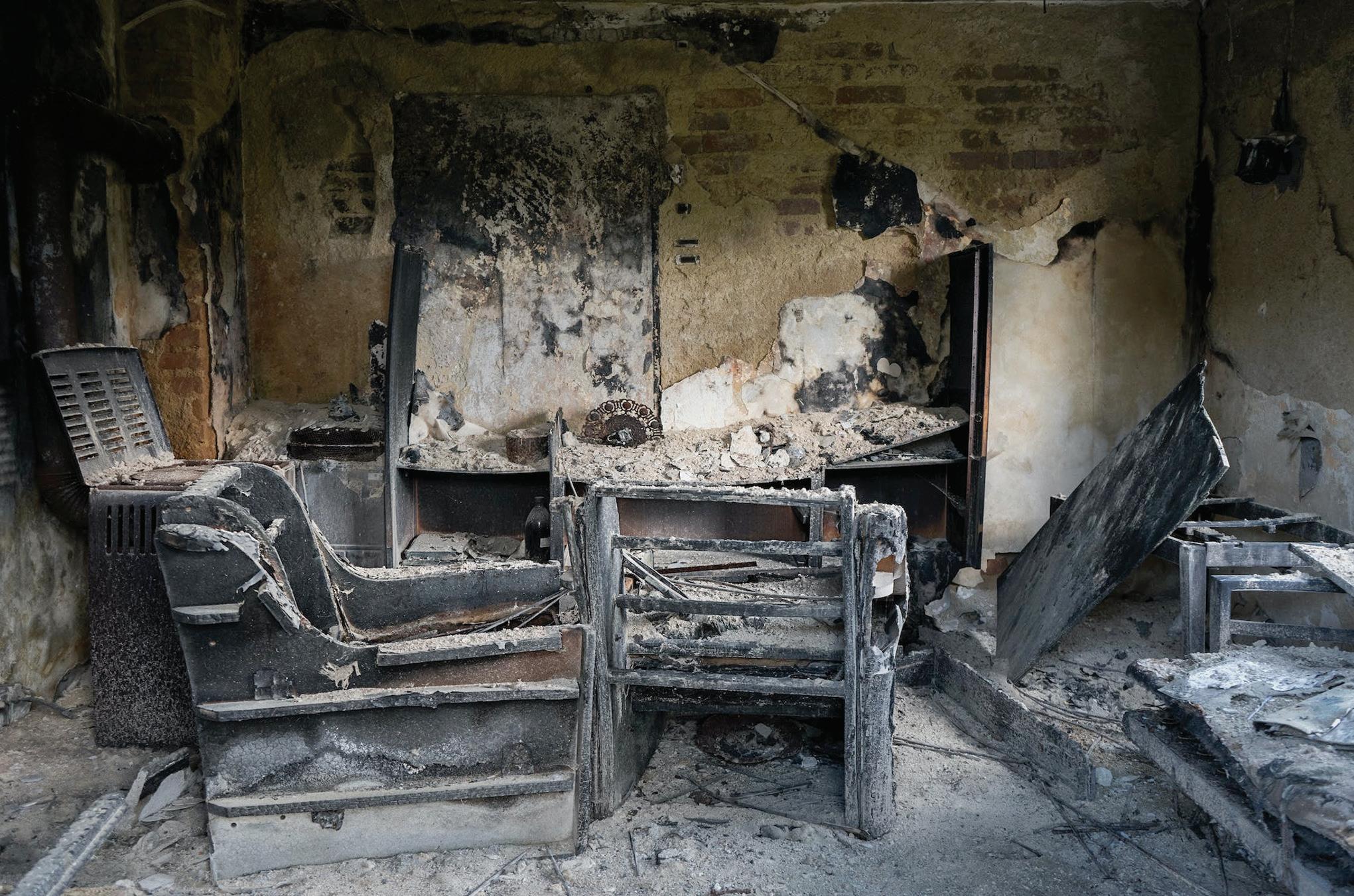
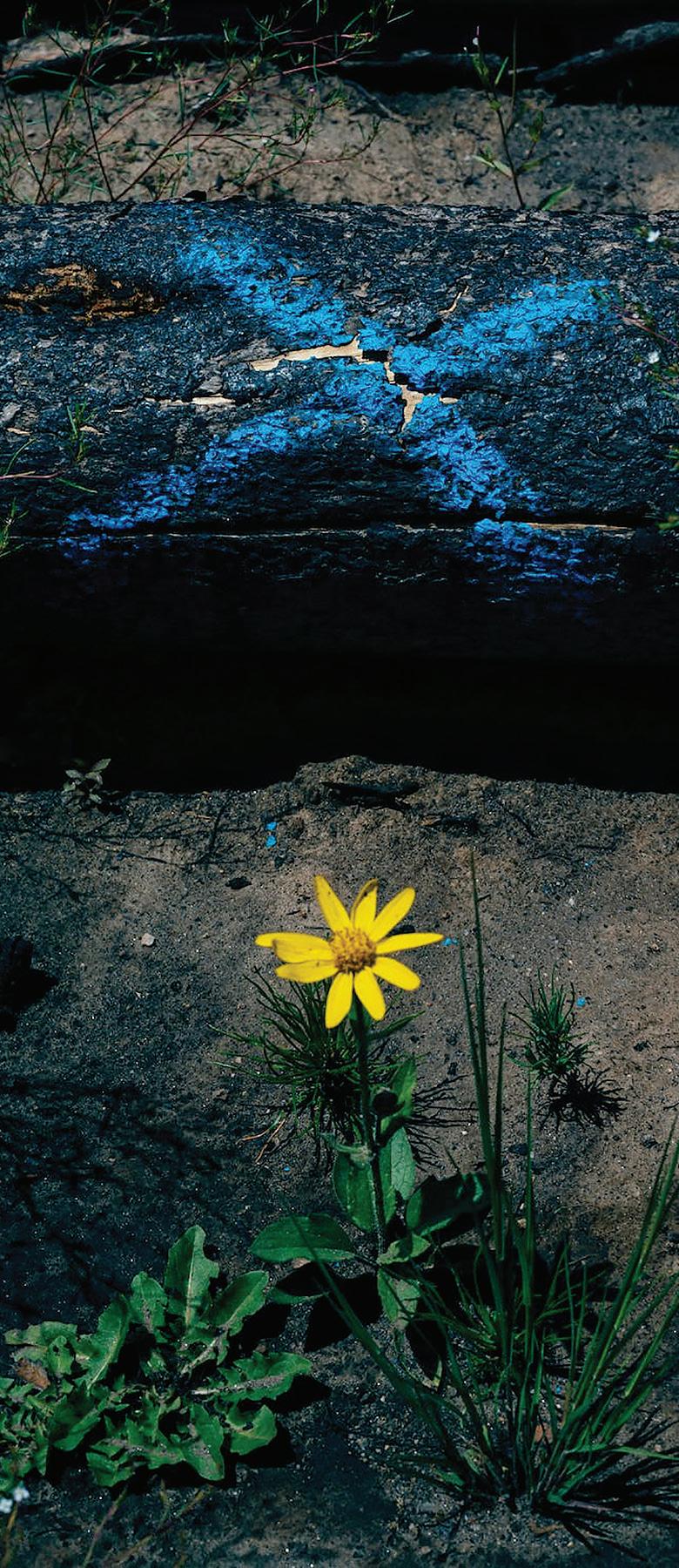
watershed networks and contaminate critical water supplies.
Tears of sorrow mixed with ash strewn down the cheeks of our people. Protecting their safety was of utmost concern at the time. Forest fire personnel did what they could to protect the many threatened ranchos of the evacuated region. The debate remains as to how consistently federal funding has provided recovery to those who needed it the most. Questions remain as to the support FEMA provided—how swiftly, how consistently, and how effectively the funding was distributed.
Today, the dust has long settled. The smoke has cleared. The region has received a blanket of winter snow for two seasons. The summertime storms have come and gone, once again saturating the soil with mineral-rich moisture. The tears of those deeply affected are likely much less common— but the memory remains, branded forever in the legacy of generations.
Now, new life springs out of the ashes. As devastating as a wildfire may be, such destruction is also transformative. Fresh flowers and plants sprout. Saplings take root from the charred pine cones. Wildlife returns as the forest
floor is covered with sustenance.
The anguish diminishes. Out of the darkness comes glimmers of hope. Neighbors help neighbors recover and eventually, new ideas take root and communities move forward and rebuild. Though perspectives may differ as to what to do and how to get it done, catastrophe brings people together more than it divides. Resilience is woven into the fabric of those who have persevered here for centuries. And it’s this fundamental characteristic of the people that makes New Mexico’s heritage so rich and vibrant.
The story of forest recovery after the Hermits Peak Wildfire is one of resilience, adaptation, and the inherent power of nature to rebound from even the most severe destruction. As the landscape transforms and life returns to the mountainside, the recovery process stands as a cornerstone of ecosystems’ interconnectedness, and the collective efforts of communities. The scars left by the wildfire become symbols, not just of destruction, but of the enduring capacity of nature and people to heal, regenerate, and thrive once again. t
116 ENCHANTED OUTPOST | SUMMER/FALL 2024
Left: The destruction of a burned home. Photo: F. Hektor
Below: Rebirth: a wildflower blossoms among a blackened forest. Photo: Alfo Medeiro
The forest is in peril and there is much more at stake than meets the eye. In recent years, more people are spending time in nature. This is a wonderful turn of events as we believe sustainability depends on more people connecting with the natural world. However, this has also placed a great deal of stress on popular places people like to visit.
Because of this, we believe it is important to educate the public and to establish a common protocol we can all turn to when arriving at, and departing from these natural places.
Camp Steward was launched to inspire more people to learn and teach such practices and to initiate stewards–noble individuals who are willing to follow a protocol.

Nature is our greatest teacher and mentor. Our mission is to maintain access to natural places, to restore the peace and beauty of wild places, to protect the communities that thrive in our forests–both wild game and human–and to ensure the beauty and tranquility of these extraordinary places is able to be enjoyed by future generations.
We need your help. The forests, the streams, the ocean and the mountain lakes need your help. It is time to raise your hand and be counted. It is time to take the Camp Steward Pledge to be a responsible citizen and be an example for others to follow. The pledge is a free service.
It is time to protect and serve.
PHOTOGRAPHY JOURNAL
photographer
an interview with geraint
SMITH
At Enchanted Outpost, we believe the intersection of art, nature, and humanity is where one witnesses the variables that create the essence of a region. It is here where human beings, with our creative minds, can translate, interpret, and relate to the vibration and frequency of the land—its people, customs, heritage, and values. Photographers and artists capture moments that offer something meaningful for us all to experience, giving us the opportunity to interpret for ourselves, through our own lens, the magic of the moment.
One such creative mind is that of Geraint Smith, a Taos-based nature photographer and sculptor. We visited with Geraint to sift through his stunning images, attempting to narrow his collection down to just a few to express his interpretation of the landscape, the wildlife, and the architecture of the land of enchantment.
EO: What draws you to capture images of nature?
GS: I think I can sum that up in a little poem my father wrote. I’ve carried it with me for many years. I read it from time to time and it always brings me back to a time when, as a child, I stood out in the meadows, on mountain tops, along cliffs and coastlines: “Silence has an eloquence surpassing that of speech; creating a space in which the heart’s thoughts can resound and deeply felt emotion can echo with a voice profound in another’s heart that listens in the silence.” As a child I spent many days, a veritable lifetime, outdoors. There was never a time in my life when I didn’t have easy access to woods and fields, rivers and mountains.
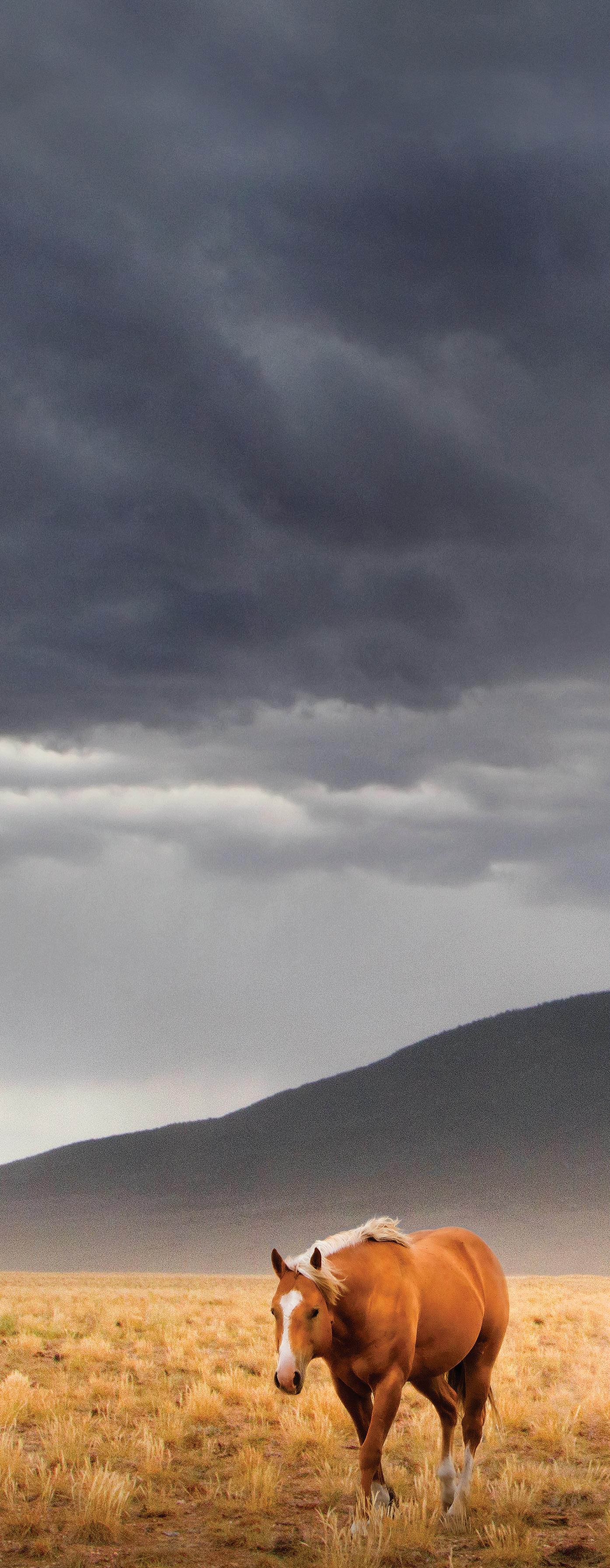
118 ENCHANTED OUTPOST | SUMMER/FALL 2024
Horses graze the vast open playa below Ute Mountain north of Questa, New Mexico. Photo: Geraint Smith
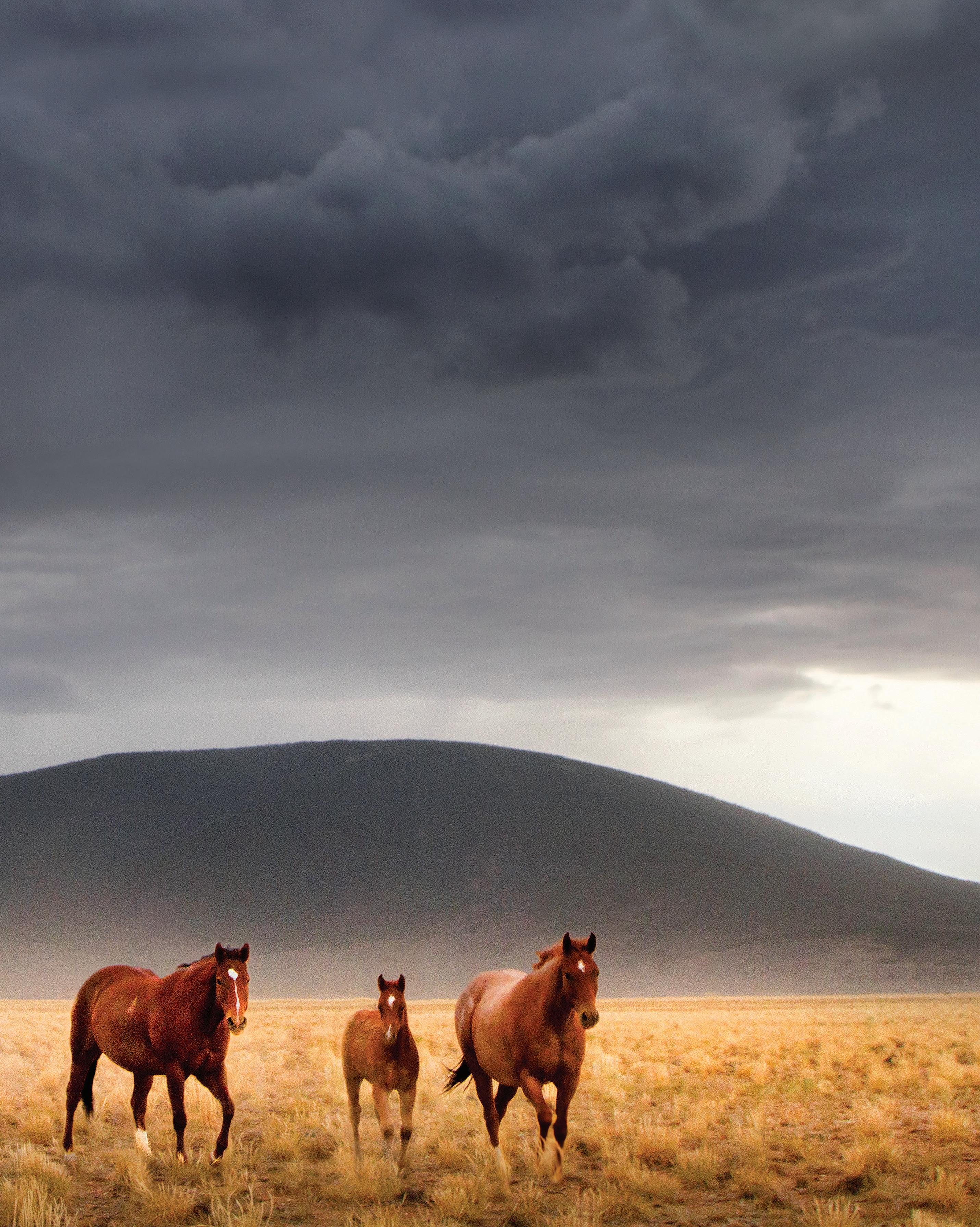
EO: What scene would you consider to be the most interesting to capture?
GS: I think the answer to this lies in “I’ll know it when I find it.” It’s what keeps me looking around the proverbial next bend.
EO: How does shooting photos help you connect with nature?
GS: Bluntly, I use photography as one excuse to get me out into nature. As a ranger in Chaco Canyon once told me, “anytime we get up to watch another sunrise is a good day.” If I add photography to that then I capture my personal experience, too. If I spend time out in nature, I might capture in my photography not only the experience but also what I felt. Dewitt Jones wrote: “The banquet is spread constantly, with no thought of whether anyone will attend. If I were receptive enough, perhaps I would see it in everything. But I’m not, so photography is one of the tools I use to help me concentrate, to help me see deeply, to block out all that is extraneous and see that which is essential.”
EO: What shot eludes you?
GS: A drone shot. I haven’t bought a drone yet. In the 1980s I got to do a lot of aerial photography for the City of Pasadena. Many of the shots were of development projects and future potential development areas around the city. When the 21st Super Bowl was played in 1987 at the Rose Bowl in Pasadena, I got to photograph it from the air with the Pasadena Police Department. The Giants defeated the Broncos, 39–20. I think—one of these days—I’ll invest the money and time into a drone. Mostly I would use it to get an extra 20 to 30 feet off the ground to avoid lowly obstacles.
EO: What kinds of photography do you shoot?
GS: Editorial, portraits, products, and stock photography. Over the last 18 years I’ve shot many cover stories for AAA Magazine and other vacation guides. I enjoy the challenge of interpreting an author’s words on travel.
A classic Pueblo-style home basks in the glow of afternoon sun; Right: Lyle Wright models a 150-yearold Navajo Late Classic Serape in Black Lake, New Mexico.
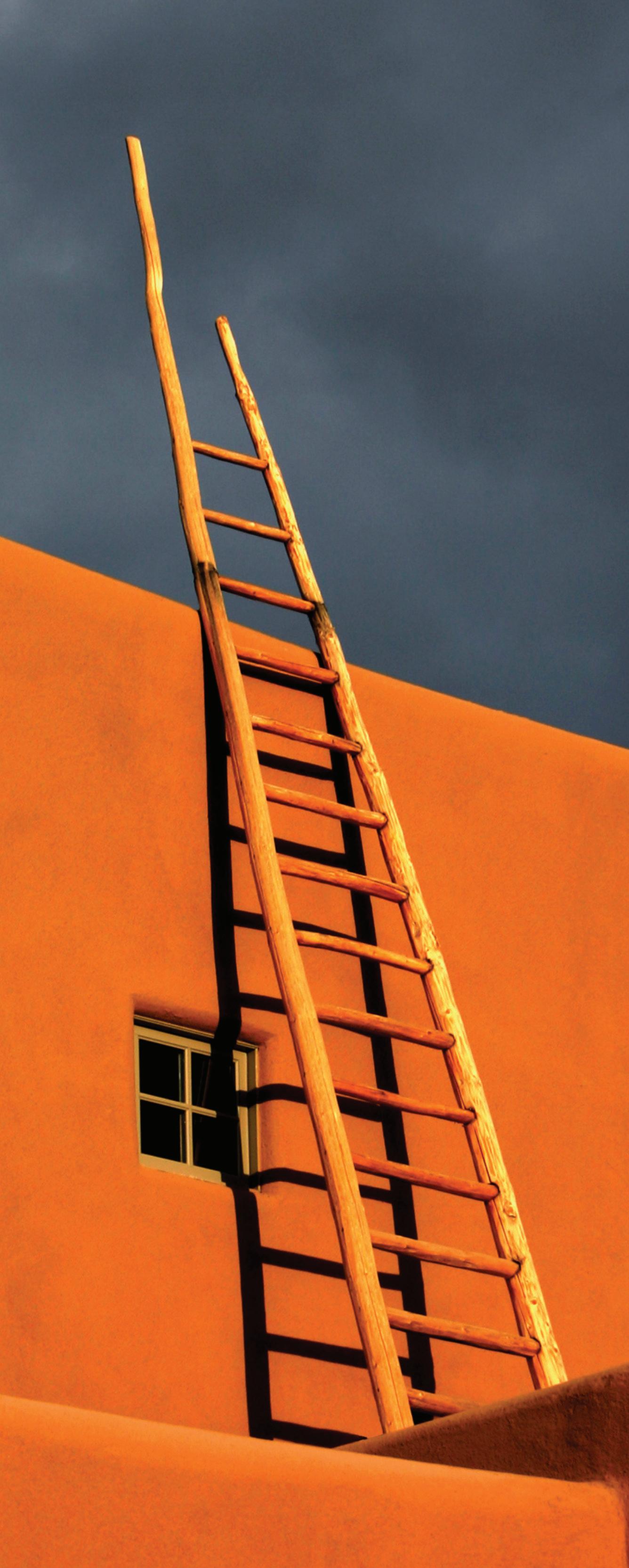
120 ENCHANTED OUTPOST | SUMMER/FALL 2024
Photos: Geraint Smith
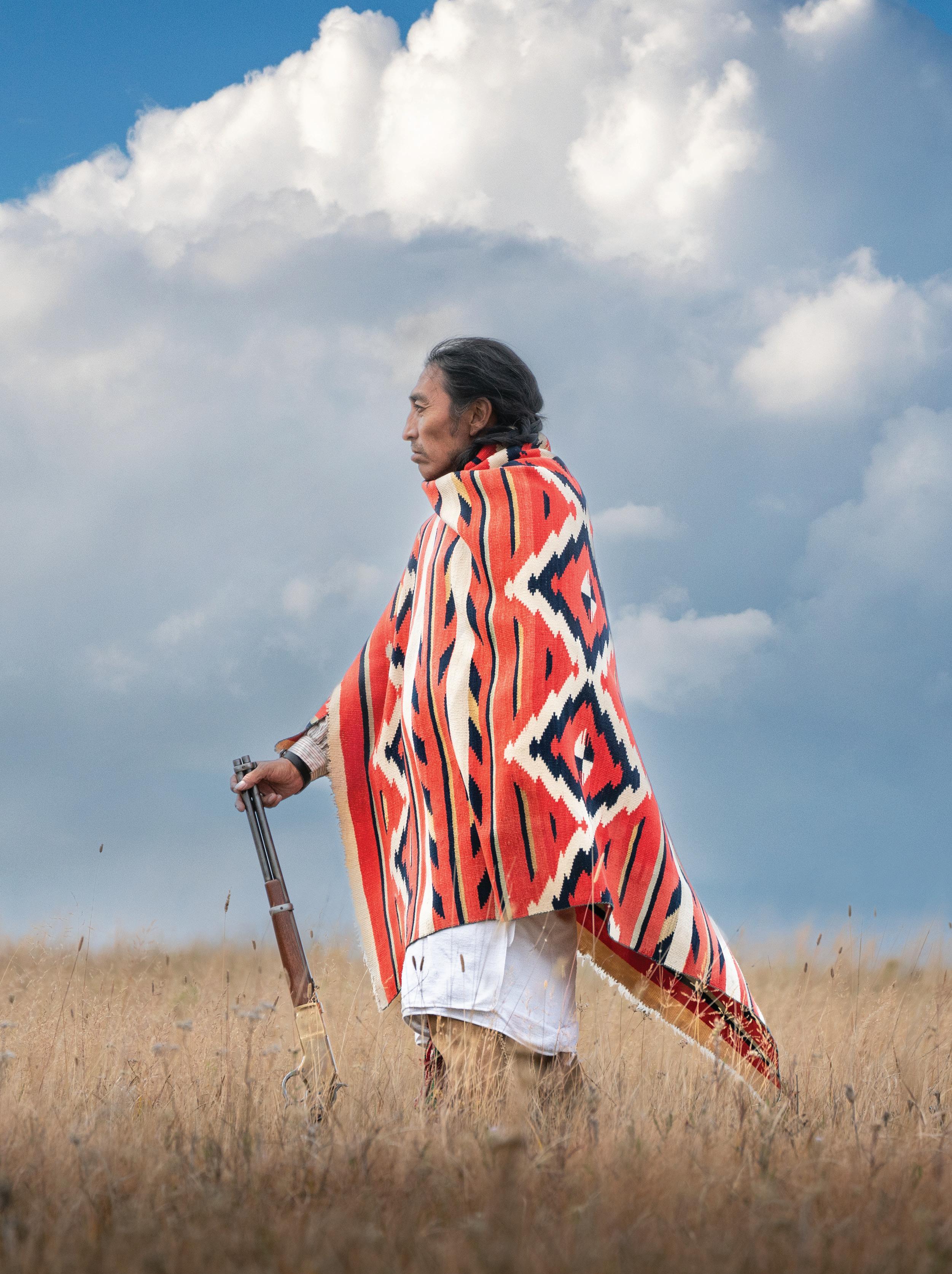
EO: What is your most common camera and lens setup?
GS: I have a Sony full frame mirrorless camera and 24-104mm lens. It’s a good, all round set up, for most landscape and scenery images I shoot. I have numerous other lenses and cameras I can choose from should I determine the scene calls for a different set up. I’m not bound by one set up, but the former is the one I use the most for landscape work. As the old adage goes...the best camera is the one you have with you.
EO: Where are your favorite places to shoot?
GS: Over the years—including on many photo workshops—I have come to love the peace and solitude I experience in the San Luis Valley with its abandoned farms and homesteads. I marvel at how lively many of these abandoned settlements must have been in their day. I swear I can hear the voices, laughter, and sorrows of those gone before. And the high alpine meadows, wildflowers, and wildlife in the Valle Vidal Unit of the Carson National Forest. In addition, the area around Abiquiu is paradise for a landscape photographer. And, not a lot can compete with the views to be found around Taos. I’m fortunate to have many areas to visit and photograph that suit my current mood and desire.
EO: How long have you been shooting photos?
GS: I’ve been a photographer and considered myself a photographer since 1976. That said, I always had access to our family cameras and remember taking a photo of my parents at eight years old. My dad used to let me carry his camera [I have a picture of me] when I was three years old.
EO: When did you start getting serious about it?
GS: I purchased a [real] camera in 1977 and began to take pictures around my home county of Yorkshire. I remember visiting a festival in Leeds. There were some gnarly looking bikers and their girlfriends who beckoned at me to photograph them. I did, and it is the moment I can remember how it felt to make portraits and to feel confident in approaching people to take their picture. After I moved to Los Angeles in 1978, I took a dive into cinematography for two years, but ultimately settled down into my love of still photography.
EO: What joy does photography bring to you?
GS: I’m fortunate to be able to do what I love and make a living. It brings me immense joy. Sometimes I wish I had a job, a normal job like normal people, with a salary and holidays, but I soon come to my senses!
EO: What’s one experience you’ve had while shooting that stays with you?
GS: In the mid-1980s I photographed the Pasadena Symphony Orchestra from within the orchestra itself. I had to photograph the musicians and conductor Jorge Mester as well for future PR material. That is the place to hear a symphony, from amongst the musicians. The whole experience is ingrained in my memory. I can’t remember the name of the music off-hand, but I can hear it in my head and can hum it note for note. I also got to photograph Sammy Davis Jr. at the Hollywood Bowl. That assignment has stuck with me equally.
EO: What drew you to Northern New Mexico?
GS: I grew up in the old country, Wales, in the coal mining valleys, until I was ten years old, and Yorkshire in the north of England before moving to California at age 22. In 1984 while living in Los Angeles, a friend suggested we make a trip to New Mexico, and Taos in particular. In Wales we always went to the cinema. I acquired a taste for Western films, many of them shot in the Southwest US. The names of Santa Fe and Taos became synonymous with my childhood image of America. I made several trips to Taos, New Mexico, from Los Angeles, visiting old friends and making new ones. I soon realized the southwest United States was where I wanted to be. Taos was the obvious choice, and in 1988 I moved here permanently.
EO: Where is your dream shooting location?
GS: The American Southwest, it’s why I live here in the middle of some of the best landscapes for photography in the world. One of my favorite go-to locations is southeast Utah and northeastern Arizona, around Monument Valley and Valley of the Gods. I’m always easily inspired when I visit there and it’s not difficult to take a good photograph in those locations.
122 ENCHANTED OUTPOST | SUMMER/FALL 2024
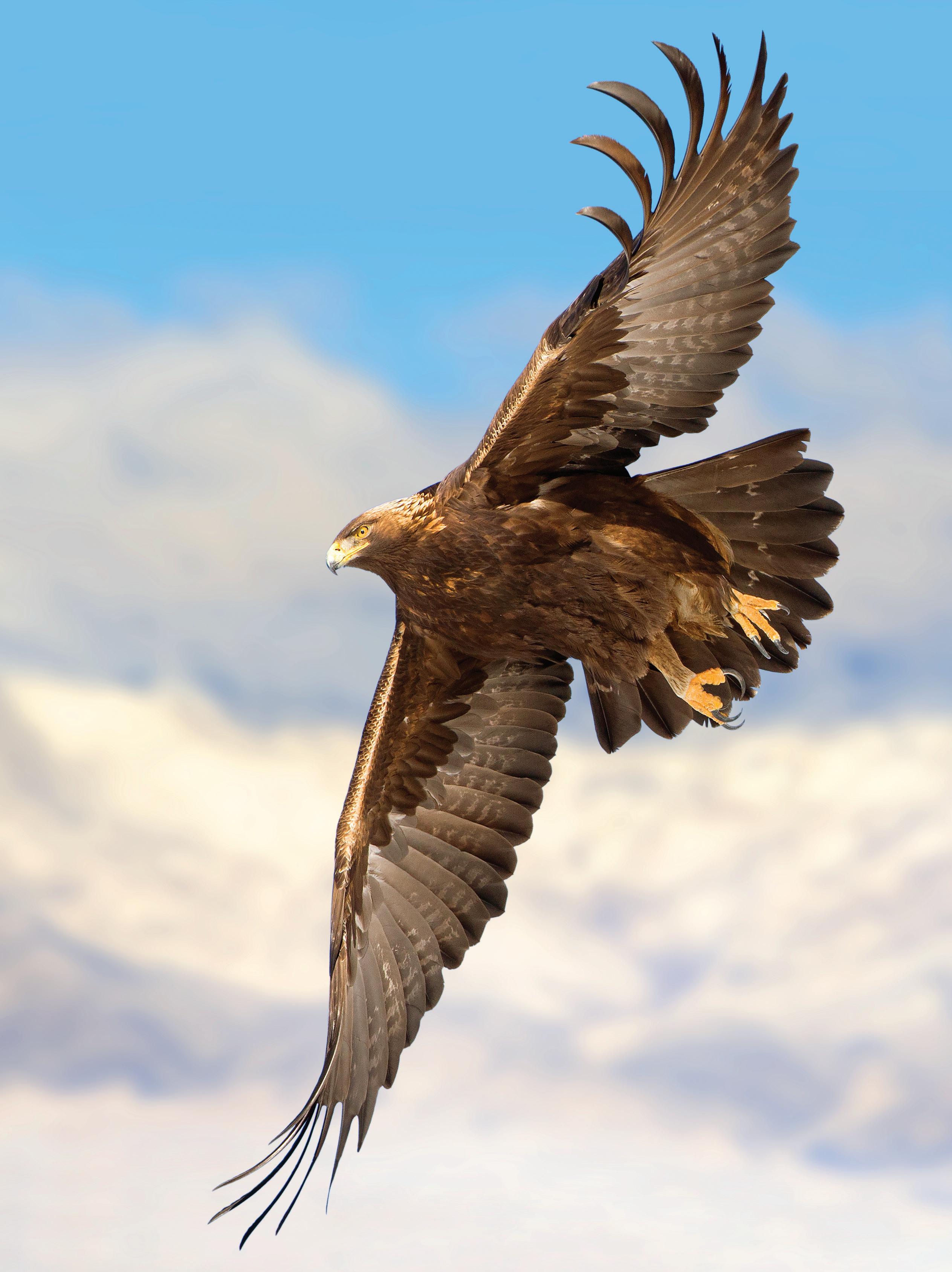
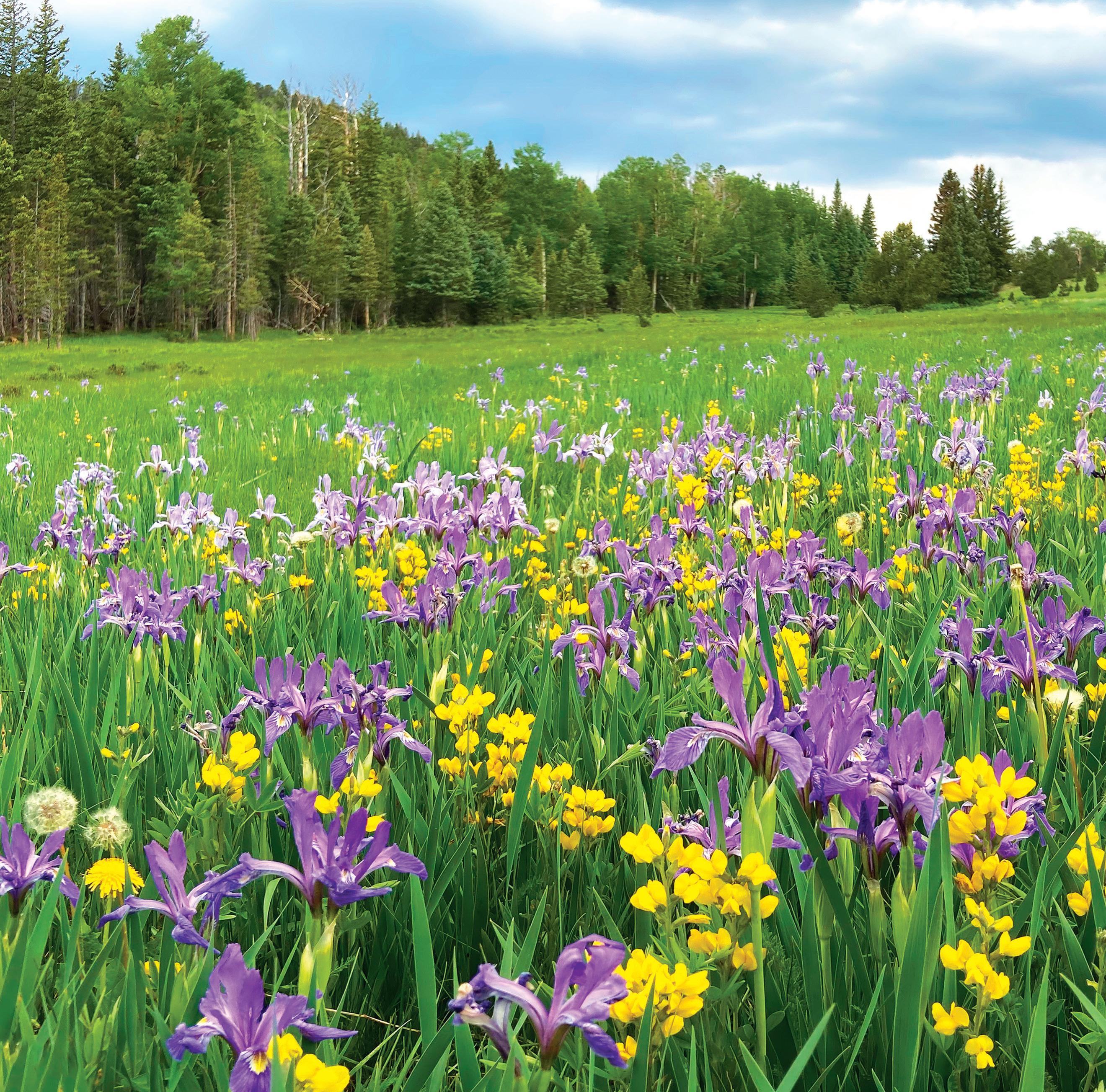
“Silence has an eloquence surpassing that of speech; creating a space in which the heart’s thoughts can resound and deeply-felt emotion can echo with a voice profound in another’s heart that listens in the silence.”
HOWARD SMITH
124 ENCHANTED OUTPOST | SUMMER/FALL 2024
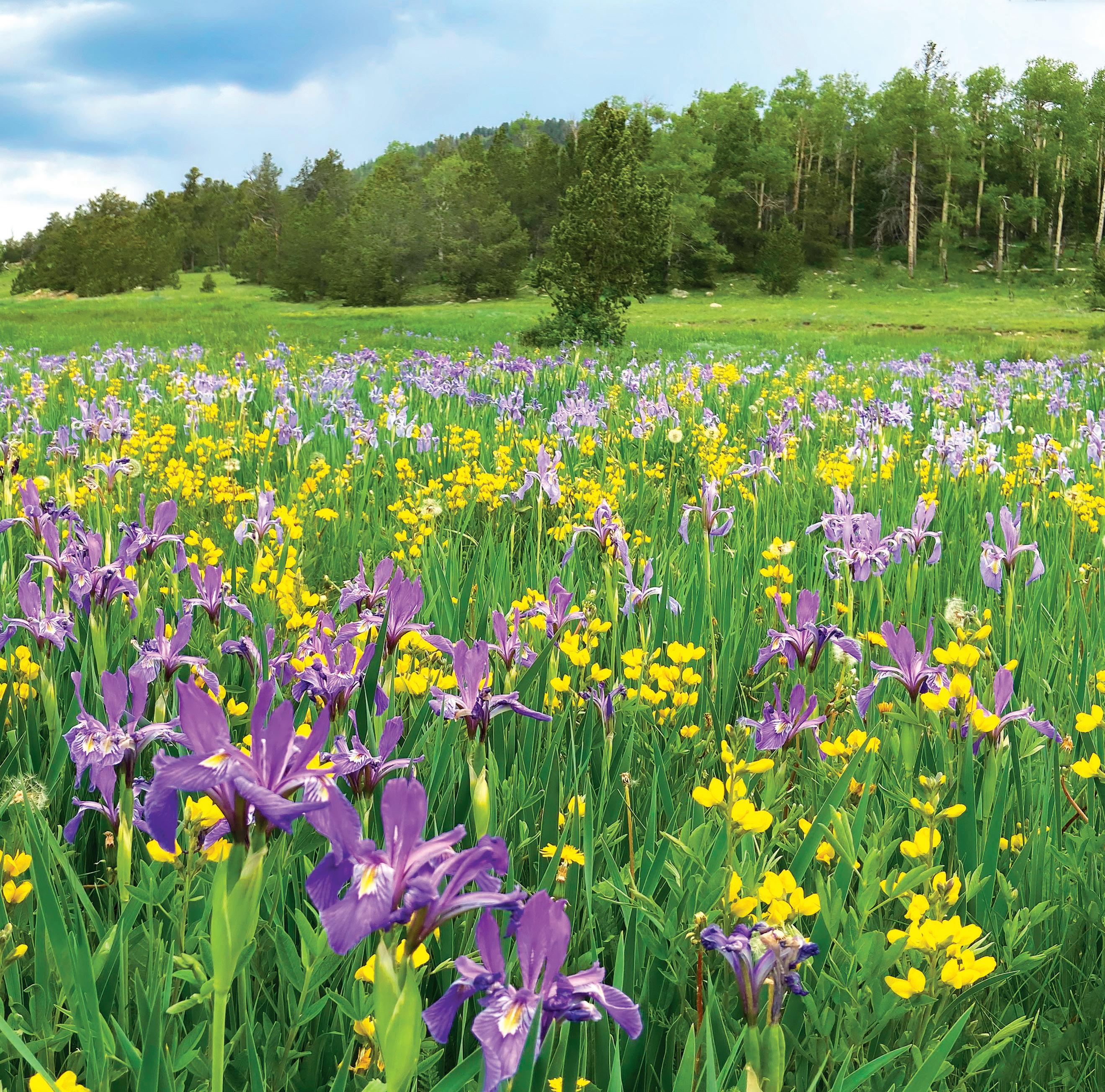
Previous spread: A Golden Eagle is captured in swift dive hunting for a meal. This spread: Iris flowers bloom across an alpine meadow. Photos: Geraint Smith
125 ENCHANTED OUTPOST SUMMER/FALL 2024 |
EO: What other photographers inspire you?
GS: Albert Moldvay, a former National Geographic Photographer I took an assignment course from at UCLA in the 1980s, Dewitt Jones, NGP and a photography magazine columnist, Ansel Adams, W. Eugene Smith, and Henri Cartier Bresson.
EO: What software do you use to edit images?
GS: I’ve used Photoshop® since I began working with my images on the computer. I started using the program after scanning my black and white negatives and transparencies. With the advancement in digital cameras, it was a natural transition. I review images in Adobe Lightroom® and then work in Photoshop® for the fine editing. It’s a powerful piece of software—Ansel Adams would have loved it!
EO: What kinds of birds and other wildlife can be captured in our region, and which are the most difficult to capture?
GS: I haven’t seen a mountain lion. They live in my neighborhood, but I haven’t had the opportunity in all the years to see one. Almost all the birds and animals listed below can be seen here.
From my book:
Over the years, throughout every season, I have enjoyed many trips into this region. There are Great Blue Heron, Bobcat, Bighorn Sheep, Pronghorns, Mule Deer, Elk; Golden and Bald Eagles, Red-tailed, Rough-legged, Coopers and Swainson’s Hawks, Peregrine Falcons, Northern Harriers, Pygmy Owls, Kestrels, Turkey Vultures and Osprey; Bufflehead Ducks, Common Goldeneye, Snow Geese, Canada Geese, Mallard, American Coots, Bluebirds, Townsend Solitaires, Northern Flickers, Lewis’s Woodpecker, and the ubiquitous Ravens. Once I photographed a Herring Gull (in the Rio Grande in Pilar, clearly off course). The list goes on. Elk are very active in the area during the winter months, and can be seen frequently between Pilar, New Mexico, the Colorado border and beyond. Beaver, Otter, and Pronghorn are present throughout the year.
Bighorn sheep can often be seen on the rim of the Rio Grande Gorge using their inimitable rock-climbing skills, while they observe visitors clinging to the handrails on the high bridge.
Golden Eagles nest in the security of inaccessible ledges in the gorge cliffs and reside here year-round. To see all or any of these magnificent creatures, intimate details of nature, and vast landscapes and canyons we share, venture into this area with reverence and wonder. It just might change your life.
Long before the Rio Grande del Norte National Monument and its highlighted boundaries on the new map, I hiked and biked trails I didn’t know were on a map. I bushwhacked down side canyons with slick rock, inner-tubed and hiked along the river, all the while observing the natural environment. It transformed me. t

Geraint Smith Photographer
View more images and book a photo tour with Geraint at: geraintsmith.com
126 ENCHANTED OUTPOST | SUMMER/FALL 2024
Right: Capturing the light over the Sangre de Cristo Range from Rio Grande Gorge Bridge. Photo: Geraint Smith


Located outside of our distribution area? Consider a subscription to Enchanted Outpost! Annual Subscription for $24.99 To Subscribe Visit EnchantedOutpost.com and click on Subscribe or, point your smart phone camera at the QR Code to the left and tap the screen to get started. Sign up for an annual subscription to Enchanted Outpost Magazine. We will send you two issues per year of our biannual magazine: Summer/Fall and Winter/Spring mailed right to your door. Plus get special bonus offers only available to subscribers to make your experience visiting our region even better!
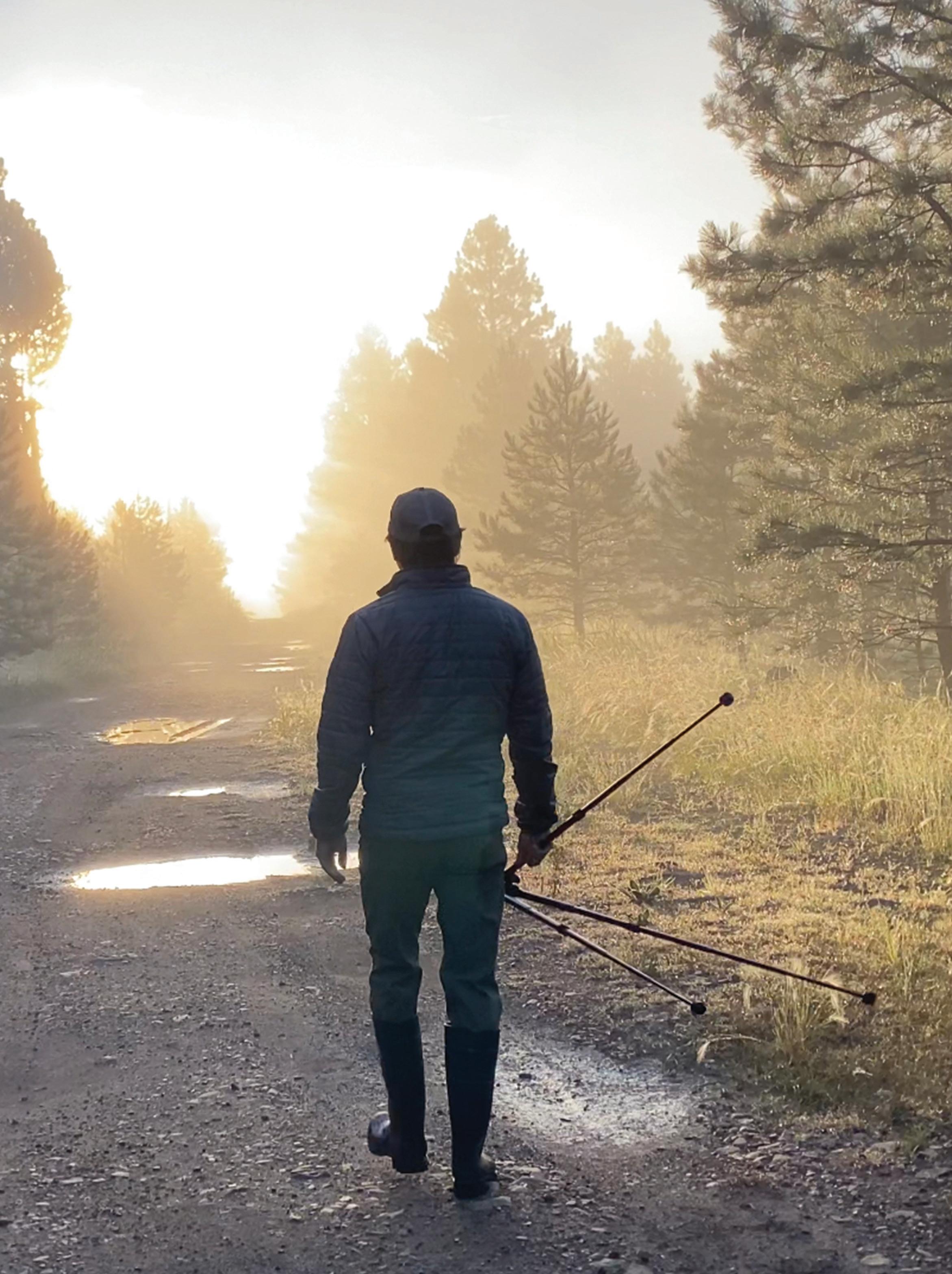
Life, if well lived, is long enough.
- Lucius Annaeus Seneca
ENDCAP
A backroad stroll in the morning fog in Black Lake, New Mexico offers an ideal opportunity to capture surreal images of sun rays through the pine forest.
Photo: Heather Leuthold
OUR ADVERTISER CLIENTS HAVE DISCOVERED WHAT MAKES US DIFFERENT.
We are not a news organization. We are a strategic content marketing organization with more than 10 national awards for design including recognition from the International Academy of Digital Arts and Sciences at the 14th Annual Webby Awards®.
We’re a true lifestyle magazine. We’re committed to delivering a magazine with content in every single issue that appeals to long-time residents, new-comers, and visitors alike. If we find the subject matter interesting, informative, and entertaining, we think our readers will, too. No broken records. No predictable repeat content. No question.
We’re municipality inclusive, not exclusive. Our goal is to build a regional brand that leaves no town or business behind. With a regional strategic initiative for economic growth, everyone wins. A broader focus appeals to a broader audience. Our goal is for businesses to be able to spend their advertising dollars in one publication while reaching a comprehensive audience.
We were born to brand. We’ve spent a tremendous amount of time mastering the art of perception which dictates consumer conversion and retention. We’ve helped hundreds of companies launch and strategically grow. Some of those companies have gone from start-up to an IPO. We’re proud to have worked with over 500 clients from small businesses to Fortune 500 publicly traded companies to drive traffic.
We care about you and your business. We will never ask if you’d like to run the same ad again without first evaluating our performance. Our business won’t thrive unless your business thrives. We constantly self-evaluate to ensure every time we visit you are delighted to see us. Our clients are our friends and we take care to nurture our friendships.

Advertise in a world-class publication at a fraction of the insertion cost of other regional publications.
Award-winning design with fresh ideas included with every ad purchase in our publications.
No hidden fees. What you see is what it costs.
Special ad rate discounts and first right of refusal on preferred positioning for recurring advertisers. A
No rate increases in a calendar year (two issues per year).
Reserve your advertising space in our Winter 2024 issue of Enchanted Outpost.
We’ll help you create a winning marketing strategy.
To reserve visit: EnchantedOutpost.com/eo-ads/


publication of Outpost Alliance,
LLC.
Watch an introduction video from Scott.







 Gabriel Traister Robbie Puskarich
Gabriel Traister Robbie Puskarich






























































 the view from here.
the view from here.







































































 By Heather Leuthold
By Heather Leuthold








 Geum triflorum, also known as Prairie Smoke, waves in the breeze on a high elevation prairie located in the Sangre de Cristo Range. As the common name implies, the wildflower is primarily native to North American prairies, but it also grows throughout the western and the northern states. It is a flower that attracts honeybees in midsummer.
Geum triflorum, also known as Prairie Smoke, waves in the breeze on a high elevation prairie located in the Sangre de Cristo Range. As the common name implies, the wildflower is primarily native to North American prairies, but it also grows throughout the western and the northern states. It is a flower that attracts honeybees in midsummer.
















 BY HEATHER LEUTHOLD
BY HEATHER LEUTHOLD









































 Early fall brings a change of colors on the high alpine aspen leaves surrounding Middle Fork Lake.
Photo: Scott Leuthold
Early fall brings a change of colors on the high alpine aspen leaves surrounding Middle Fork Lake.
Photo: Scott Leuthold














 An old corral sits on a ridge overlooking the vast Valle Vidal Unit of the Carson National Forest.
An old corral sits on a ridge overlooking the vast Valle Vidal Unit of the Carson National Forest.



 Clockwise: A Philmont trail. Horned Toad. An abandoned homestead in Valle Vidal.
Clockwise: A Philmont trail. Horned Toad. An abandoned homestead in Valle Vidal.
 The graded road in Valle Vidal winds through narrow valleys along protected trout streams, below towering 10,000- to 12,000-foot peaks.
The graded road in Valle Vidal winds through narrow valleys along protected trout streams, below towering 10,000- to 12,000-foot peaks.

 Our camp alongside Costilla Creek within the Rio Costilla Park and Campground. The camp area is located on State Road 196 near Amalia, New Mexico, just west of the Valle Vidal Unit.
Our camp alongside Costilla Creek within the Rio Costilla Park and Campground. The camp area is located on State Road 196 near Amalia, New Mexico, just west of the Valle Vidal Unit.




























